
Welcome to our blog.

Welcome to our blog.
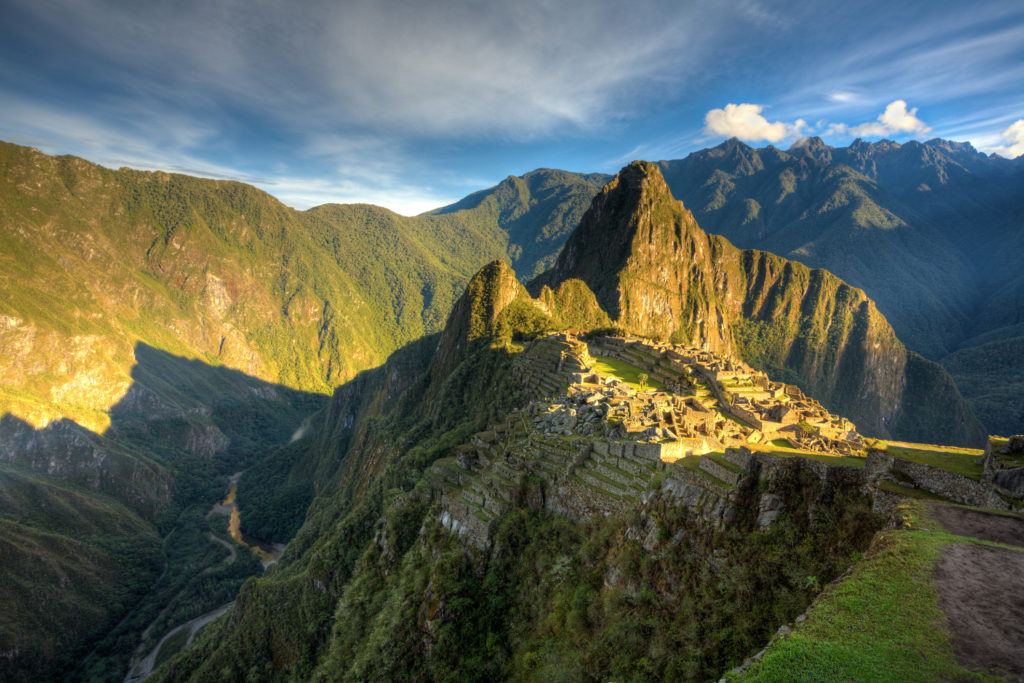
There is no doubt that Peru is one of our all-time favorite destinations. With beautiful and diverse landscapes, a rich culture, fascinating Inca history, and world-class cuisine, Peru truly has it all. Whether you have one week or one month to spend in Peru, there is one thing for certain: You will want to return again and again. We spent 2.5 months in Peru (mostly in the Cusco region) and covered a lot of ground, seeing some of the best sights and having incredible experiences. And so we came up with the PERFECT 14 day family adventure itinerary in Peru.
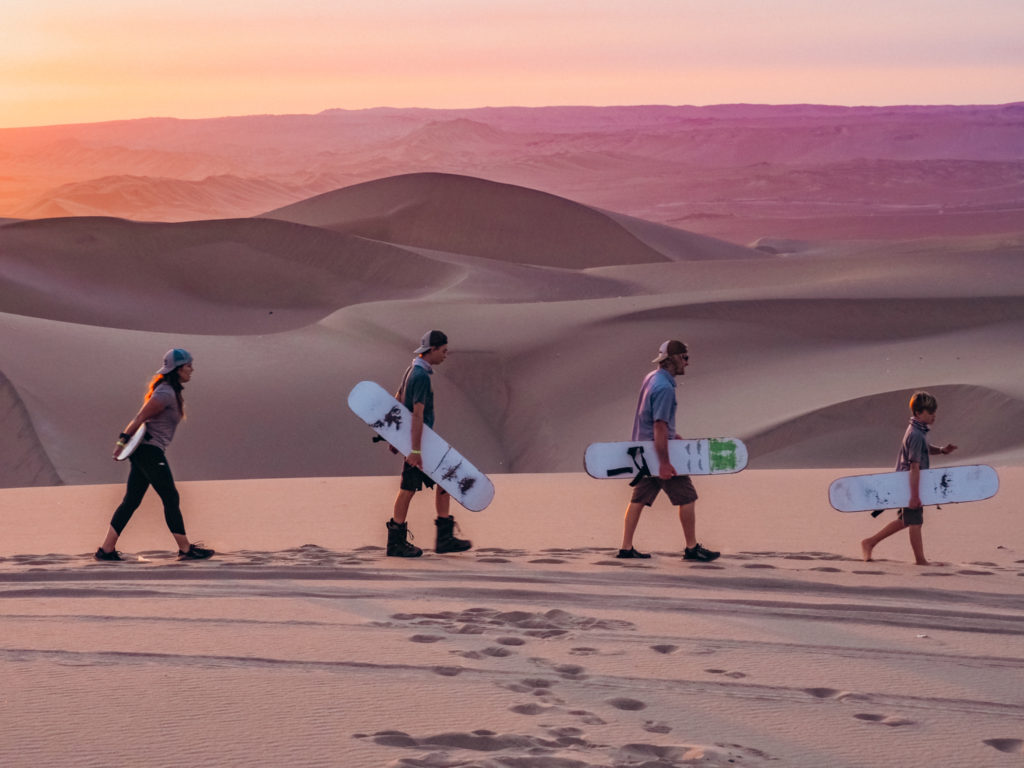
If you’re coming from the States, there aren’t a lot of direct flights to Lima (the largest international airport in Peru), so most likely depending on where you are flying from, you will have 1-2 stops on your way to Peru. The most common layovers seem to be in Houston, Ft. Lauderdale or Los Angeles. In other words, be prepared for a long travel day. Once you arrive to Peru, you will need a connecting flight to Cusco, which is the gateway to the Sacred Valley and other famous sights such as Machu Picchu and Rainbow Mountain.
We use a variety of apps to track flights, with Momondo and Sky Scanner being our favorites for finding the best deals. It’s also important to note which seasons are high and low in Peru, which will most likely dictate prices. April to October is the high or busy season in Peru, and also the dry season (June being the driest month). Peak tourism is usually between June and Sept. The low season, which is December to March is also the wet season (Jan being the wettest month), however it can be a great time to visit Peru. Prices are lower, there are less tourists, and it’s also greener! Make sure to check out average precipitation in Cusco if you are concerned about rain.
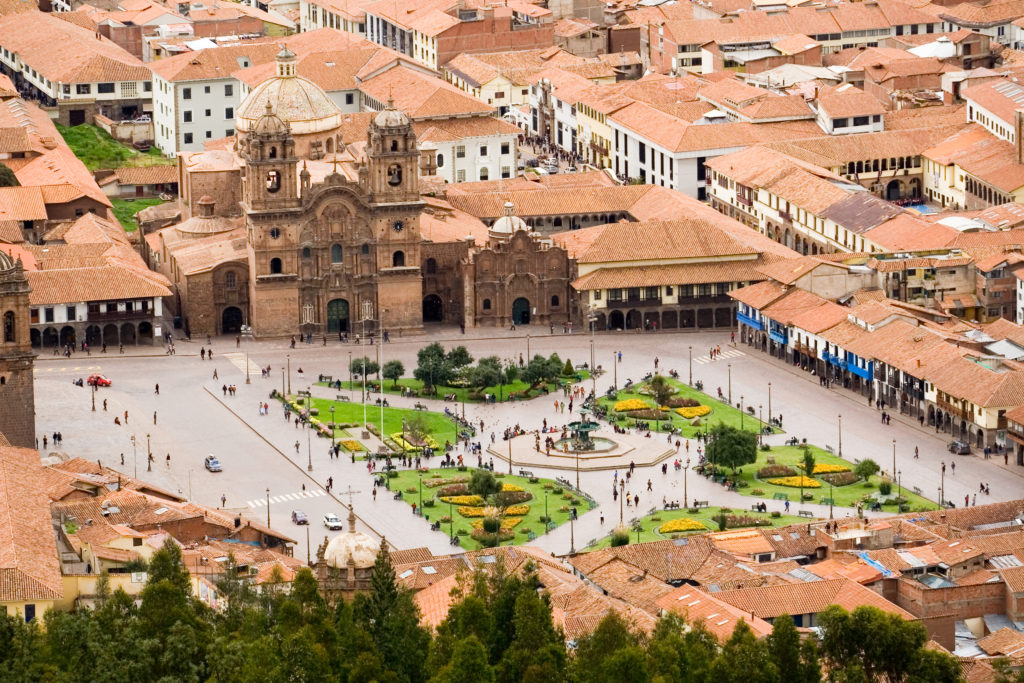
For this specific itinerary, be prepared to experience some altitude. Just to give you an idea, Cusco sits at about 11,000 feet (3,300 meters). The Sacred Valley, which is about 1.5-3 hours away from Cusco, is situated between 3,000 and 9,000 feet (900-2,700 meters) with Machu Picchu at an elevation of 8,000 feet (2,400 meters). Some of the other sights like Rainbow Mountain, also included in this itinerary sit at around 15,000-16,000 feet (4,500-4,800 meters).
There are plenty of people that visit Cusco and the Sacred Valley each year–in fact, millions–and adapt just fine with the altitude. The trick is to prepare and plan your itinerary wisely, so you can minimize and avoid the risk of altitude sickness. In this 14 day family adventure itinerary in Peru, we carefully put together a schedule that allows you to slowly adjust to higher altitudes, so you aren’t spending your first few days of the trip sick, but still maximizing your time here.
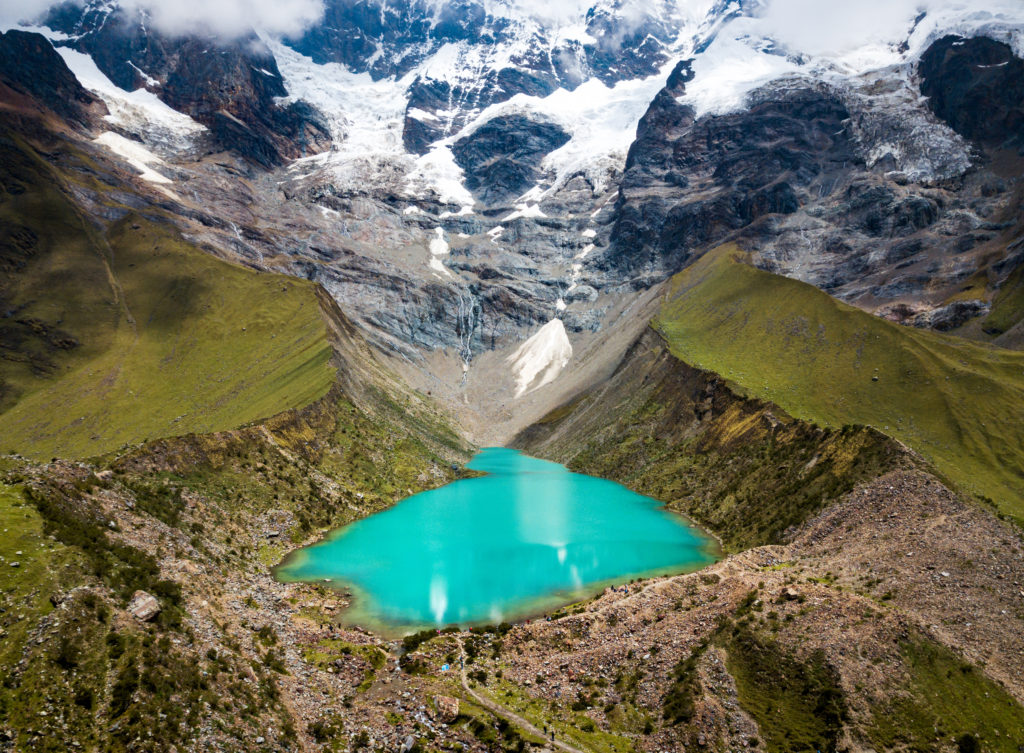
In addition, it’s also important to take these tips into consideration to decrease the affects of high altitude.
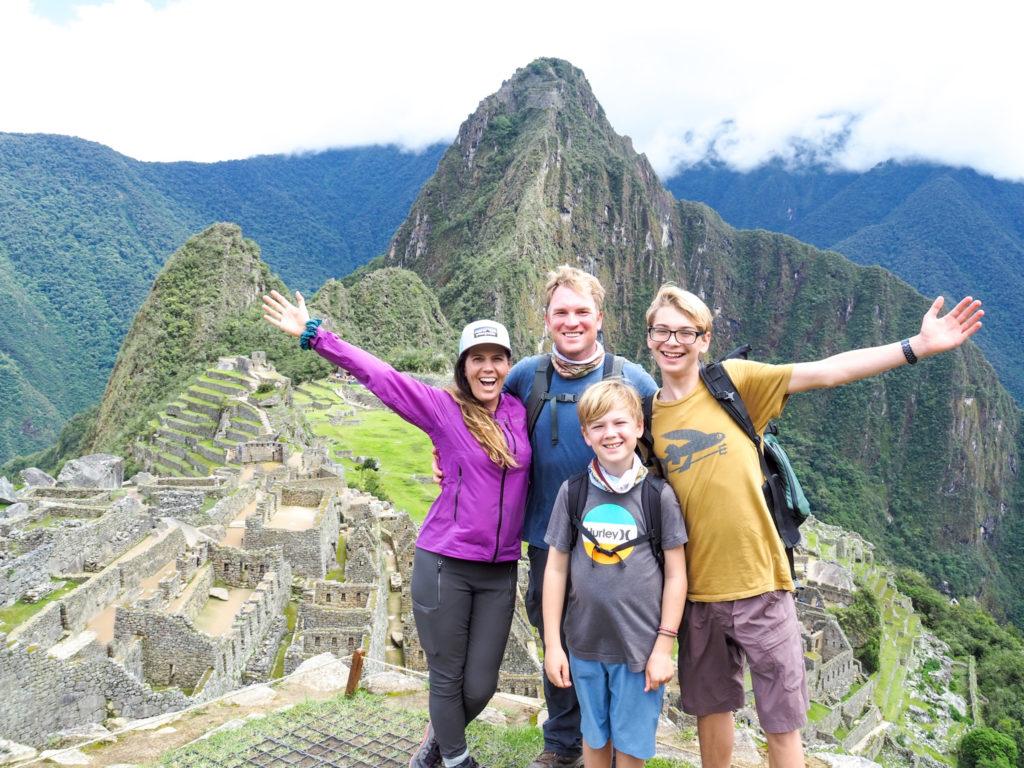
In the following itinerary, you will find a variety of amazing experiences and sights, to include unique cultural experiences, unbelievable scenery and other family-friendly adventures. Keep in mind that if you don’t have 14 days to spend in Peru, you can always adapt this schedule and subtract days (such as the last few days in this itinerary) or spend less time in the Sacred Valley/Cusco. However, we would recommend if you can, to spend at least 2 weeks in Peru to really get the most of your trip here.
We will assume that on Day 1, you’ve arrived in Cusco and have at least a partial day to rest and/or explore a little of the city. Cusco, a city in the Peruvian Andes, is the gateway to the Sacred Valley, and once the capital of the Inca Empire. It is known for its archaeological remains and Spanish colonial architecture. As mentioned earlier, Cusco is situated at around 11,000 feet, so as you are walking around the city, you will probably notice that your breathing may be slightly labored (especially if you are coming from low altitude).
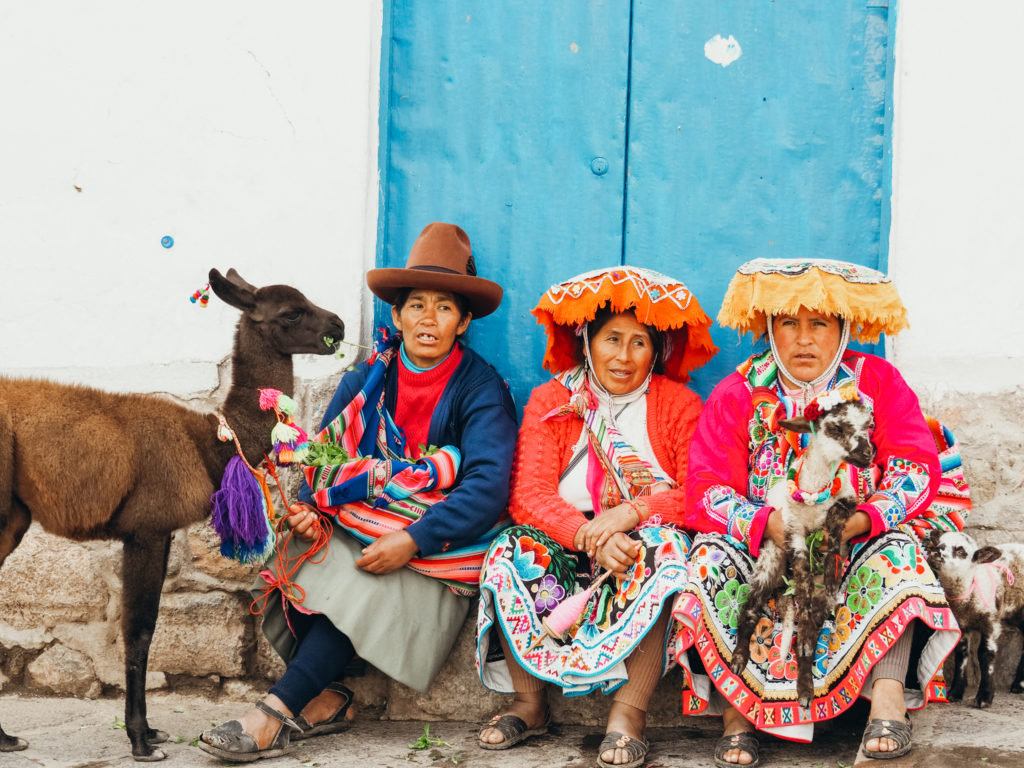
We spent 2 months in Cusco and absolutely fell in love with its charm, walkable streets, beautiful buildings, and the FOOD. Another neat thing about Cusco is that you will notice that many of the local women still wear their traditional Inca clothing, which is bright and colorful. The Incas are well-known for their weaving skills, so you will observe hand-crafted, detailed textiles everywhere. (Plan on spending some money on souvenirs!)
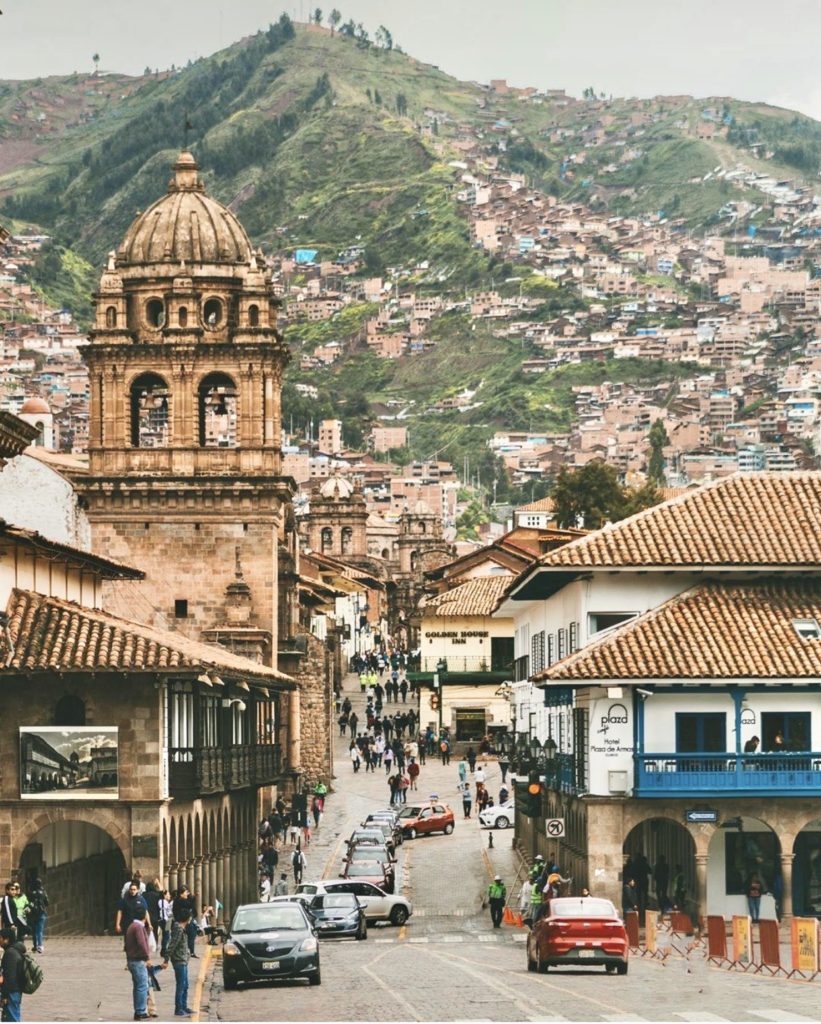
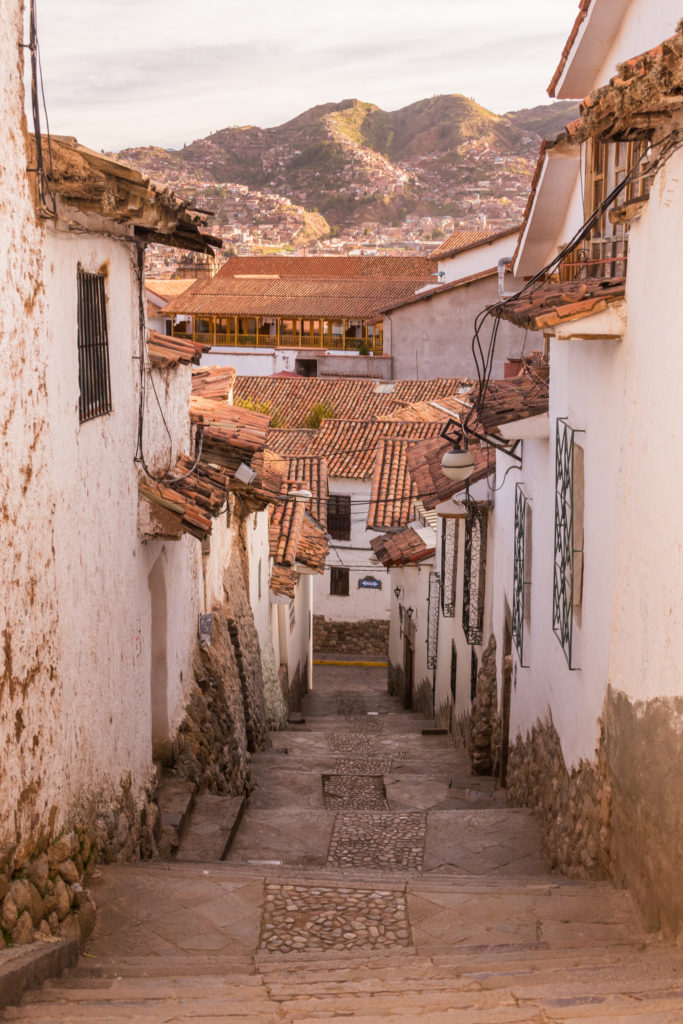
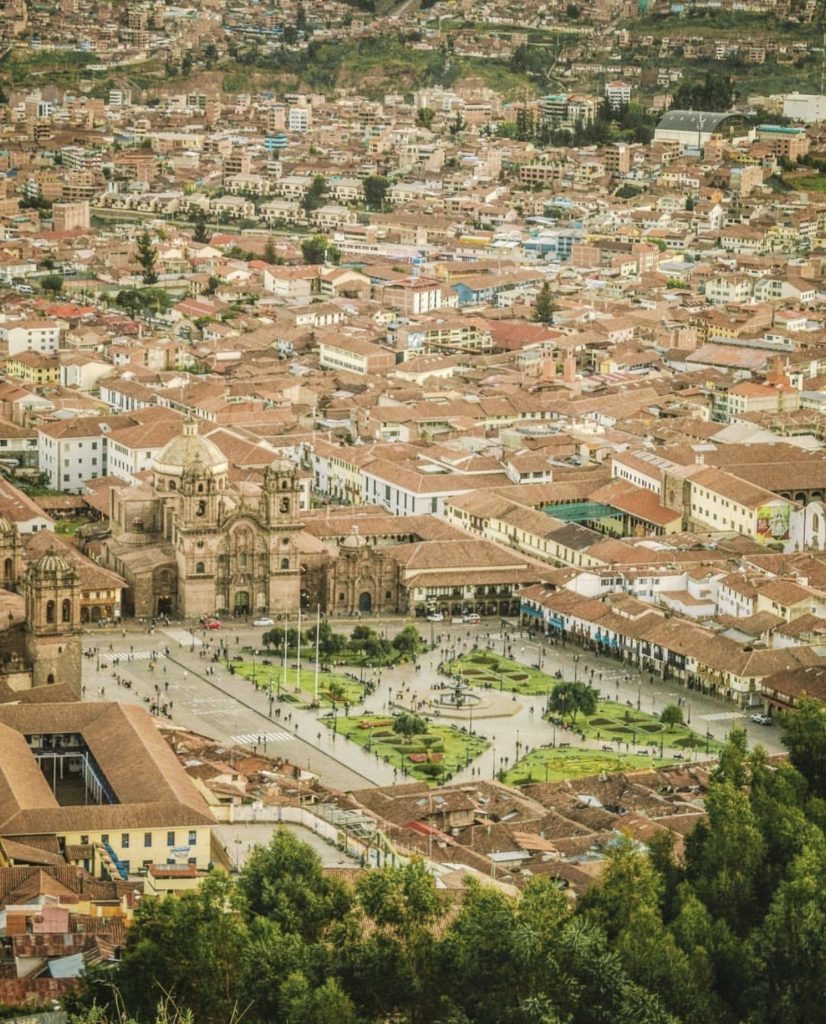
There are plenty of Airbnb’s or hotels in Cusco, but we would suggest staying within walking distance to the historic center, or the Plaza de Armas. Check out some of the tops picks to stay in Cusco on Booking.com, our go-to site for finding affordable, comfortable accommodations. We would highly recommend MOAF Cusco Boutique Hotel, Casa Matara Cusco, or Ramada by Wyndham Costa del Sol Cusco. Getting around in Cusco is fairly easy–you can walk, hop on the local buses, or even take an Uber.
We spent many days and evenings wandering through the narrow, cobblestone streets of Cusco, admiring the architecture of the churches and buildings, discovering delicious restaurants, and shopping for Peruvian souvenirs. Some of our favorite restaurants include Morena Peruvian Kitchen, Los Toldos Chicken, Korma Sutra, Inka Grill, La Bodega 138, Marcelo Batata, and Pacha Papa. Traditional dishes you should definitely try while in Peru include Aji de Gallina, Lomo Saltado, Ceviche (Peru is the birthplace of ceviche), Rocoto Relleno, and Papas a la Huancaína. Alpaca meat and Cuy (guinea pig) are also very popular. While we can’t vouch for Cuy, we would definitely recommend trying alpaca meat as it is very delicious, lean and tender.
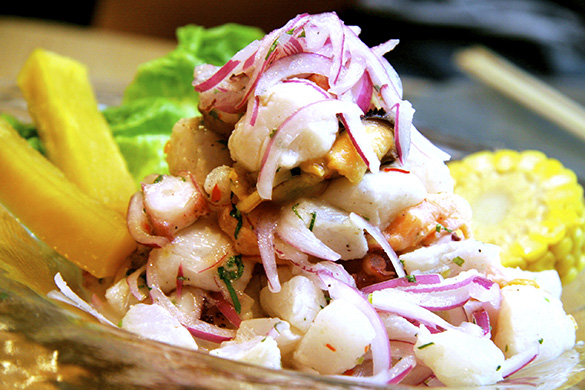
From Cusco, you will head to the Sacred Valley where you will spend the next few days. First stop on Day 2 is Chinchero, a beautiful city filled with a long history of Inca weaving, ruins and a quaint town where you can shop for handmade, colorful textiles. We recommend visiting the Chinchero ruins while you’re here. *Side note: make sure to purchase the Boleto Turistico, a 10 day pass that covers you for ALL Inca archeological and historical sites, with the exception of Machu Picchu. We highly recommend you purchase this in Cusco upon arrival, or at the first site you visit, as this will save you money over the course of the next 10 days.
If you really want to maximize your time, while also getting the most out of your trip, we would suggest booking a tour for this day trip. This way you won’t have to worry about transportation from Cusco to the Sacred Valley, and you will learn a lot more about the archeological sites by going with a qualified and knowledgable guide. However, if you want to do it self-guided, you can rent a car from Cusco.
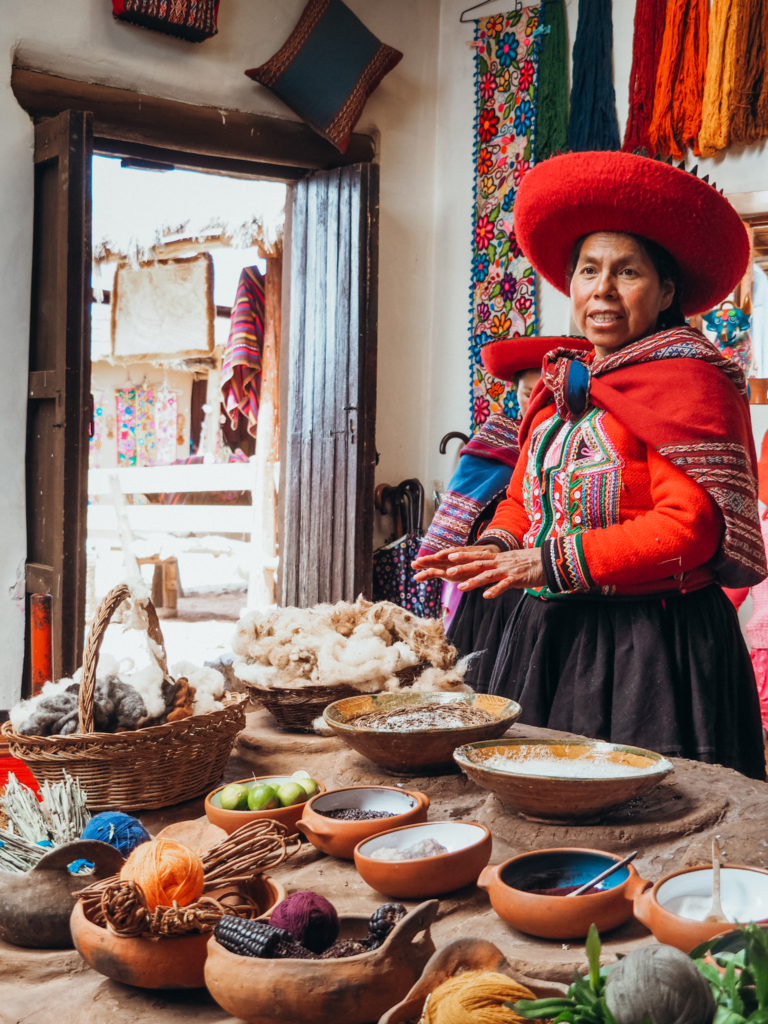
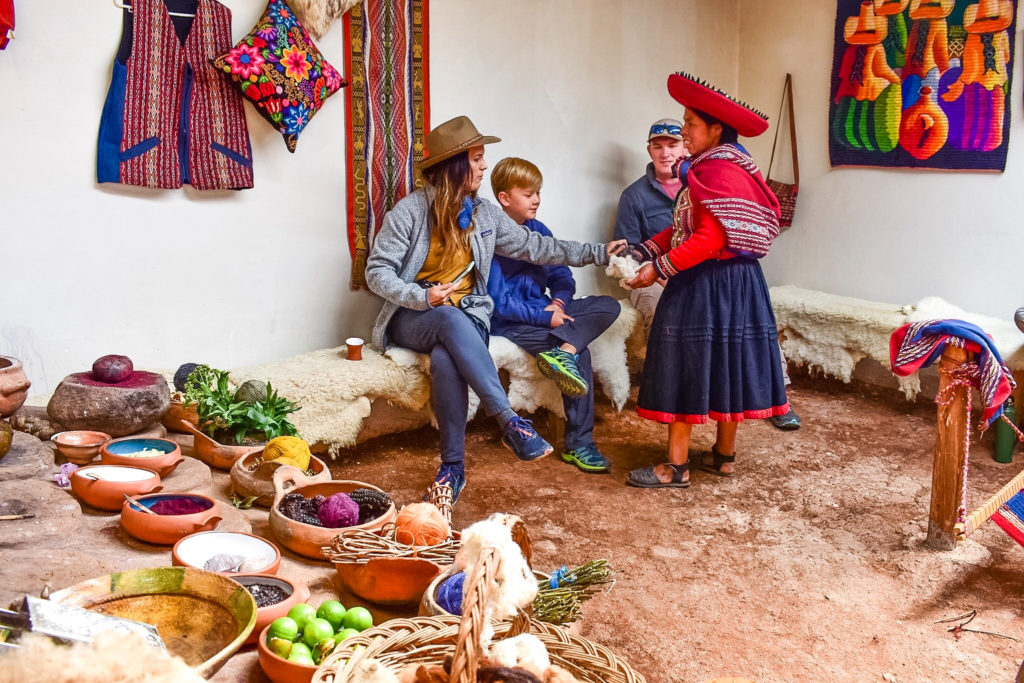
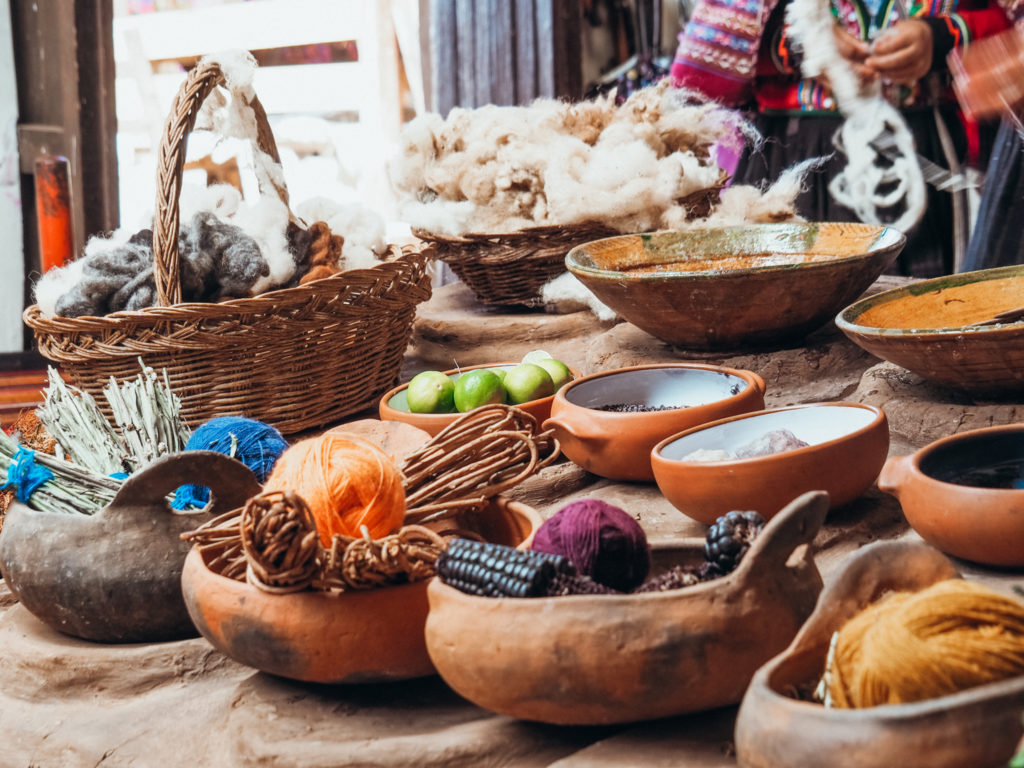
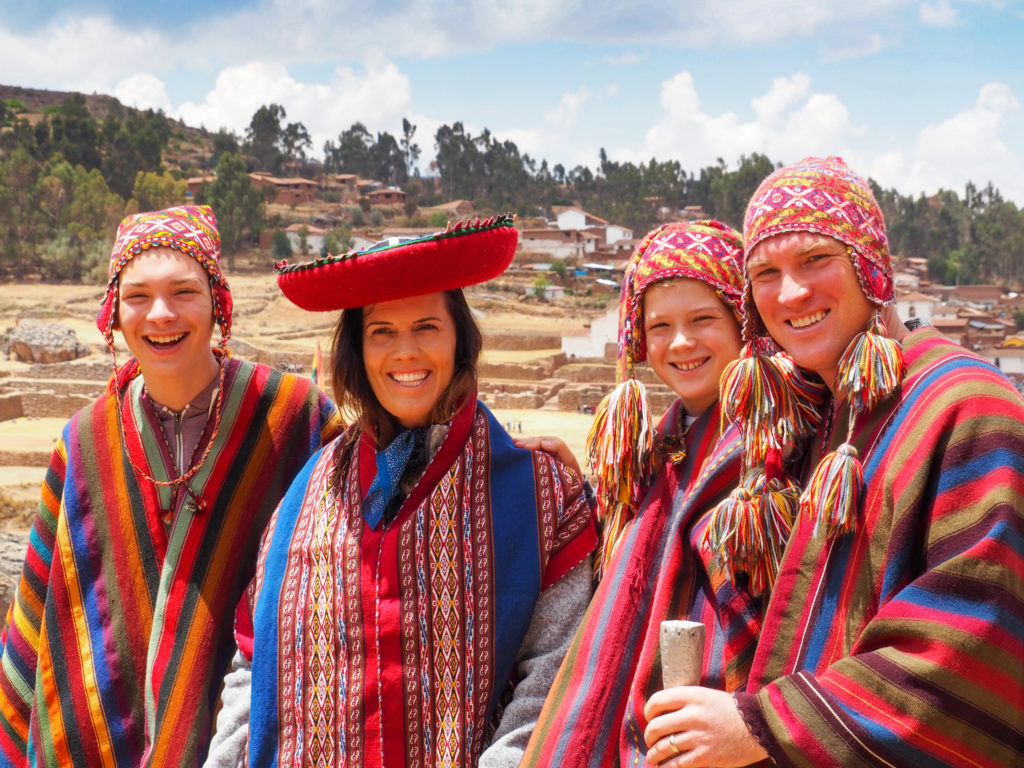
While in Chinchero, you can observe the ancient art of weaving at an Inca weaving demonstration. If you go with a tour, this will be included, but you can also go on your own (there is an entrance fee). We loved observing the entire weaving process–from shearing the alpacas, to washing and spinning the fiber, to the dying of the wool, to weaving beautiful textiles and patterns. If you like, you can purchase handcrafted items such as blankets, scarves, hats, sweaters, and more (made by the weavers from Chinchero).
After visiting the ruins and watching a weaving demonstration, the next stop will be the archeological site of Moray. These ruins are very interesting and unusual, mostly consisting of several terraced circular depressions. As with many other Inca sites, it also has an irrigation system.
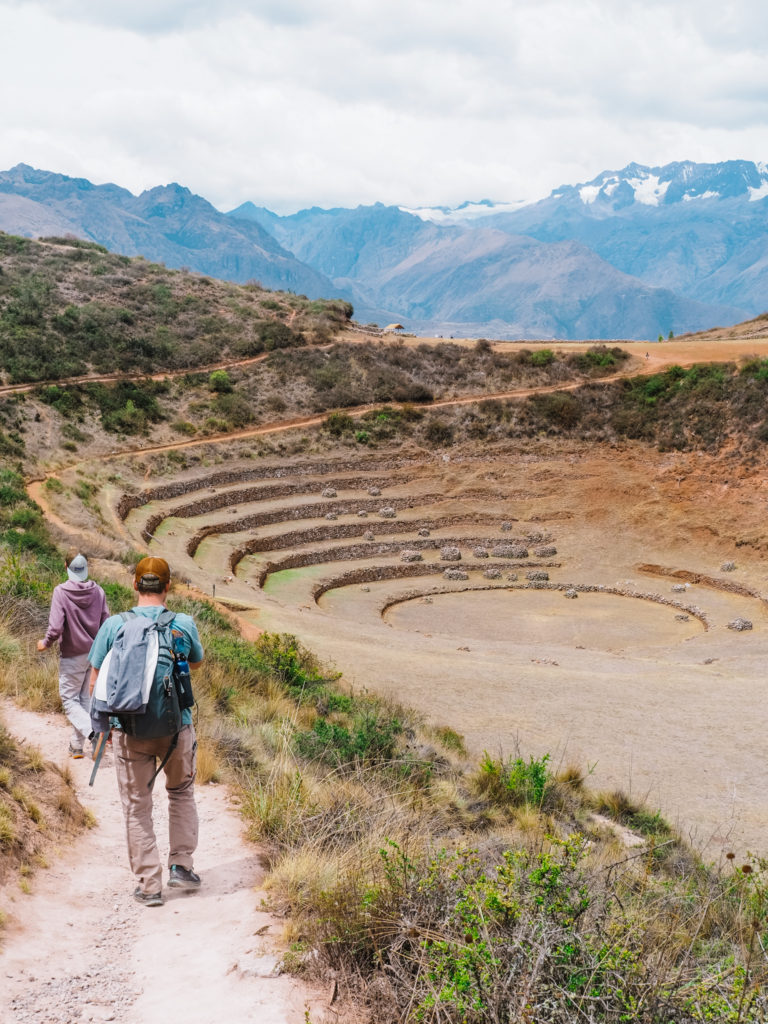
From Moray, the final stop of the day will be in Maras, the famous pre-Incan salt mines which consists of approx. 4,500 salt wells placed in the form of stepped terraces. In the dry season the accumulation of salt is fast, there is greater production, and a better quality of salt is obtained with a white or pink color. In the wet season, these salt deposits turn brown as production decreases. You used to be able to walk in between these salt mines, but due to damage done by tourists, they don’t allow that here anymore. Instead, you can observe these salt mines from different viewpoints along a path. Make sure to sample and buy some of the salt here, it’s very tasty!
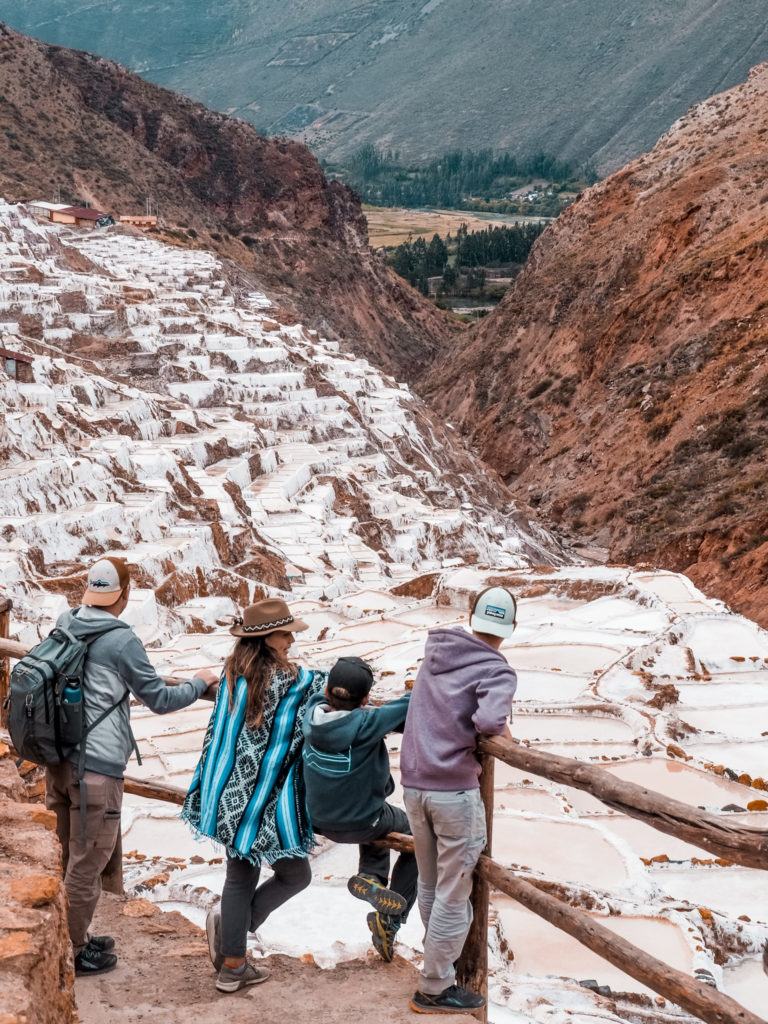
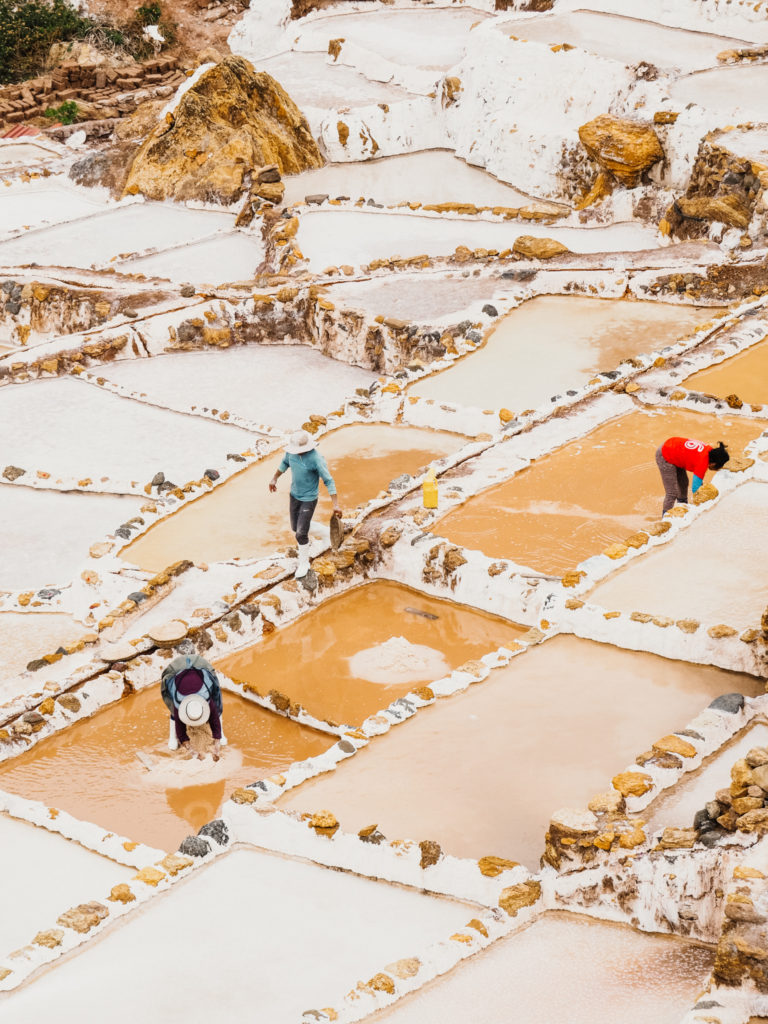
After visiting Moray and Maras, you will drive to (or get dropped off at) Urubamba for the night. There are plenty of hotel options in the town of Urubamba, but a few we would recommend would be Amaru Valle Hotel, Wayqey Lodge, Inti Nan Lodge, and Hotel Andes Urubamba. Or if you have room in your budget and are especially adventurous, you might want to consider Skylodge Adventure Suites. Skylodge offers you the once-in-a-lifetime, thrilling opportunity to sleep inside a transparent hanging “capsule” or bedroom on the side of a cliff. This experience allows you to appreciate the impressive views of the Sacred Valley. In order to sleep at Skylodge, you must climb or hike the trail using zip lines to get there!
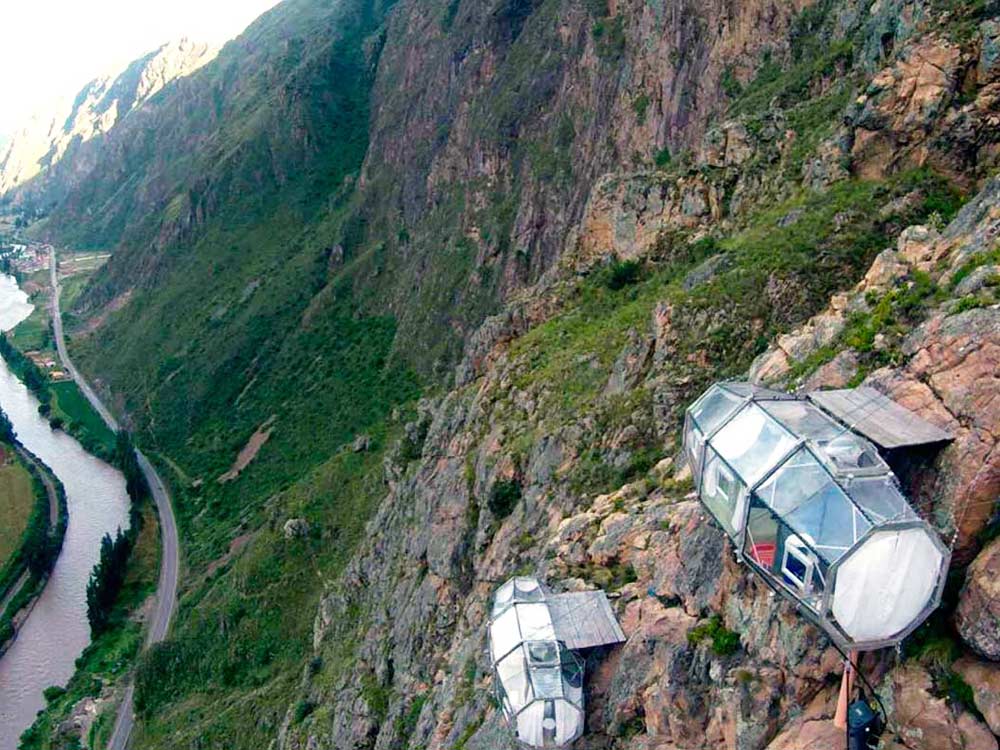
After spending the night in Urubamba, there are a couple of options of activities you can do this day. If you want a high adventure day (always our choice!), you can go zip lining and try your hand at the Via Ferrata at Skylodge, as mentioned above. Not sure what a Via Ferrata is? It is a path used to climb a mountain with a safety system permanently installed. Even if you don’t stay at Skylodge overnight, you can purchase a day pass here to climb the Via Ferrata and/or zip line.
Or if you prefer a more cultural day, we would suggest visiting the Inca ruins in Urubamba and then making your way to Ollantaytambo (if you decide to the do the adventure day at Skylodge, you will make your way to Ollantaytambo later in the day). If you are on your own and have a car, you can drive there, but you can also take the train. Of all the towns in the Sacred Valley, this one was our favorite. It’s small and quaint, nestled in a beautiful valley surrounded by Inca fortresses. These archeological sites are impressive and also very well preserved. Climbing up the steep steps, you will get to admire the views of this stunning valley.
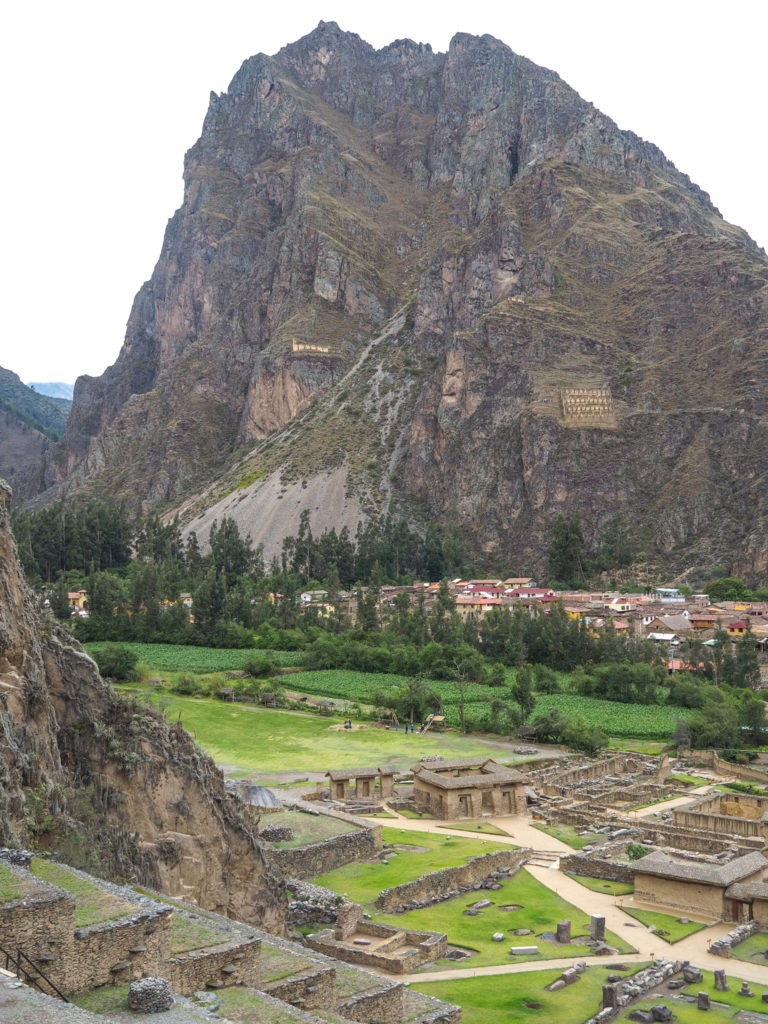
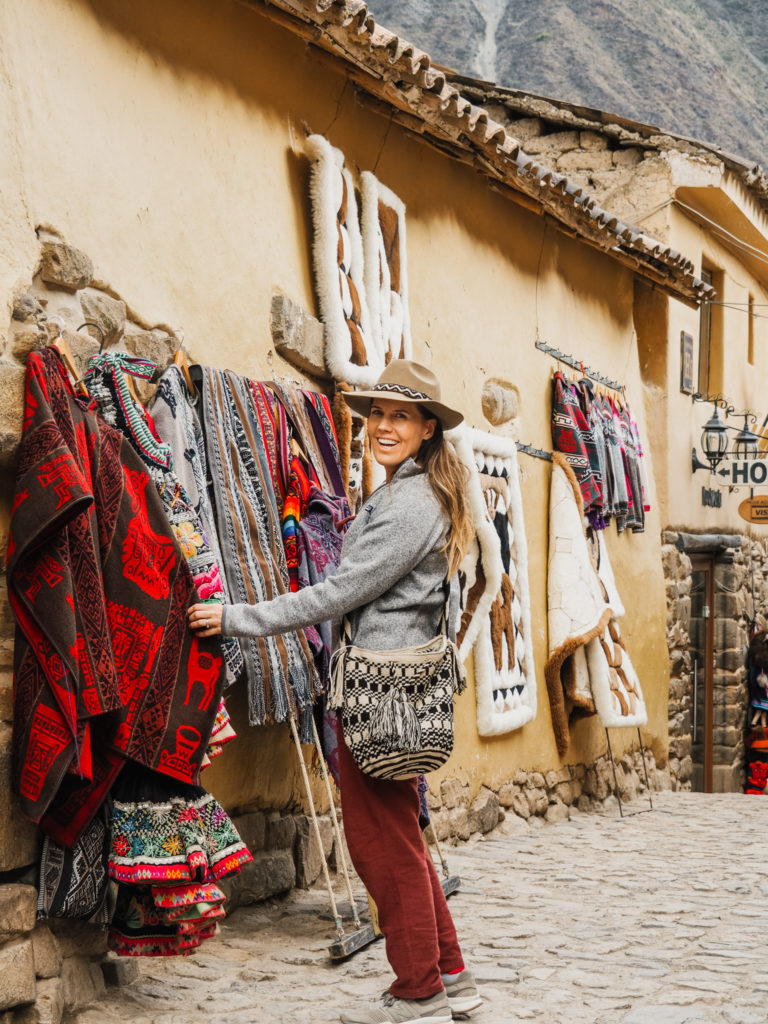
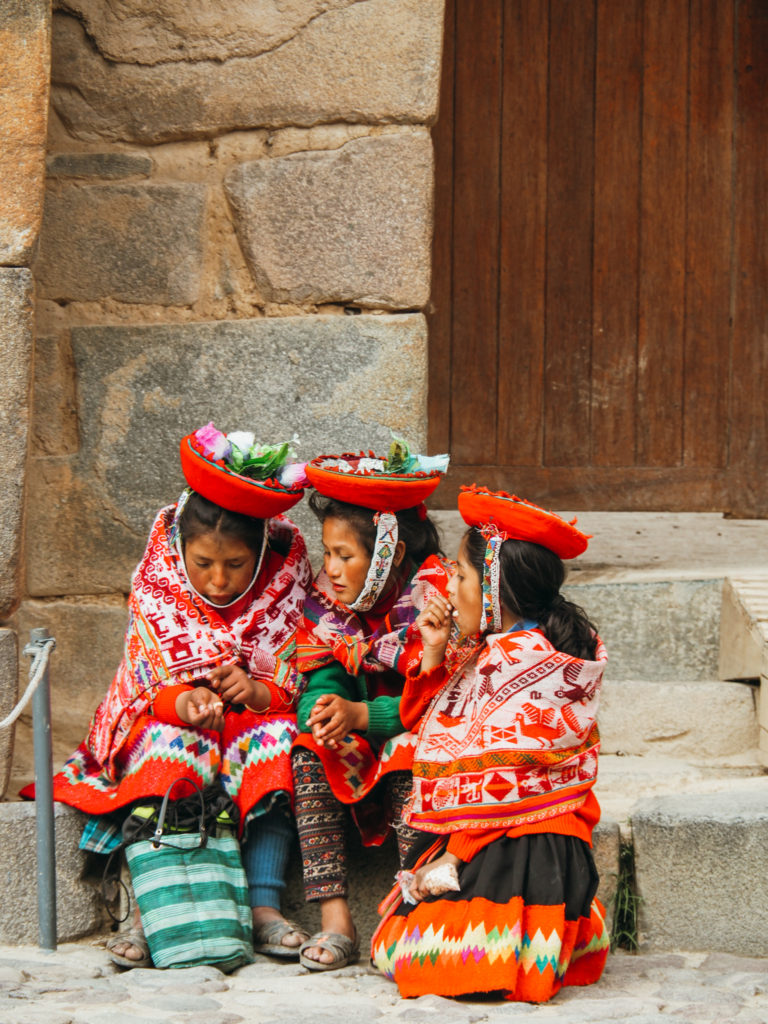
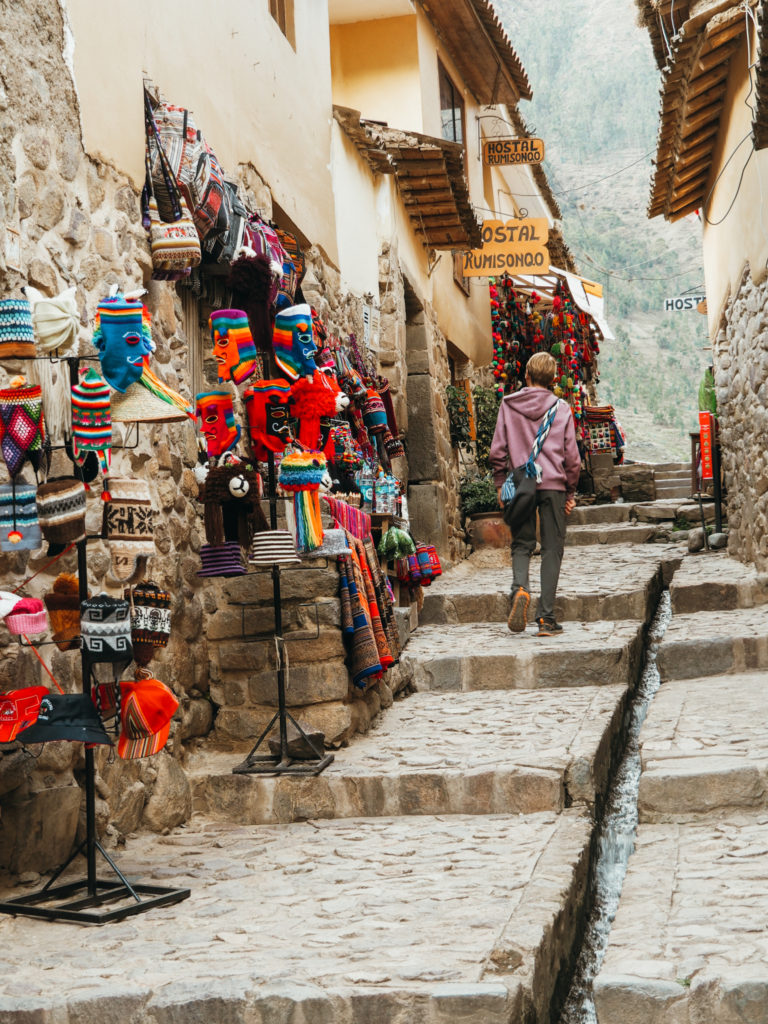
Standing at the top of the fortress, you’ll be able to see the Ollantaytambo storehouses, otherwise known as Pinkuylluna. If you choose and have the time, this is a challenging hike (about an hour up a treacherous path), but worth the effort. We recommend doing this hike at sunset. Found at the base of the ruins, there is a great open-air market in the village where you can shop for souvenirs and trinkets. We found this town very easy to navigate, with narrow streets and friendly locals. There were plenty of good restaurants too–don’t miss Mama Simona and Inka King!
There are lots of cute hotels in Ollantaytambo, but these 3 are really good options–Sol Miranda, El Albergue, or Apu Lodge. We stayed at El Albergue and loved it. Make sure to retire to bed early this night, as tomorrow will be an early start and a long hike as you make your way to Machu Picchu via the Sun Gate.
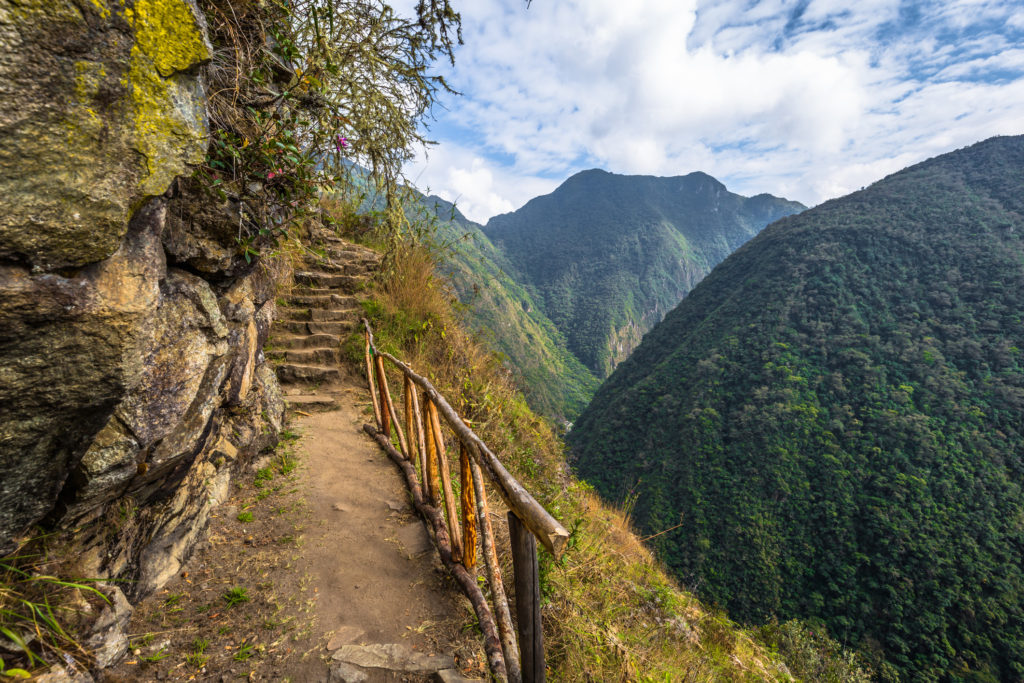
Due to the preparations and logistics required to undergo the 2 Day Inca trail to Machu Picchu (or even the more popular 4 day trail), it is HIGHLY recommended to do this trek with a guided company. Especially since they take care all of the details, logistics, and permits/reservations for you (plus provide a guide). Our favorite local Peruvian guides are Sara and Daniel with Peru Eco Expeditions. They are a sustainable, Cusco-based company that specializes in adventure boutique experiences in Peru. Each itinerary and experience is customized to your budget and preferences.
They offer an amazing 2 Day Luxe Inca Trail trip, in which you spend the first day hiking along the most impressive section of the Inca trail to the famous Sun Gate, with the second day spent at Machu Picchu. If you have more time in your schedule, you might consider doing the 4 day Inca trail, so you can get the full experience of the Inca trail.
Since you are staying in Ollantaytambo, your guide(s) will meet you at your hotel instead of picking you up in Cusco. From there, you will take the early morning train to KM 104, in which you will disembark off the train and start the hike on the Inca trail. (Don’t worry about your luggage, the tour company will make arrangements for that to be transported to your final destination.)
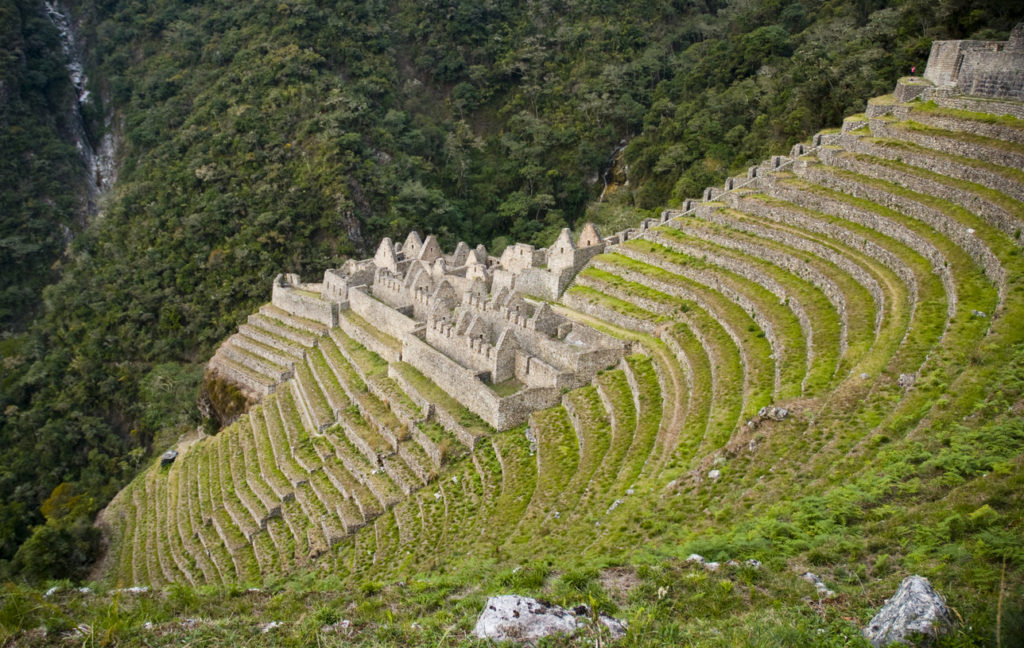
This section of the Inca trail is around 8 miles or 13 kilometers. Shortly after you start your hike, you will come across the first archaeological site of the day: Chachabamba. This site sits at one of the last shelters that the Incas used before reaching Machu Picchu. After visiting Chachabamba, you will begin the 2 hour ascent on the Inca Stone steps. The trail is steep, but eventually levels out. From there you will continue on to the beautiful archeological site of Wiñay Wayna. The next landmark on the trail is Intipunku, also known as the Sun Gate. This is where you will see your first glimpse of Machu Picchu!
After entering the Sun Gate, you will descend into the Machu Picchu town, otherwise known as Aguas Calientes. This is where you will stay for the night before visiting Machu Picchu the next day. If you are on a guided tour, the company will arrange your stay and take care of your reservations, as well as permits and tickets for all transportation and admission to the archeological sites (to include the Inca trail). There is also the option to camp, if you would prefer to do that!

Entering Machu Picchu is surreal. There’s a reason it is one of the 7 Ancient Wonders of the World. Being there in person is even better than seeing it in photos. The entire valley where these famous ruins sit is beyond anything you can expect. As you learn more about how the Incas constructed these sites with giant stones and no mortar, you will have a greater appreciation for how they built this place. It truly is MIND-BLOWING.
Most likely you will be transported to the Machu Picchu site early in the morning, so you can get there before it gets too crowded (it picks up around 8AM), and enjoy the ruins in peace. Your guide will take you along a one-way trail that goes through the entire archeological site, in where you will stop at several different places and learn more about the discovery and history of these ruins.
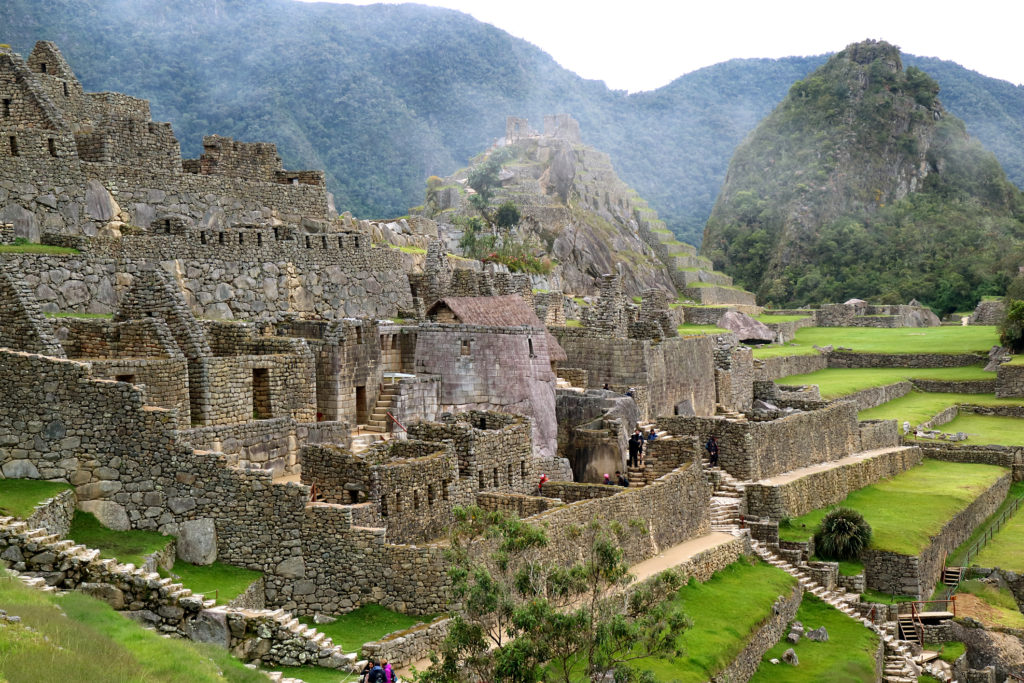
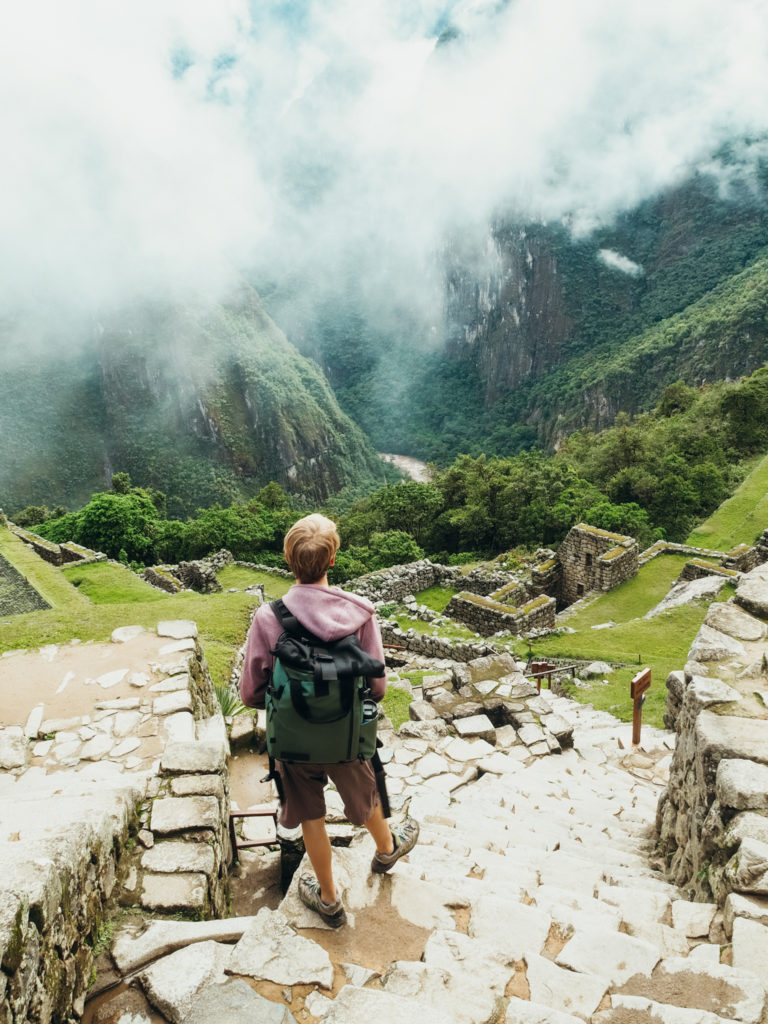
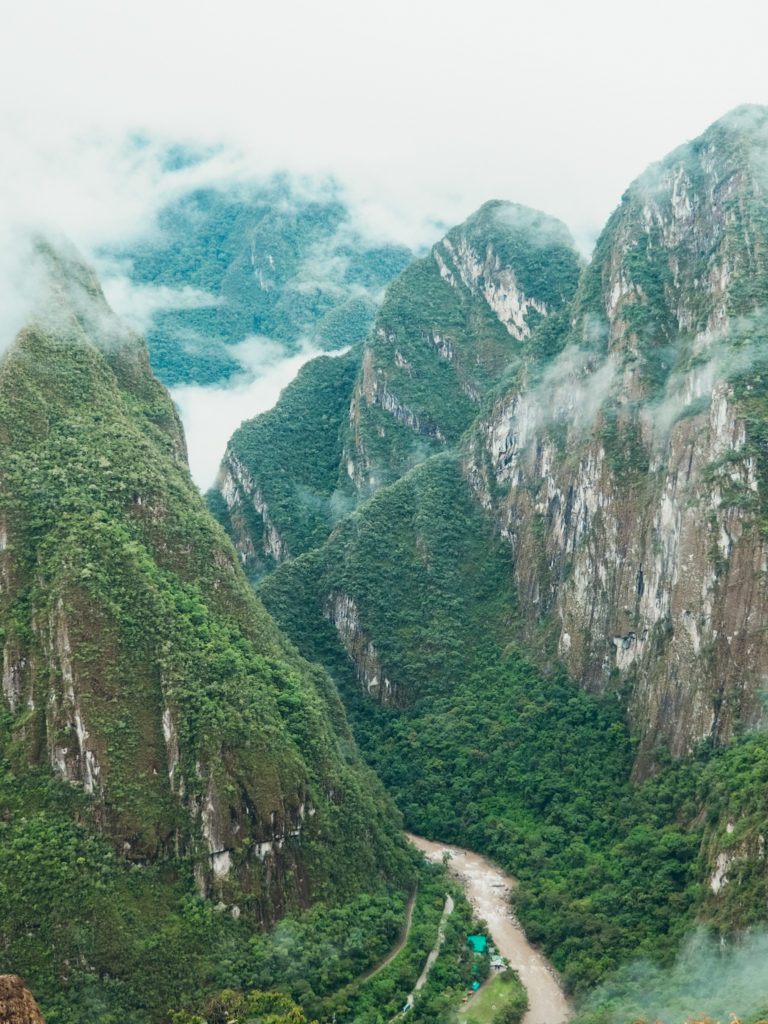
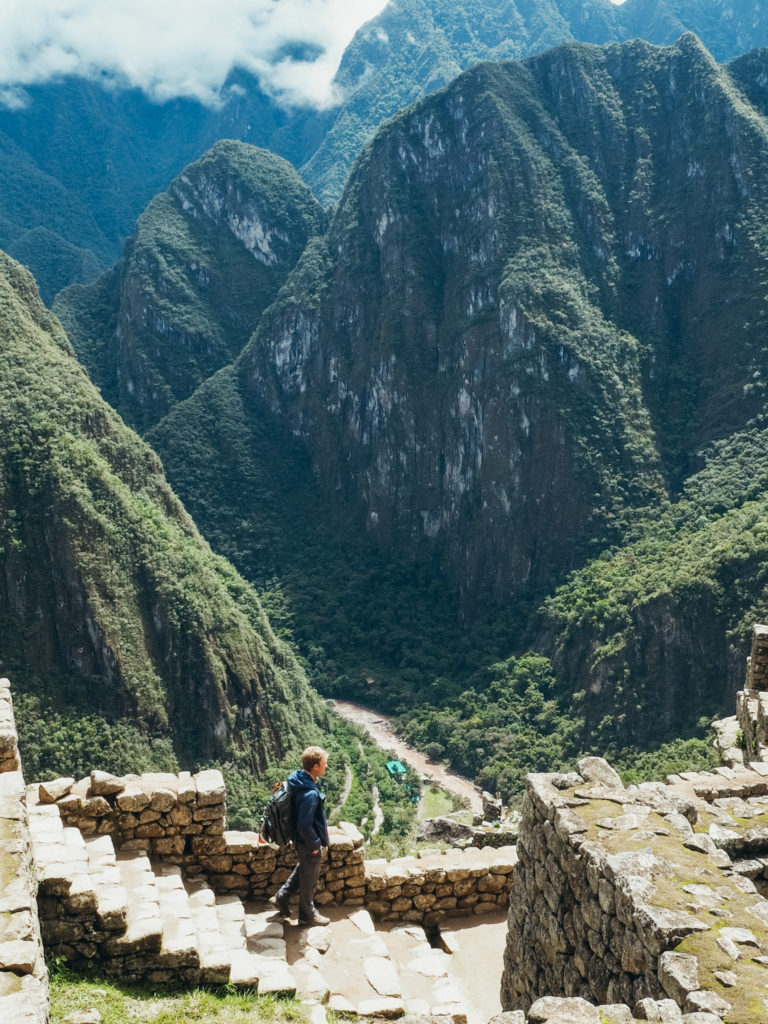
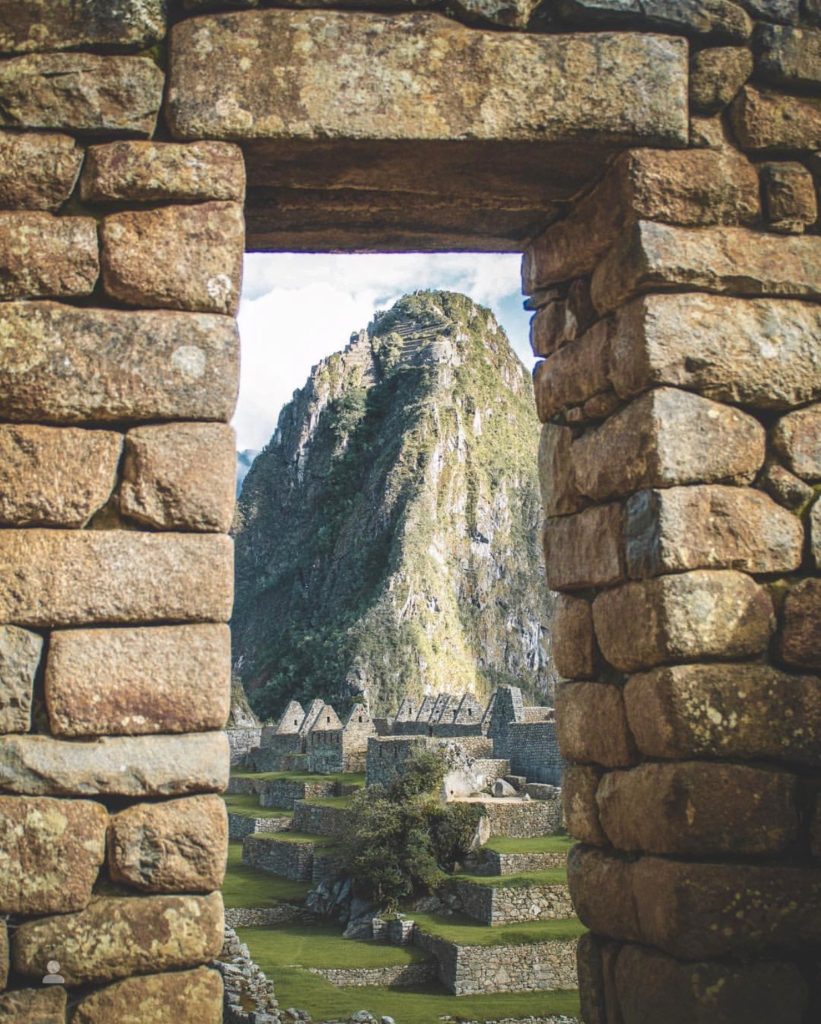
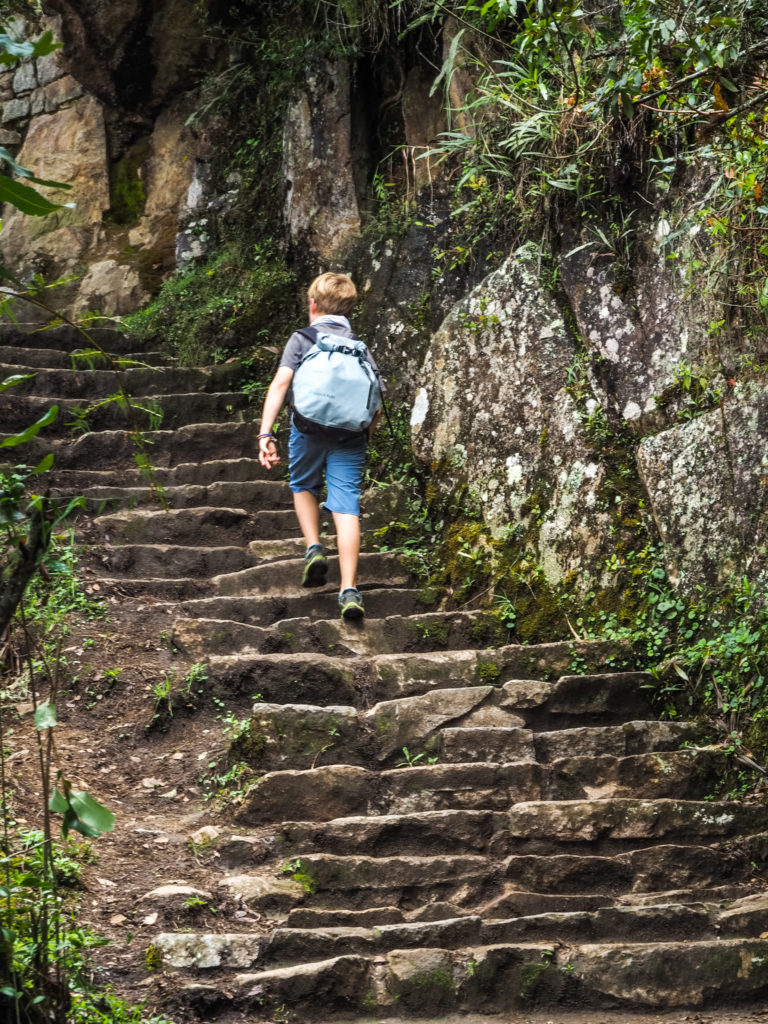
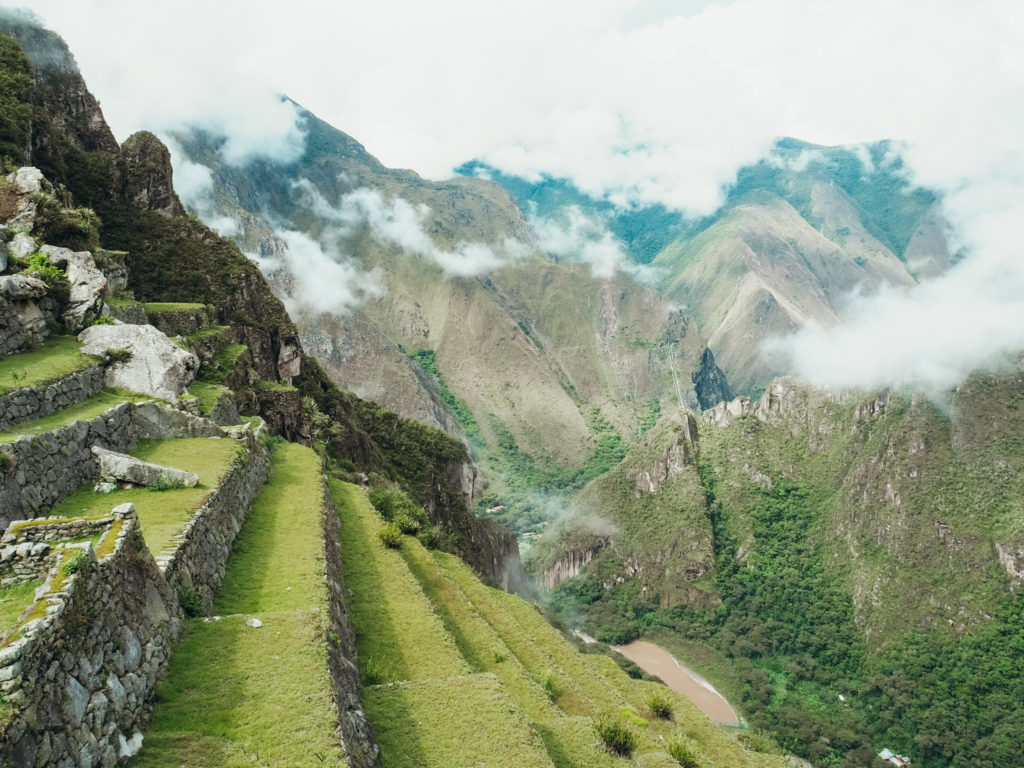
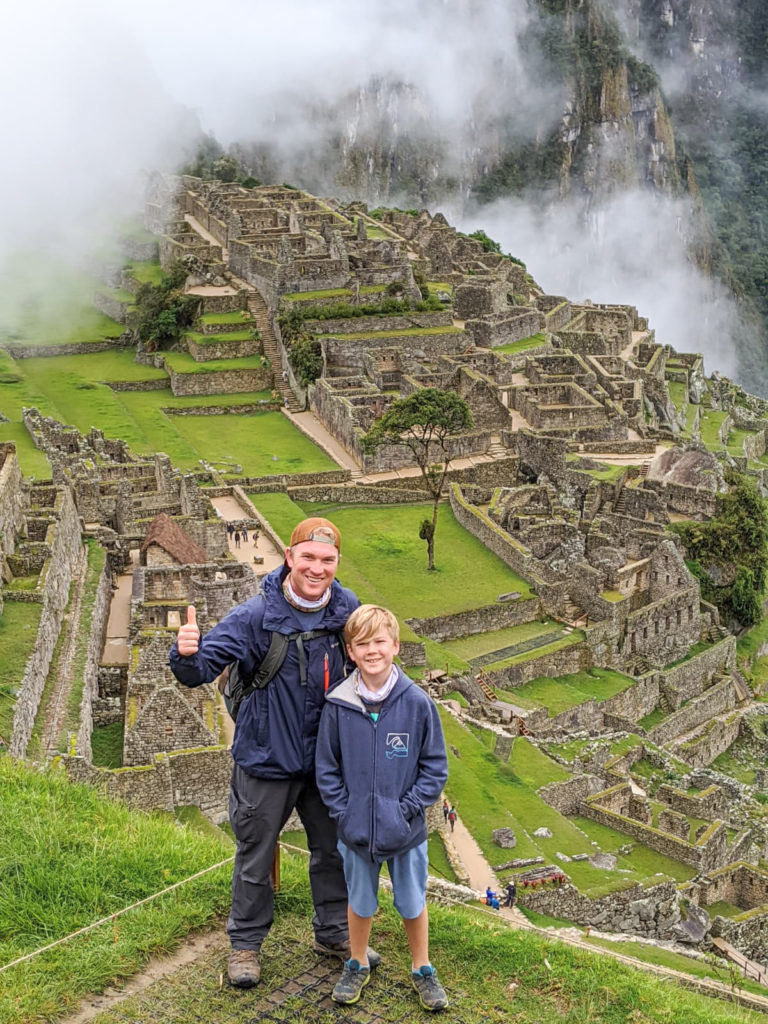
If you decide to add on Huayna Picchu (the triangle-shaped mountain behind Machu Picchu), you will have a specific pre-arranged time and permit to climb to the top. Warning: It’s very steep and if you are afraid of heights, you might want to opt out. However, if you take your time and use your hands to help you keep your balance, you will be perfectly fine. The views are outstanding and provide a unique perspective of Machu Picchu, not seen from anywhere else in the park. We would highly recommend adding Huayna Picchu to your visit (unless you have small kids or are deathly afraid of heights).
At some point during your day at Machu Picchu, your guide will provide lunch for you while you sit and admire the 360 degree views. After you finish your visit at Machu Picchu, you will take a bus back to Machu Picchu town and then catch the train all the way back to Cusco.
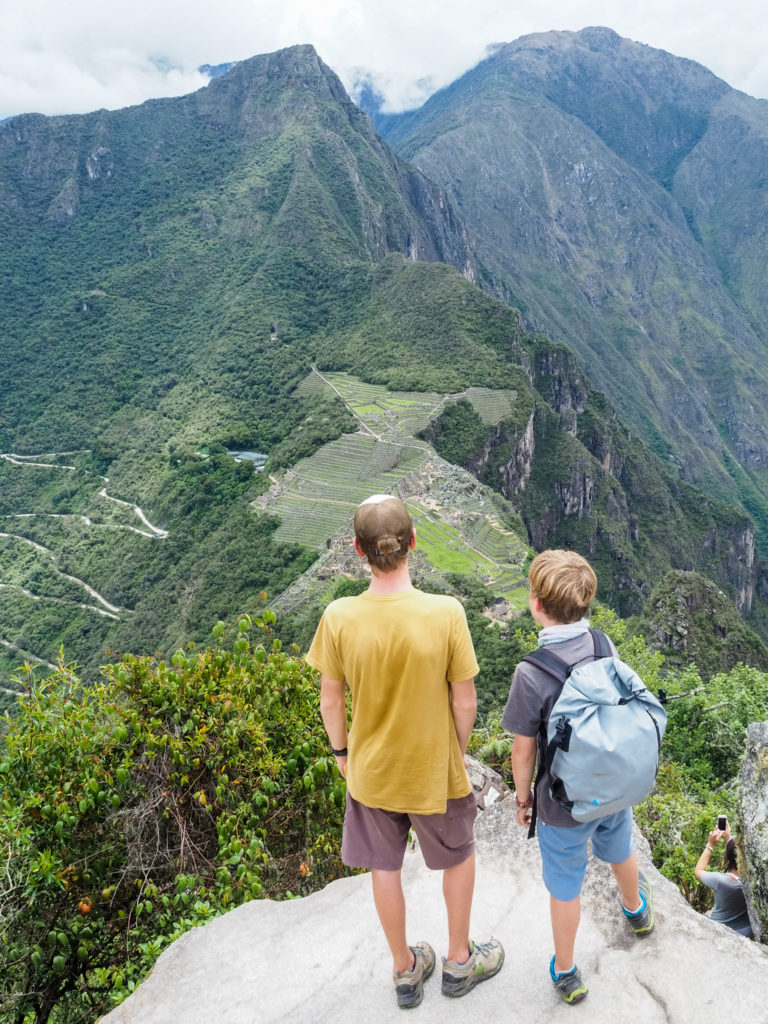
After a few action-packed days in the Sacred Valley, you will most likely be exhausted and want to take an easy, slow day in Cusco. However, if you decide you want to get out and explore more of Cusco, we have a few recommendations. First of all, if you didn’t get much time on Day 1 to walk around the streets near the historic center–the Plaza de Armas–definitely make sure to prioritize this. There are a few beautiful churches around the plaza (such as Santo Domingo), lots of delicious restaurants and tons of great shopping. We especially loved wandering through the streets of the San Blas neighborhood, which is a few blocks away from the Plaza de Armas (up the hill).
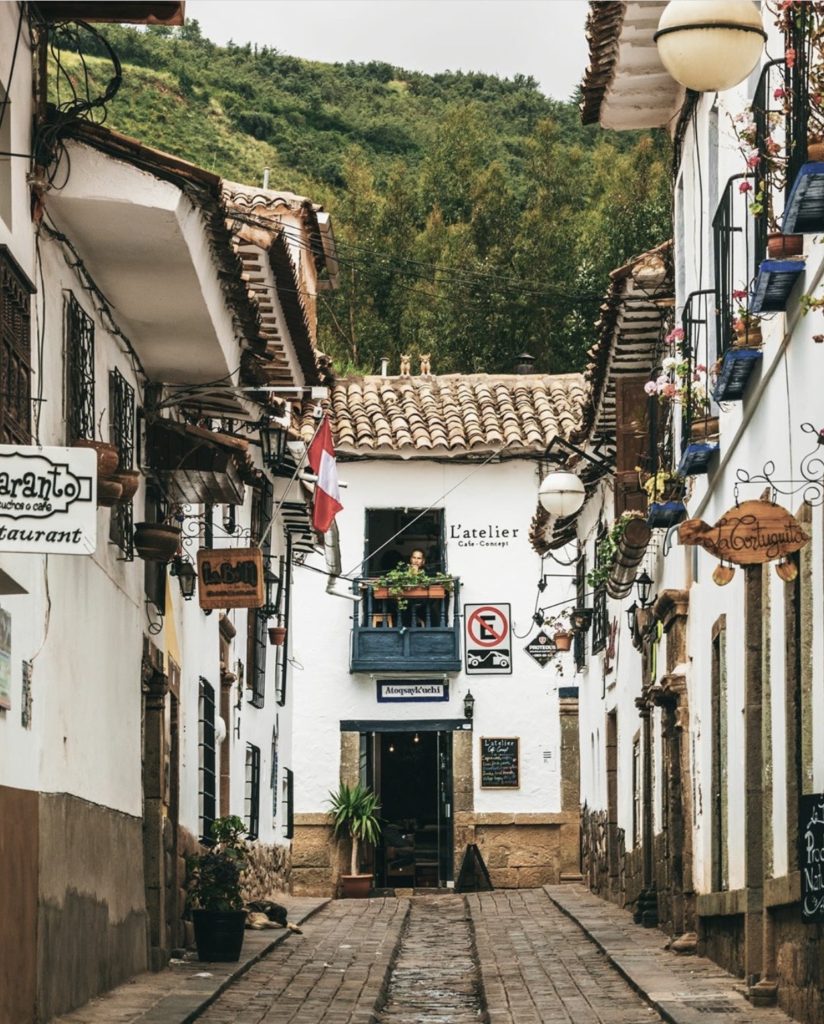
Some other things to strongly consider visiting close to the historic center: the famous 12 cornered stone (in the San Blas area), the Koricancha temple, the Museum of Natural History, and the San Pedro Market. We would especially prioritize visiting the San Pedro Market. This is where the locals shop for their produce and meat, however there is so much more to the market than just fruits and vegetables.
You can shop for local chocolates and tea, souvenirs, and our favorite reason for visiting the San Pedro Market–the fruit smoothies. There are a couple of rows of smoothie-making ladies, all ready to whip you up whatever you want for only $1 USD. With more than 30 fruits to choose from (all local fruits), you will certainly find something to satisfy your taste buds.
If you find yourself with more time, another place to consider going is the Sacsyhuaman ruins (not far from downtown). Sacsyhuaman is an ancient Inca fortress overlooking Cusco from the north. Located only 1 mile (2.2 km) from the Plaza de Armas, this fortress consists of giant stones that will leave you scratching your head, as you wonder how they transported these massive stones here and constructed this site.
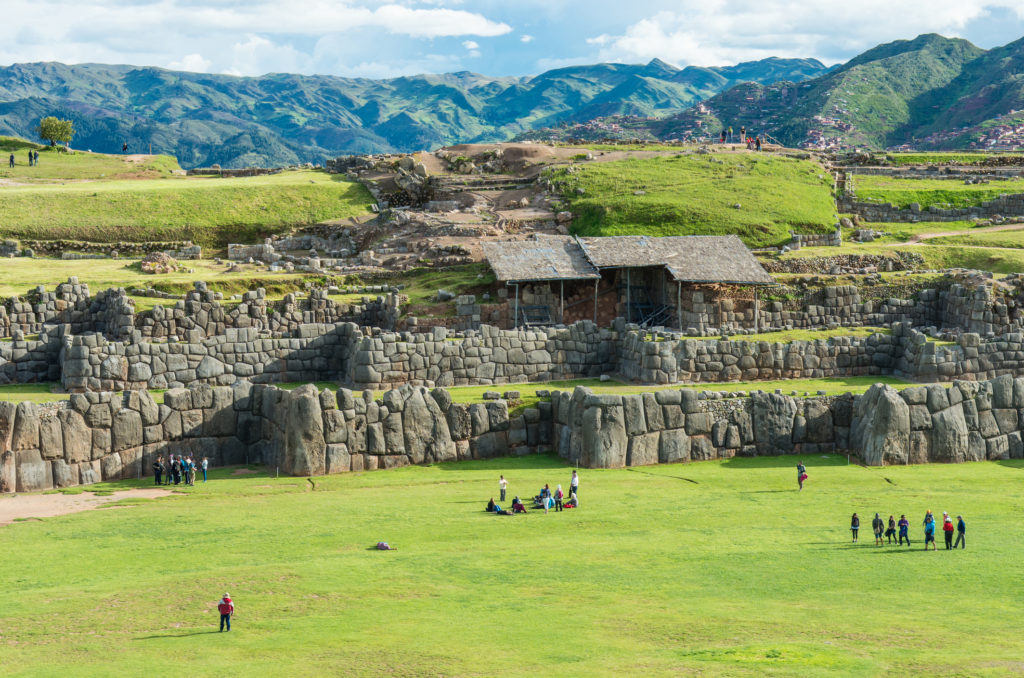
Another thing we loved doing while in Cusco was taking a cooking class at the Chocolate Museum. We learned how to make some traditional Peruvian dishes like ceviche, Aji de Gallina, and topped off our dinner with some homemade chocolate and fruit. It turns out, the ceviche we made was the best we had the entire time we were in Peru!
Now that you have adapted to the altitude after almost a week in Peru, it’s time to head to the Andes! A 3 hour drive from Cusco lies the trailhead to two different hikes–Humantay Lake and Salkantay Pass. Over the next couple of days, you will hike to these breathtaking vistas. The company Salkantay Trekking offers a two day excursion to Humantay Lake and Salkantay Pass. They will pick you up early in the morning (very early!) from your hotel in Cusco and escort you to the trailhead where you will eat breakfast before starting your 3 hour hike to Sky Camp (this is where you will stay for the night).
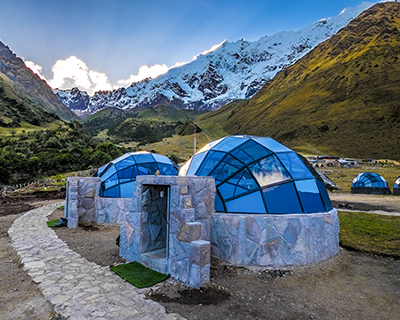
From Sky Camp, you will hike to Humantay Lake, which is another 3 hours of hiking. The altitude at the lake is around 14,000 feet (4,500 meters) and the views are out of this world. This emerald green-blue lake sits at the bottom of a glacier atop Humantay Mountain. Upon completion of the hike, you will end the afternoon/evening with dinner back at Sky Camp. There you will spend an unforgettable night accompanied by thousands of stars and constellations.
The next morning you will begin the ascent to Salkantay Pass, the highest point of the hike (around 15,000 feet or 4,700 meters). This hike is a bit more challenging and if you are worried about struggling with the altitude, you can opt to take a horse up to the pass instead. Just make sure to arrange that ahead of time with the guides. This trek will reward you with the most unbelievable views the entire trail. Salkantay Mountain and Lake is the ultimate reward. Upon completion of this full day hike, your transportation will be arranged for you back to Cusco.
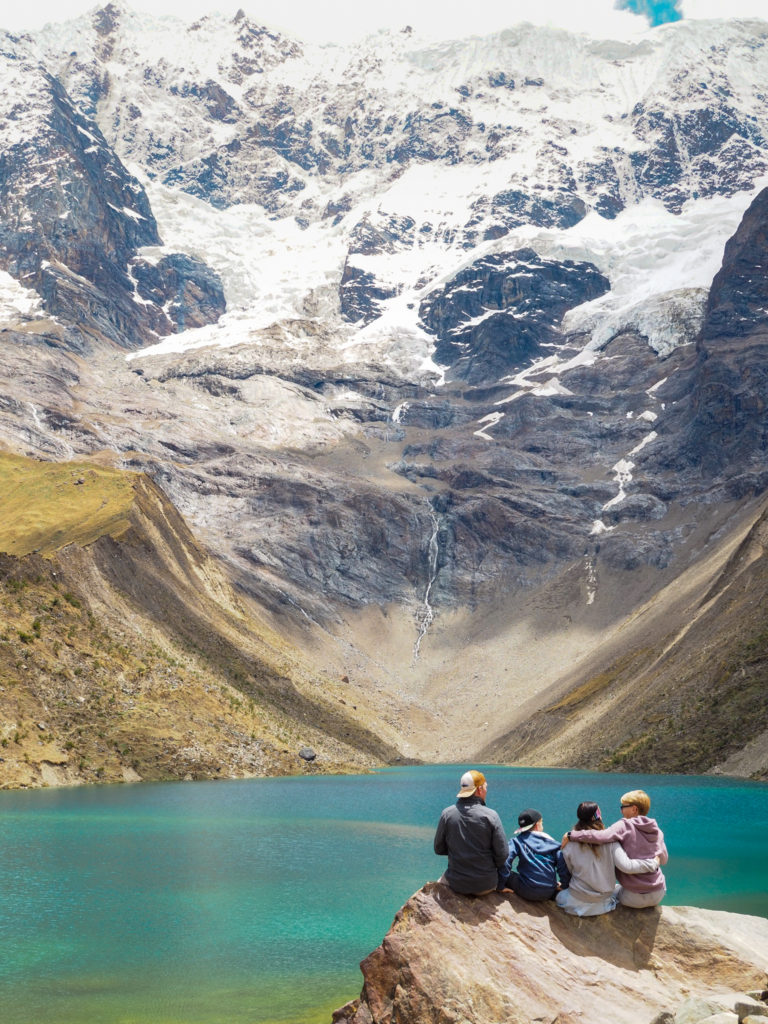
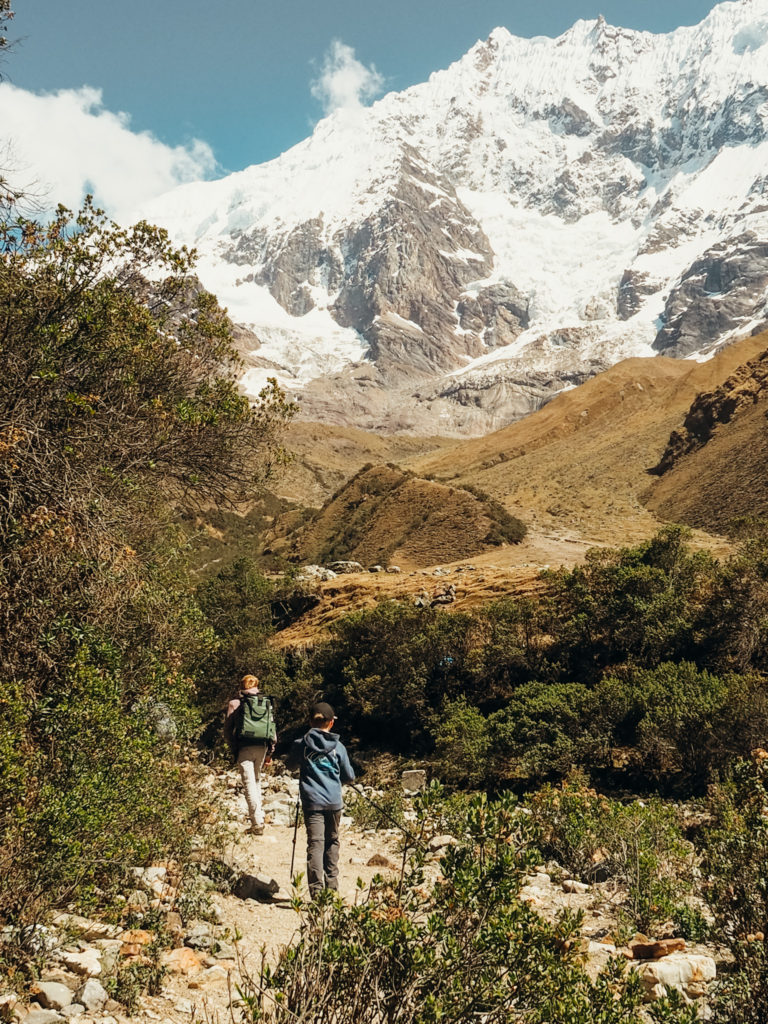
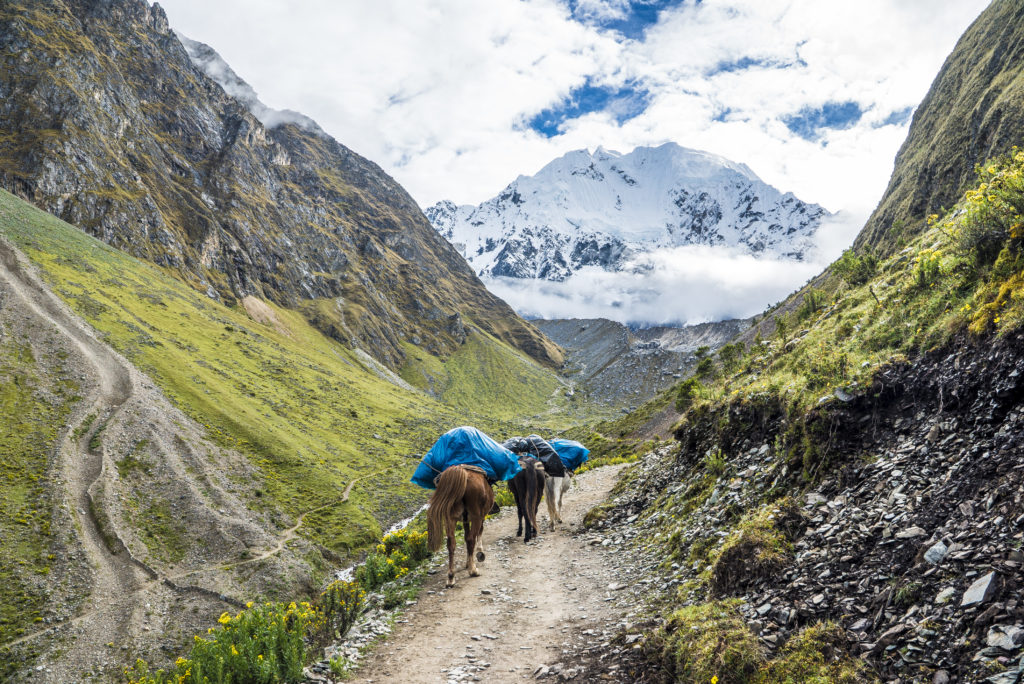
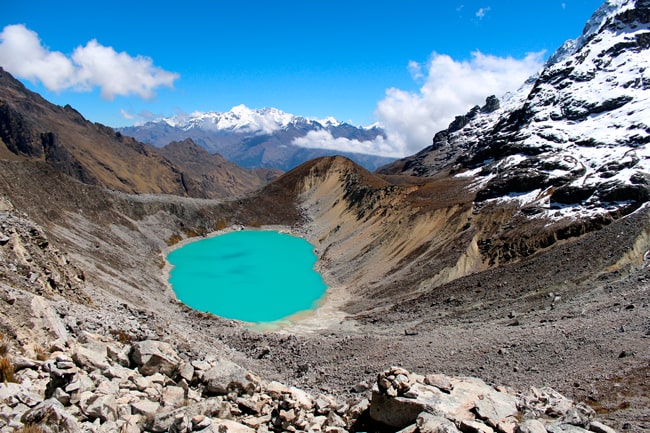
After returning to Cusco after two days of hiking, you will be ready for a day of minimal or light activity. You can spend that in Cusco sight-seeing some of the sights you couldn’t get to earlier, or you can head to Pisac (about 45 min away). Pisac is a cute town surrounded by mountains in the Sacred Valley. Even though the major attraction here is the archeological site, the market in Pisac is worth going to just on its own. Every Sunday/Tuesday/Thursday all the local artisans sell their handmade crafts, textiles and art in one the biggest open-air markets in the valley.
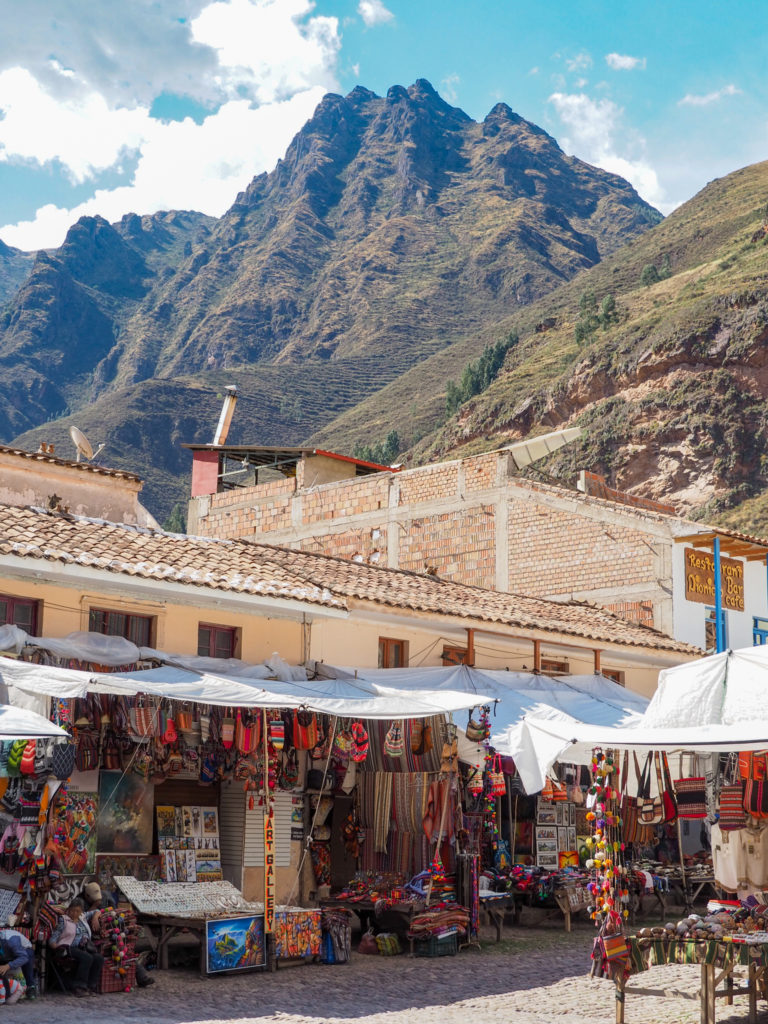
If you don’t have a rental car, it’s easy and cheap to get to Pisac by shuttle bus or “colectivo”. To catch a colectivo, go to Cusco’s Bus Terminal to Pisac/Urubamba. Colectivo costs $2 per person. If you plan to visit the ruins in addition to the market, simply get a taxi from Pisac to shuttle you there.
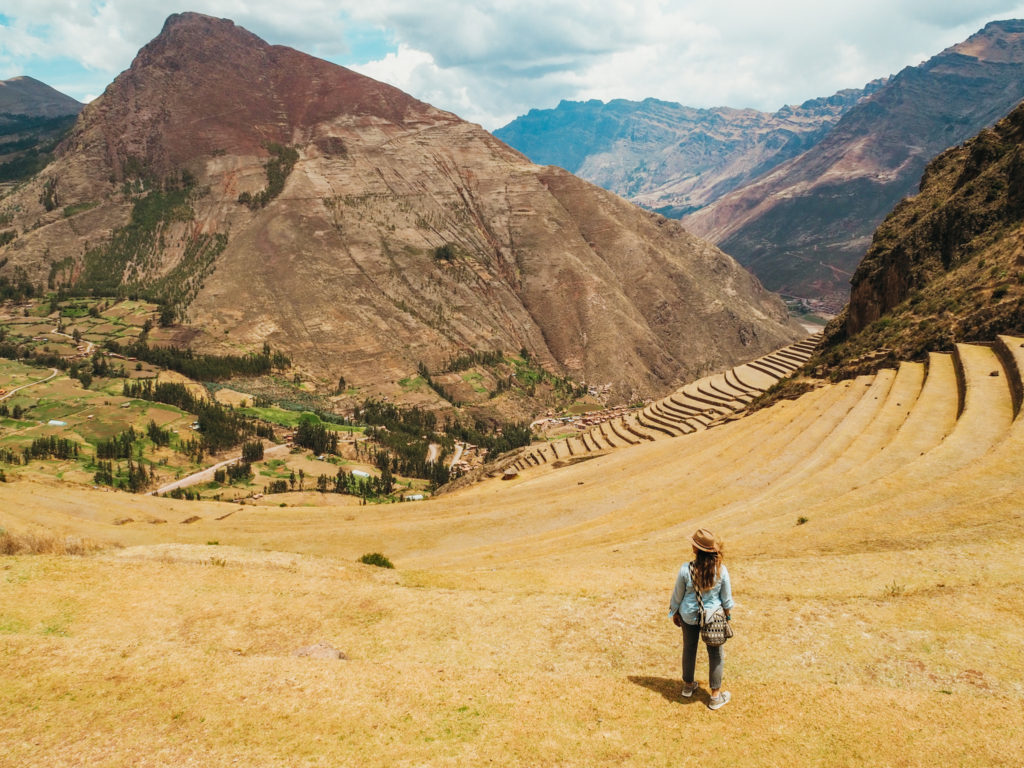
You can’t come to the Cusco region without seeing the famous Rainbow Mountain, otherwise known as Vinicunca. It’s a long drive from Cusco (3 hours one way), but it’s worth it because there’s nowhere else in the world like this. The reason we saved this excursion for the end of this itinerary is because of the high altitude. The elevation at the top of the trail is just over 17,000 feet (5,200 meters), and even though the hike isn’t too long (6 miles or 10 kilometers round trip), it is a steady incline.
For that reason, you might want to consider riding a horse instead of hiking. The local community operates the horses at the bottom of the trail, so for a relatively small fee, you can pay for a horse to take you up the trail. *Side note: The horses aren’t permitted to go all the way to the top, so there will be a little hiking that you will have to do the last bit of the trail (20-45 min depending on your speed). You will be rewarded with views of the Andes Mountains the whole way up.
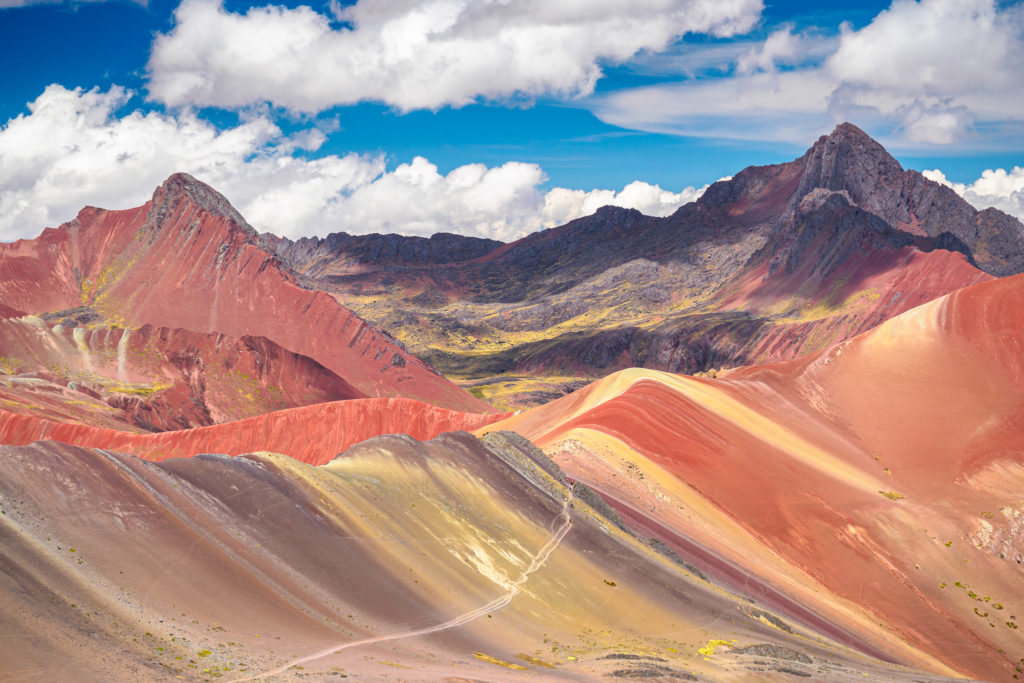
Depending on the time of year you come to Rainbow Mountain, you might have rain or even snow. Between the months of Nov and March, you have a higher chance of having overcast skies and precipitation. While Rainbow Mountain is still beautiful with snow on it, if it’s completely covered in snow, you won’t get to witness the vibrant colors of the mountains. In addition, if you have rainy/overcast skies, the colors won’t pop as much. So, if you happen to be in Peru during the wet season, try to keep an eye on the weather forecast and plan to go to Rainbow Mountain on a sunny, clear day.
Also, we would recommend doing this excursion with a guide, as this will include transportation plus breakfast and lunch. We loved going with Juan from Apurimac Adventures on the Rainbow Mountain Day trip. There is also another “alternative” Rainbow Mountain you might want to consider, called Palccoyo. It’s less busy than the more touristy Rainbow Mountain, however, the colors of the mountains aren’t quite as vibrant, in our opinion. We loved both excursions though. You can read more about both treks in 12 Amazing Hikes Near Cusco, Peru.
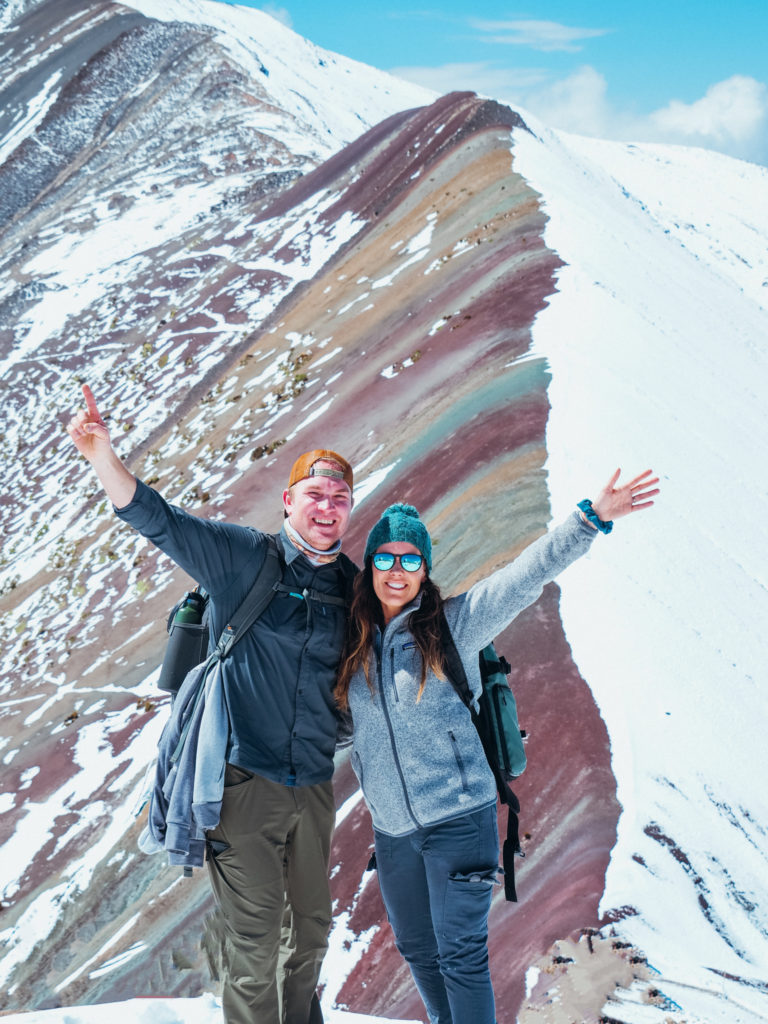
From Cusco, you will get ready to depart to the town of Ica, Peru. It’s possible to take a bus too, however keep in mind that the drive takes over 15 hours (long bus rides are best done on night buses). You can find cheap flights in-country, and it will cost you less than $100 USD per person most likely (perhaps even half of that). For that reason, we would suggest flying from Cusco to Ica. It’s a short flight and you have the rest of the day to relax and explore.
Ica is a relatively small town that is near the coast of Peru. It sits between two major tourist attractions–Huacachina, a desert oasis 20 min from town and Paracas National Reserve on the coast. Both are worth visiting and while you could certainly spend a few days here, two days is really sufficient. Also, we would recommend staying in Inca vs. Huacachina for two nights, as it is much quieter (Huacachina is known for partying into late hours of night).
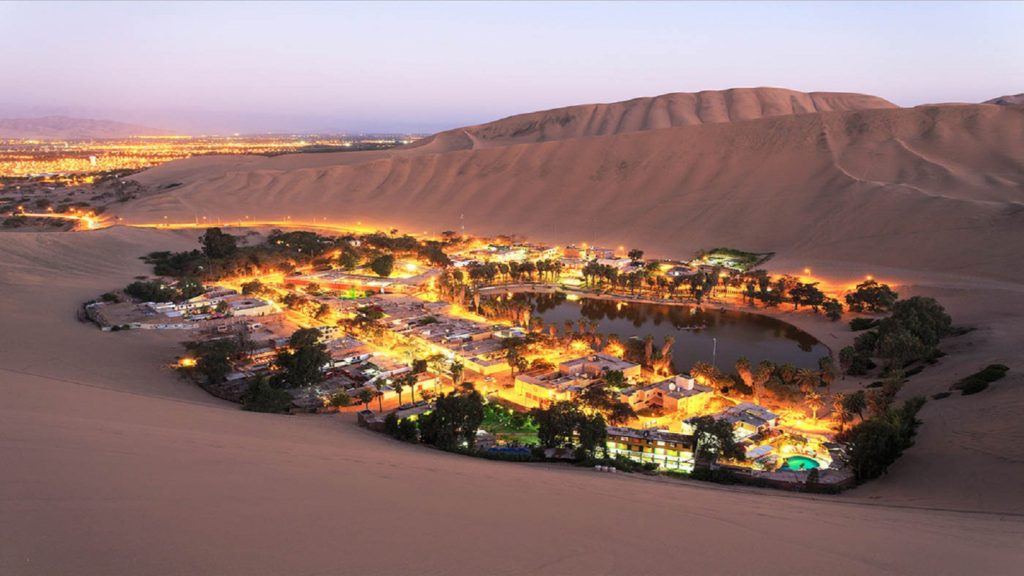
Once you’ve arrived in Ica, we would suggest getting a taxi and heading to Huacachina. The town is walkable in a couple of hours with restaurants lining the street, a park and lagoon, and vendors selling their goods. But the main reason people come here is for the sand buggy tours. There are several tour operators, so it’s easy to just walk down the street and choose one (they cost between $25-75/person).
Another option is to have your hotel/hostel arrange it for you (which usually includes transportation to/from Huacachina. Once it’s time for the excursion, they take you zipping around the sand dunes where you will get to try sandboarding too (so fun!), but also watch the sunset. The sand is also cooler this time of day, making it optimal for being on the dunes.
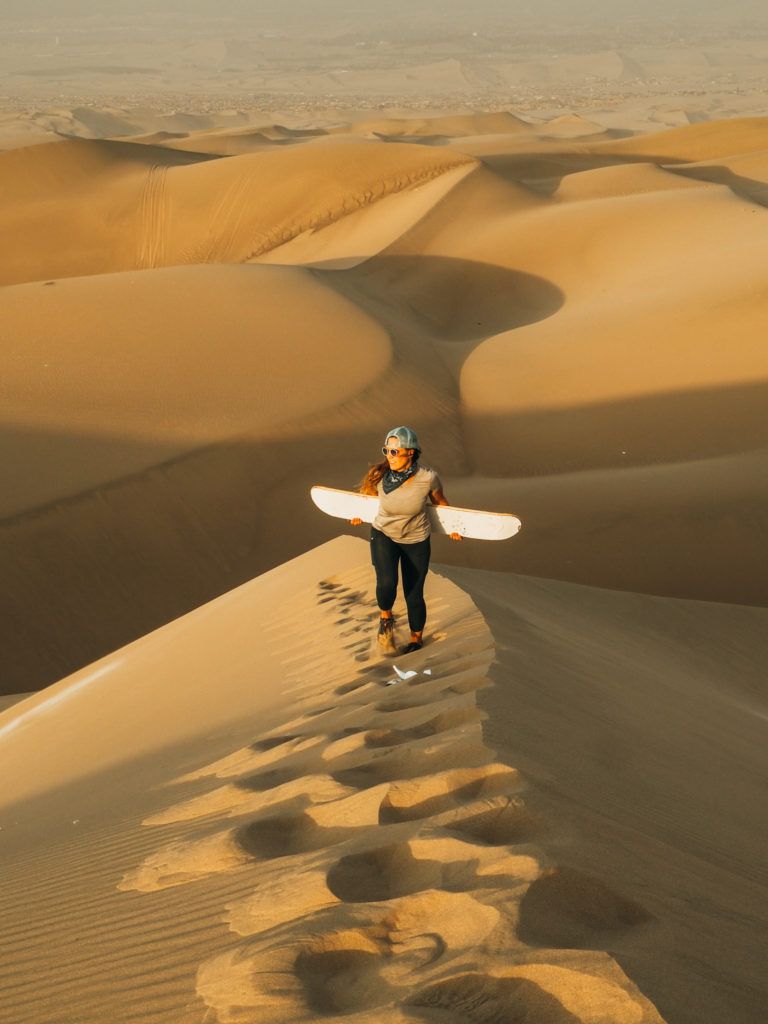
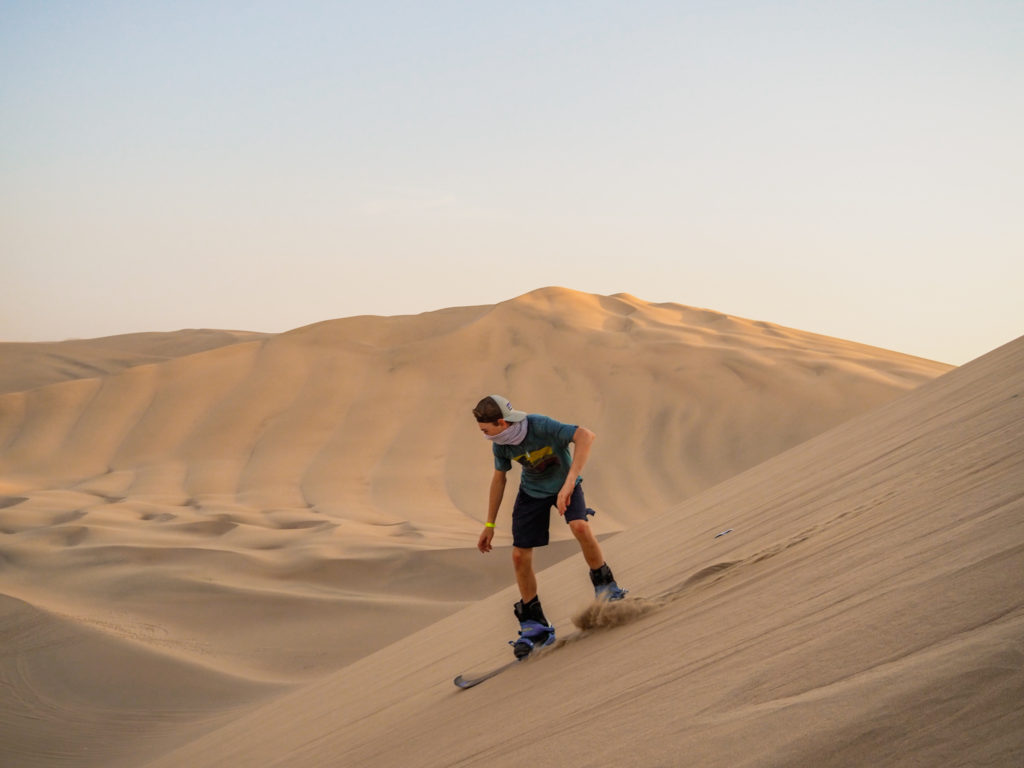
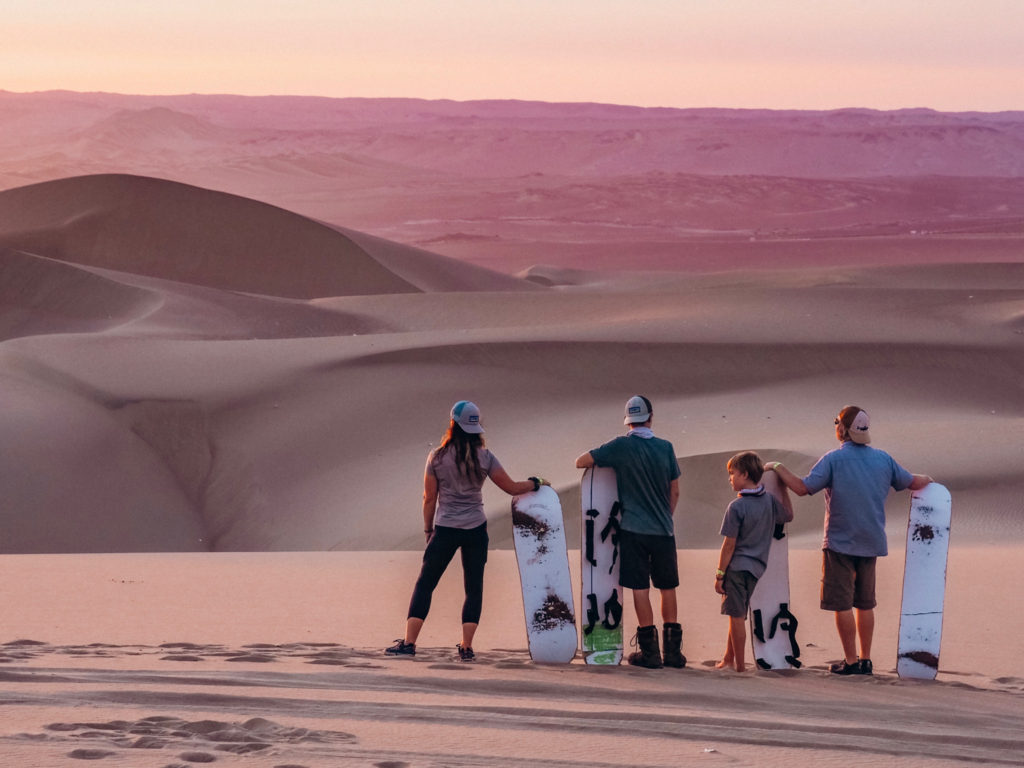
Amid the striking coastal desert of Peru is Paracas National Reserve, a protected natural area known for its marine wildlife and dramatic shoreline of wind and wave sculpted rock formations. Spanning over 3,000 km, it is home to over 400 species of flora and fauna, as well as the Humboldt penguin, the Peruvian booby, sea lions, humpback whales and dolphins. The reserve has breathtaking views where the desert meets the ocean.
The Ballestas Islands can also be found within Paracas. Nicknamed “Peru’s Galapagos Islands”, these rocky islands have gained popularity due to their diverse wildlife and untouched state. These rocky islands are home to thousands of birds and mammals including penguins, sea lions, pelicans and dolphins. The islands are protected, meaning they cannot be walked on by visitors. If you want to visit them, you will need to take a boat tour from the dock in Paracas. The boats take you out to Ballestas, so you can get close to the mammals while also remaining a safe distance and also not disturb the wildlife.
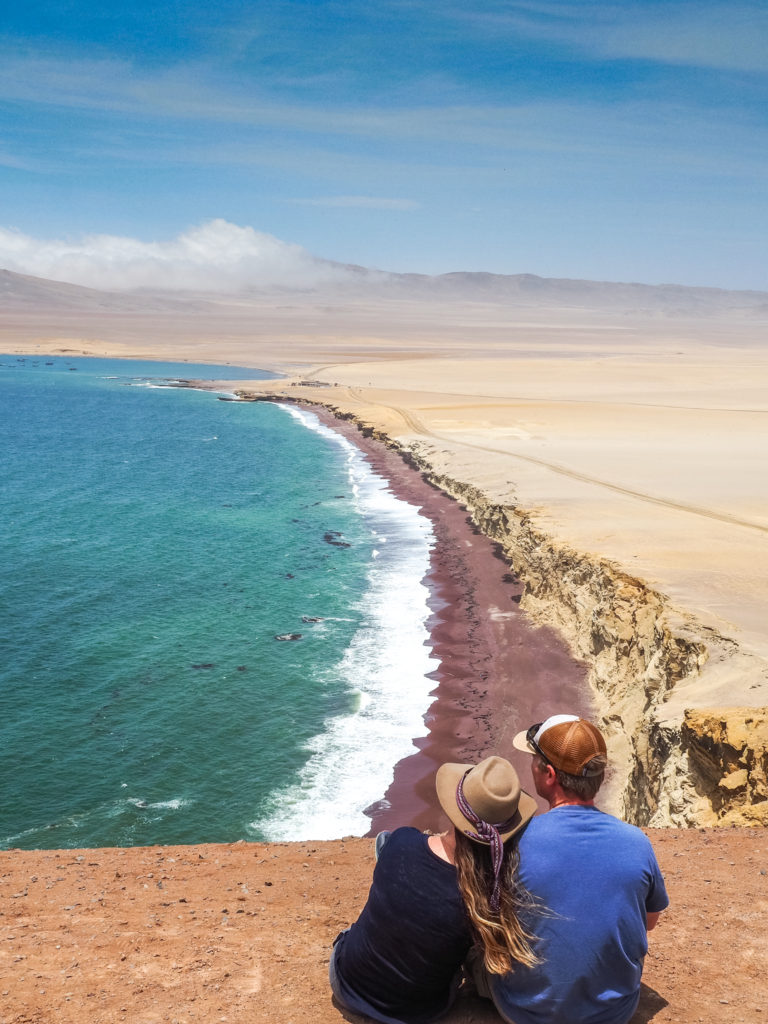
You can also hire a driver (we arranged this with our hostel) to take you to Paracas National Reserve for the day. We loved just driving along Paracas National Reserve and stopping at various viewpoints overlooking the shoreline. You can stop at some of the beaches such as La Mina, a gorgeous beach for swimming, with clear emerald waters. Other beaches worth visiting are Mendieta beach located in front of Zarate Island and Playa Roja, or Red Beach, where the picturesque shore is painted a deep reddish-brown color.
If you are looking for something a little more active, you could consider doing a bike tour in Paracas. This is a great way to get some exercise and see the reserve from a different perspective. Make sure to stop and try fresh ceviche from Restaurante Chalana, Cevicheria Rustikarreta, or Gourmet el Batan.
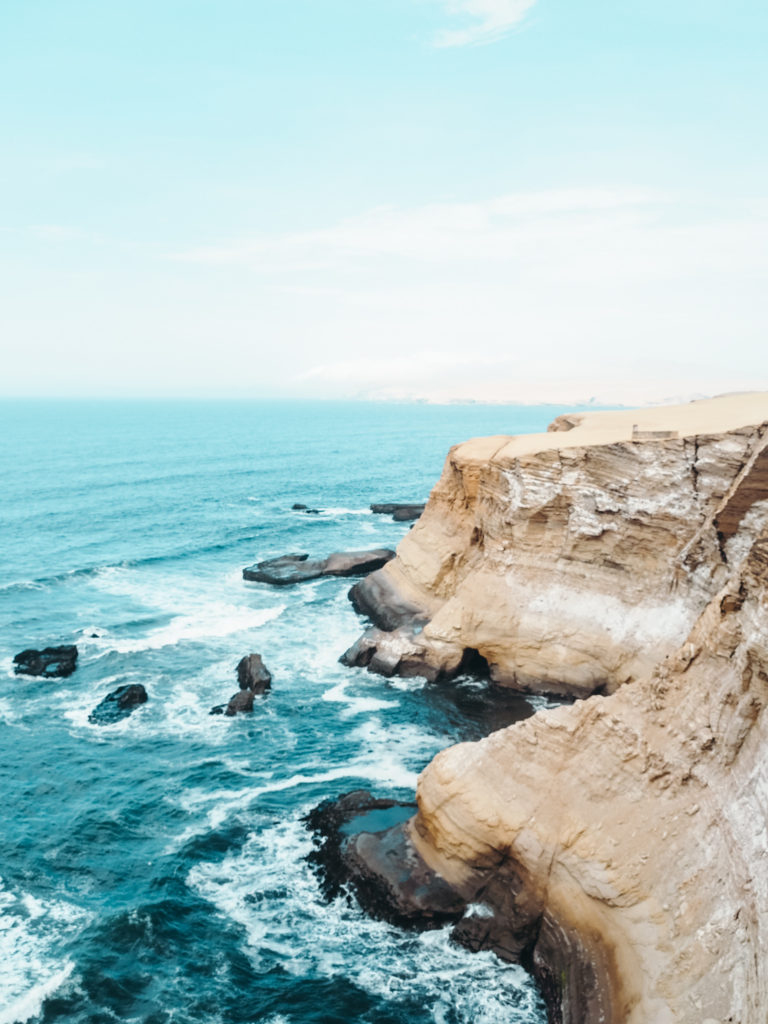
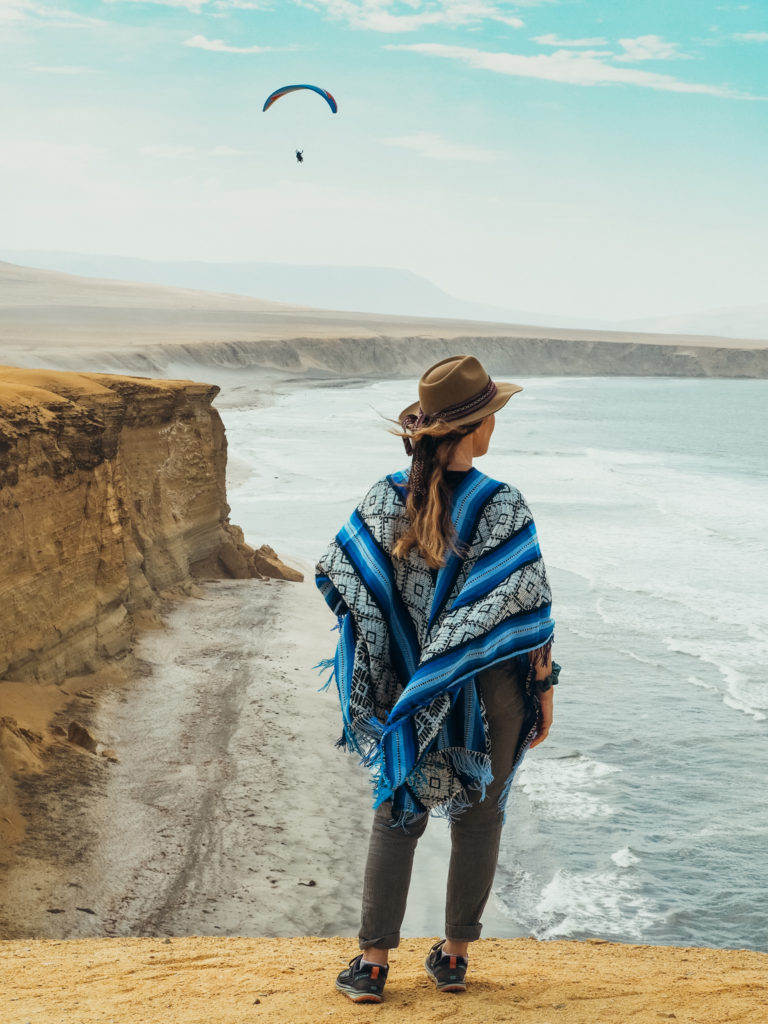
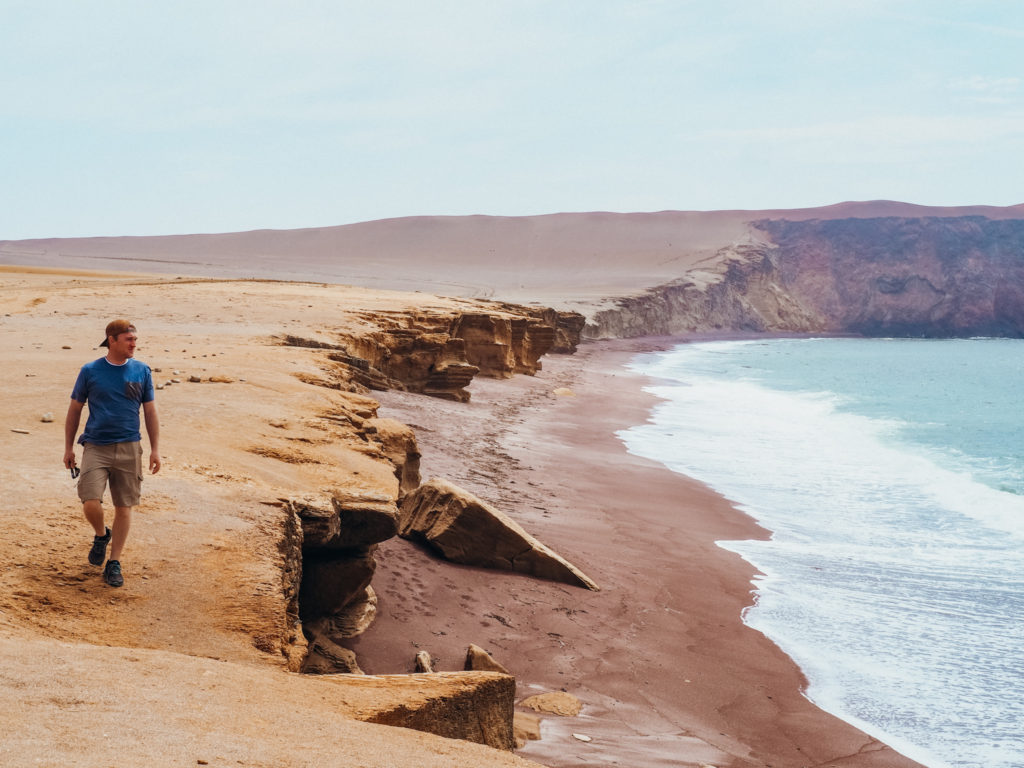
Only a 4 hour drive from Ica lies the capital city of Peru, Lima. Home to some of the best restaurants in the world lies this metropolitan city. We were not expecting to like Lima (we aren’t big city people!), however this city took us by surprise and we found that it is worth spending a day or three before heading home. Here are some of the best activities to do in Lima with kids (many are free!):
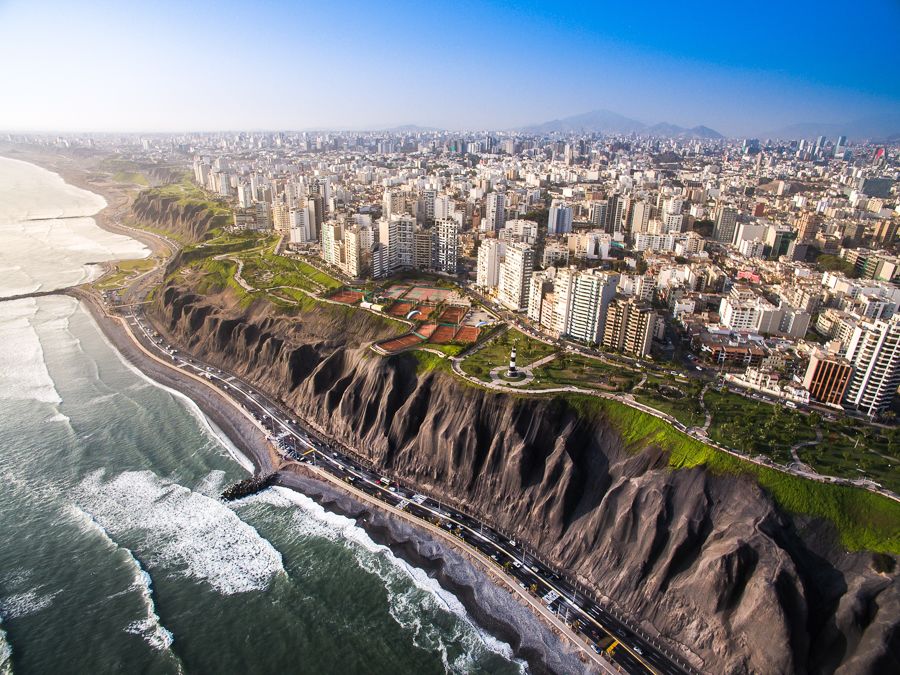
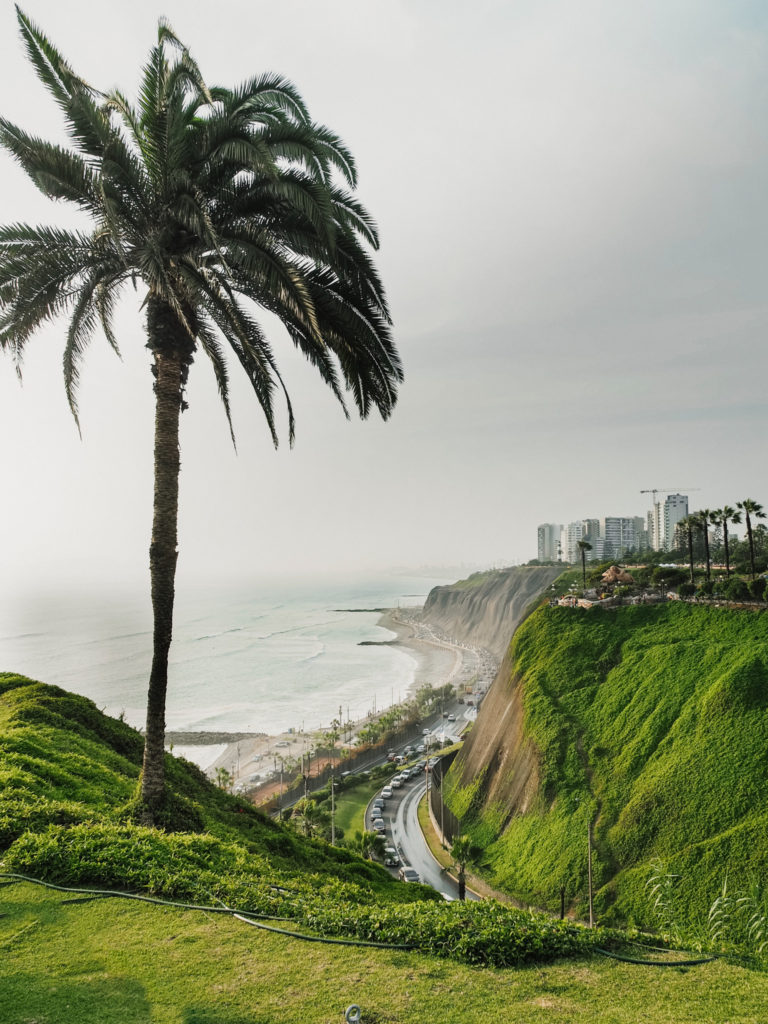
When you finish your 14 day family adventure itinerary in Peru, no doubt you will be exhausted, but it will truly be a trip of a lifetime. Peru is one of the most diverse places in the world and even though you will barely scratch the surface in just two weeks, you will also be quite satisfied with everything you witnessed and experienced. From ancient Incan ruins, lush cloud forest, the breathtaking and vast Andes mountains, the quaint and cobblestone streets of Cusco, and the beautiful desert and coastal areas of Peru–surely, you will leave a piece of your heart in Peru. It’s a country that will beckon your return over and over again.

During our 2.5 months stay in Peru at the end of 2019, we covered a lot of ground. Literally. We especially fell in love with Cusco where we set up base for 2 full months. It seemed like the perfect central location to take advantage of the sights, Inca history, and of course, the amazing landscapes near the Sacred Valley and Andes mountains. From hiking to Inca ruins, waterfalls, incredible vistas and jaw-dropping mountains, we were on a mission to discover the best day hikes near Cusco.
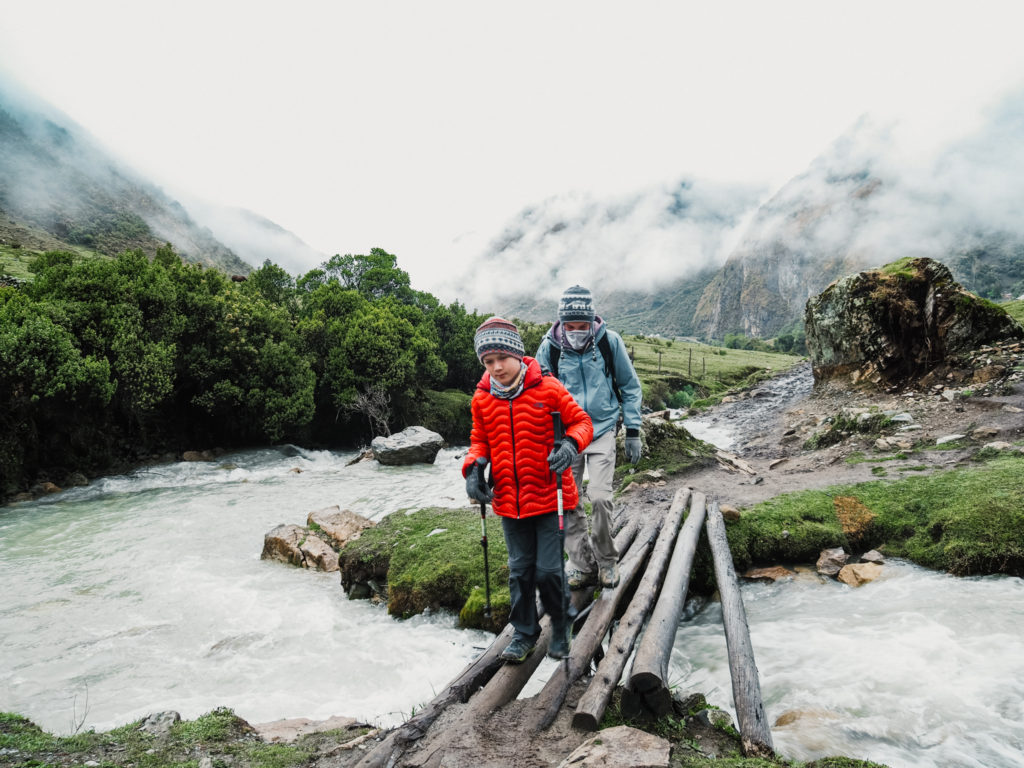
Cusco is the heart of the Incan civilization and also the gateway to the Sacred Valley. Most people think of Machu Picchu when they hear the words “Sacred Valley”, but there is so much more to this region than solely the world-famous ruins. Don’t get me wrong–Machu Picchu is absolutely worth a visit and should be #1 on your list when you visit Peru. However, it wouldn’t be fair if you didn’t add some of these incredible day hikes to your list while you are in Cusco.
*An important note about Cusco: the city sits at approx 11,000 feet in elevation. Yes, the altitude is no joke! But don’t let that deter you. With extra precaution and careful preparation before and during your stay (especially the first few days as you acclimatize), you will be just fine. This means try not to do anything too strenuous until you’ve been in Cusco for at least 3-4 days ideally. In addition, when you arrive, do what the locals do and sip on coca tea, which is supposed to help and minimize the possibility of altitude sickness.
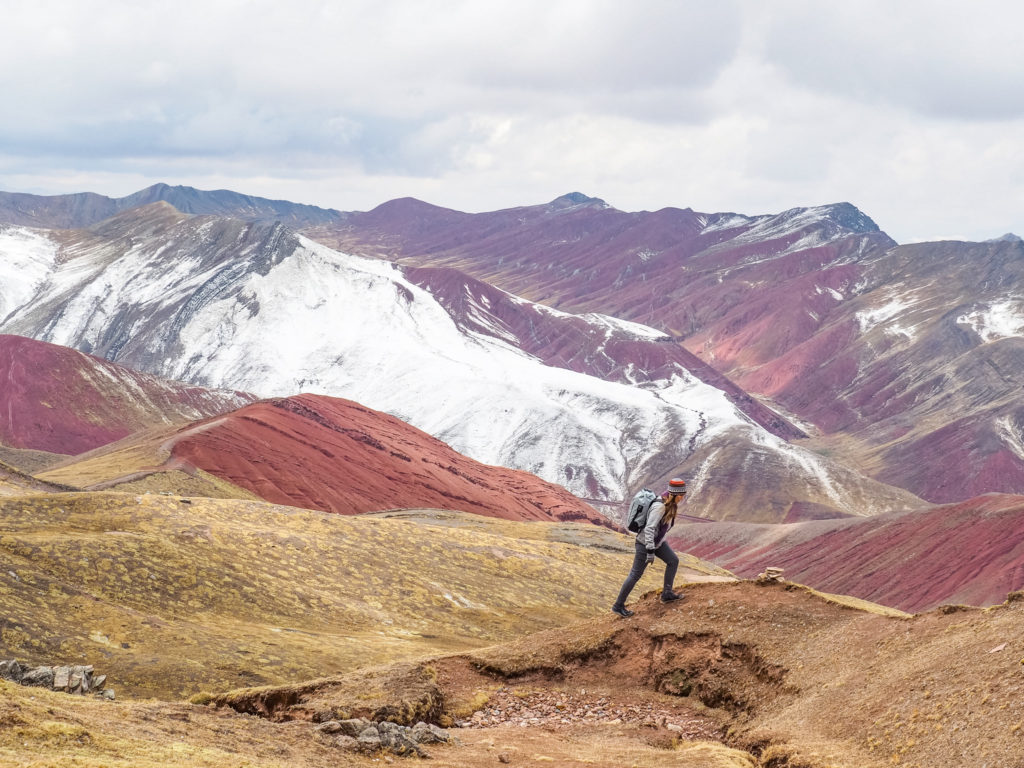
Spend those first few days in Cusco sightseeing the historic center (Plaza de Armas), visiting a few museums, shopping for beautiful textiles and eating delicious Peruvian food. Some of our favorite restaurants or eateries in Cusco were: Morena Peruvian Kitchen, Los Toldos Chicken, Korma Sutra, Inka Grill, La Bodega 138, Marcelo Batata, Pacha Papa, and the San Pedro Market.
Once you have adapted to the altitude, it’s time for a hike! The following 12 best day hikes near Cusco take you around the city, into the Sacred Valley, and even a little bit farther to the breathtaking Andes mountains. You will see a wide variety of landscapes, get up close and personal with the Inca culture and be blown away by all that Peru has to offer.
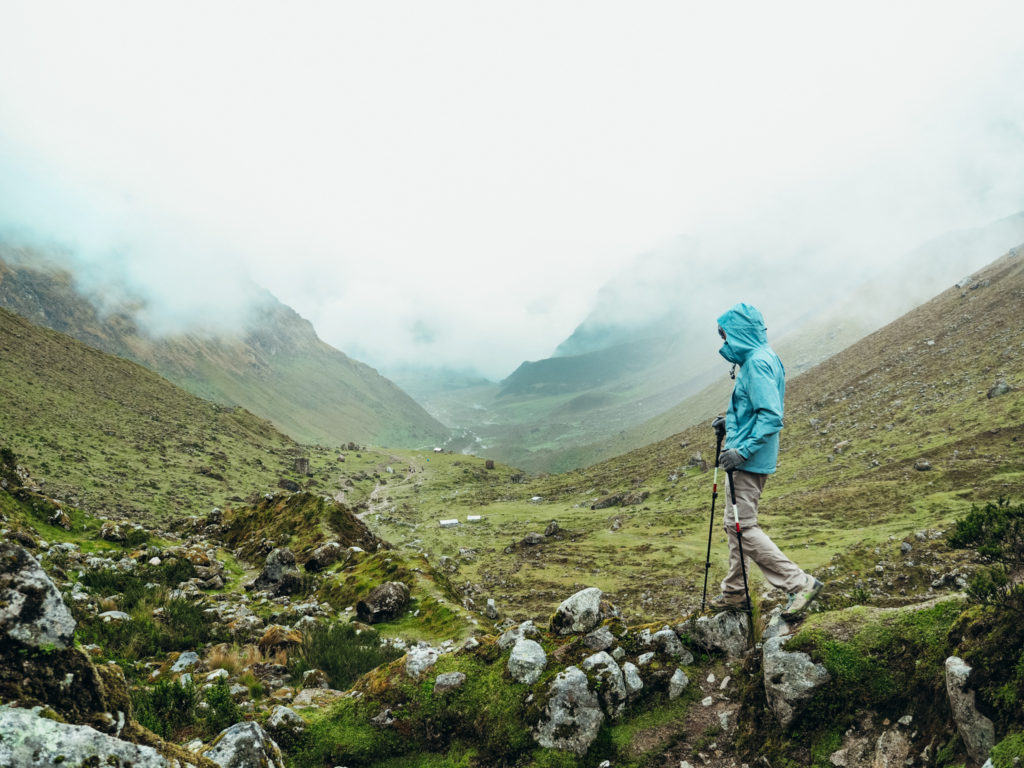
This great day hike is the closest one to Cusco, as it sits right above the city overlooking the historic center. Most people just get a taxi to the Sacsayhuaman ruins from Cusco, however, you can also combine it with a network of ruins — smaller and lesser known sites — that take you away from the crowds and show off the impressive architecture and Inca heritage of Peru. The best way to do this is to get a taxi to Tambomachay and then start the hike from here, which takes you past the other ruins (Tambomachay, Puca Pucara, Q’enko) and ends at Sacsayhuaman.
You will be amazed at the complexity of the massive stones at Sacsayhuaman which offers panoramic views of the city below. There are also often llamas grazing at these ruins which make it extra special!

Another hike close to Cusco is Huchuy Qosqo, a beautiful and quiet trail on the outskirts of town. It is also the shortest hiking option in the Peruvian Andes and suggested for a good acclimatization to the high altitude, especially as a training for multi-day treks in the Andes. The 11-mile day trek follows the Inca trail and leads to ancient ruins that were once the summer home of an important Incan king.
First, you want to take a colectivo to Laguna Piuray. When you arrive at the lake, take a taxi to the start of the Imperial Incan trail. The trail is well marked and you will witness breathtaking views of the mountains and surrounding glaciers before heading down into the valley to the town of Lamay, where you can take a collectivo back to Cusco.
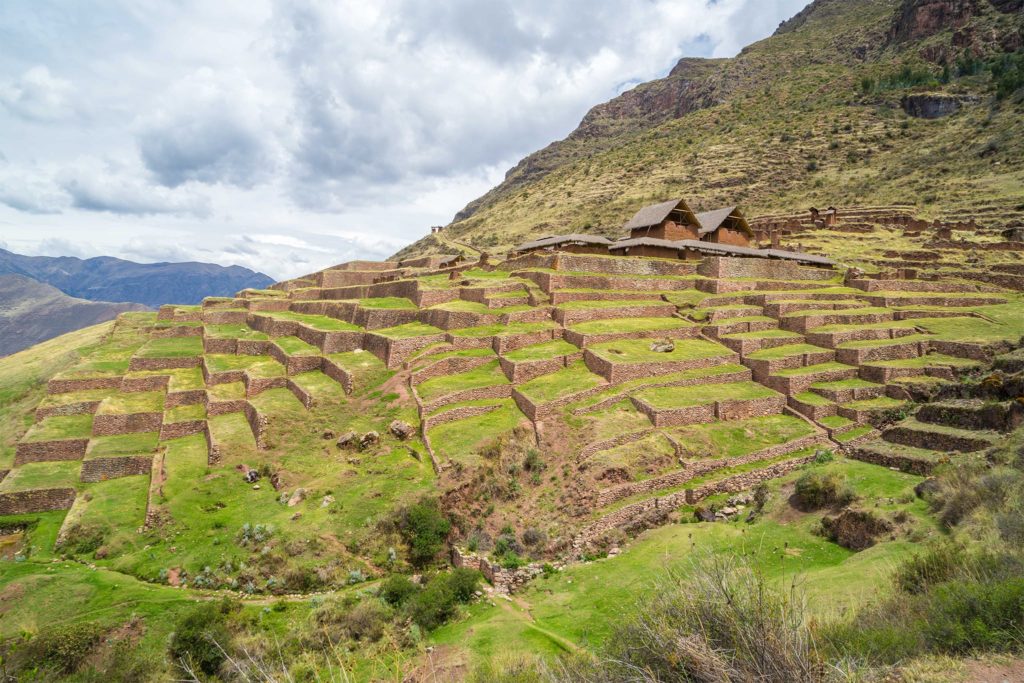
The hike from Chinchero to Urquillos was unexpected in a good way and the best part? It’s downhill most of the way and relatively unknown, making this 5-mile trail a great off-the-beaten-path option. We did a full day tour with Peru Eco Expeditions, in which we observed a traditional weaving ceremony, visited the ruins, and then hiked from Chinchero to Urquillos. We finished the day with a late lunch and it was fabulous!
If you prefer to hike on your own, you can hire a taxi (or Uber) to Chinchero, which boasts beautiful mountain views and is famous for its weaving traditions. From the ruins, you will see a path that descends into the Sacred Valley via well-worn Inca trails, finishing in the colonial village of Urquillos. From there you can hire a transport to return to Cusco.

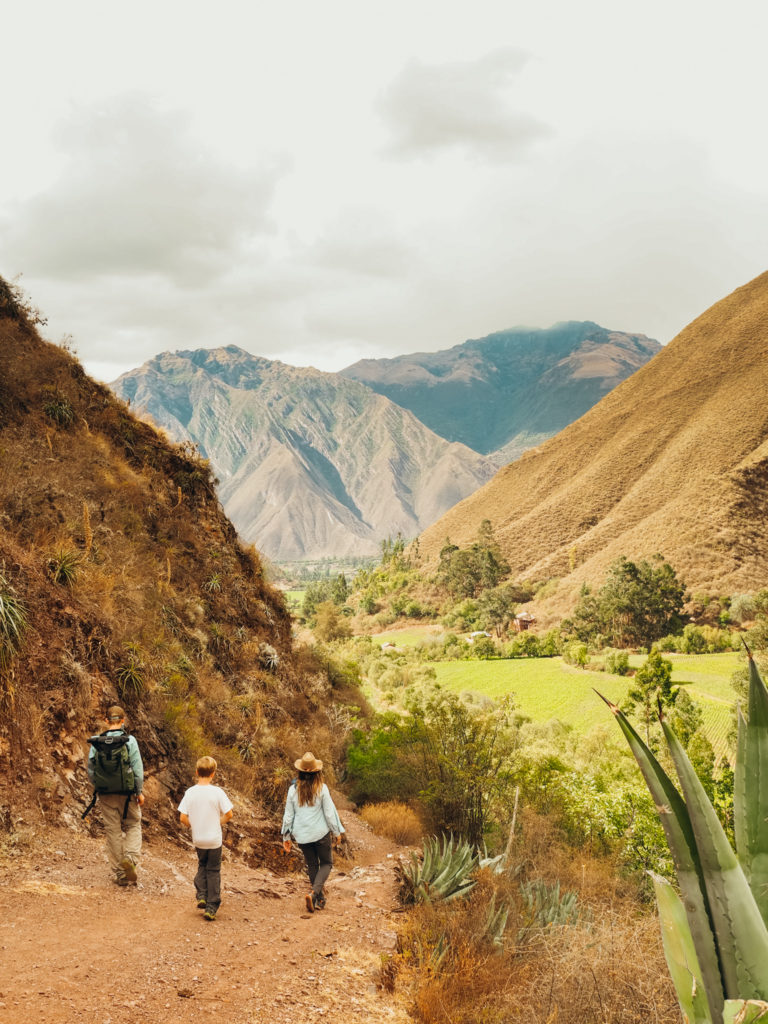
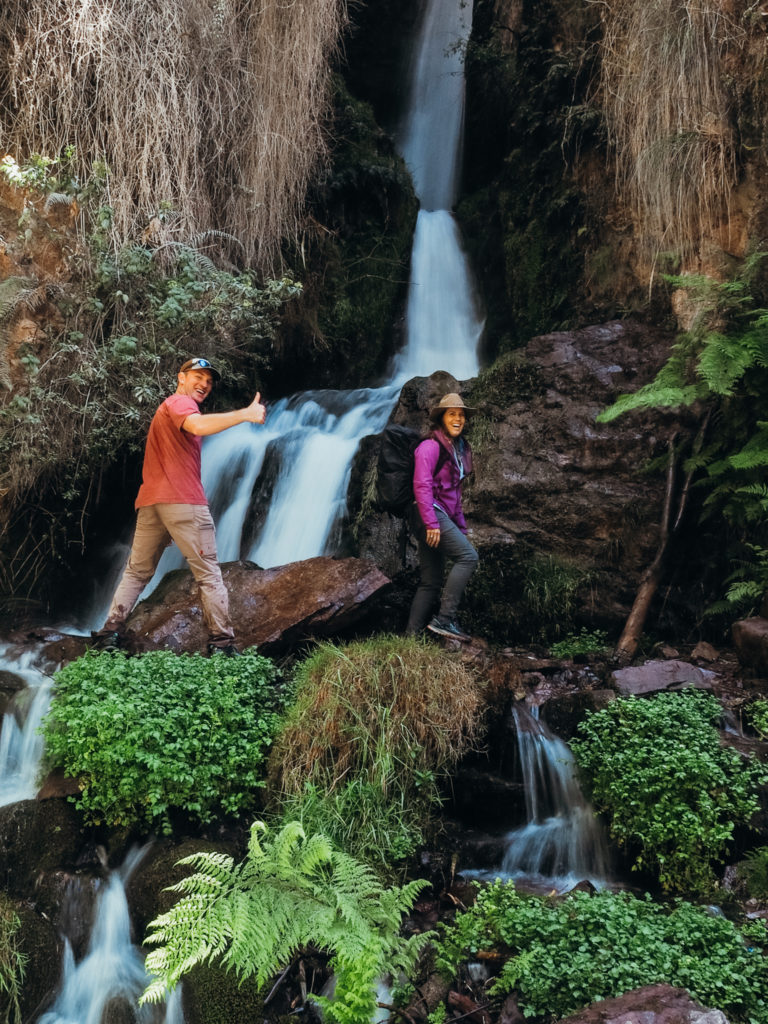
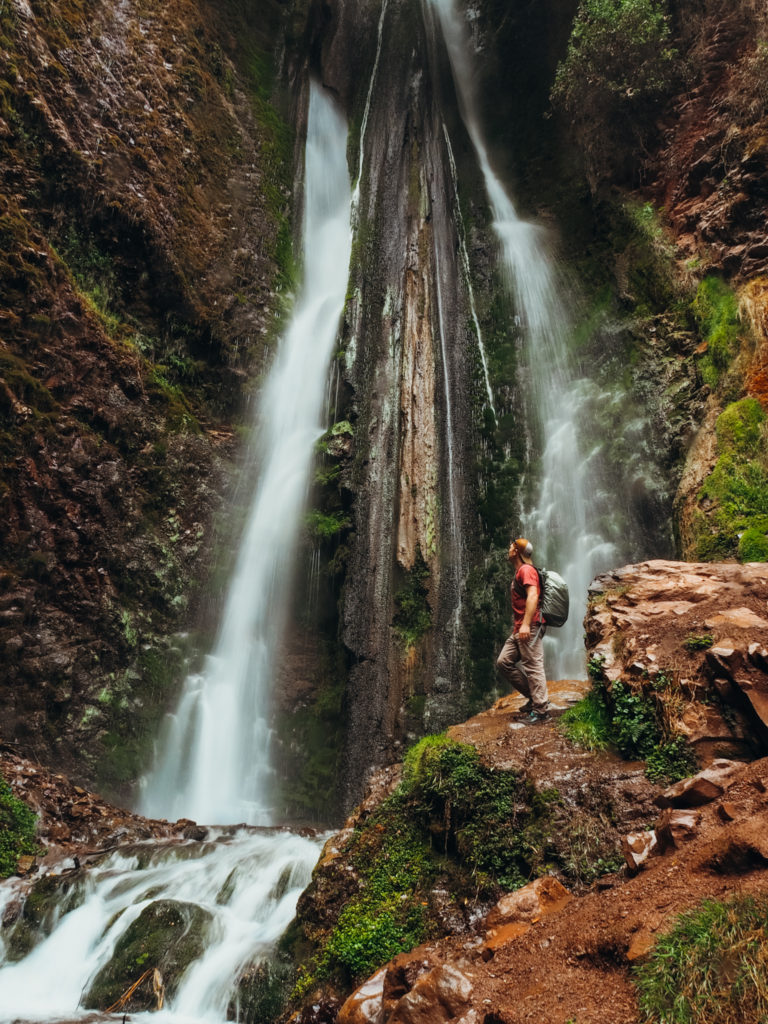

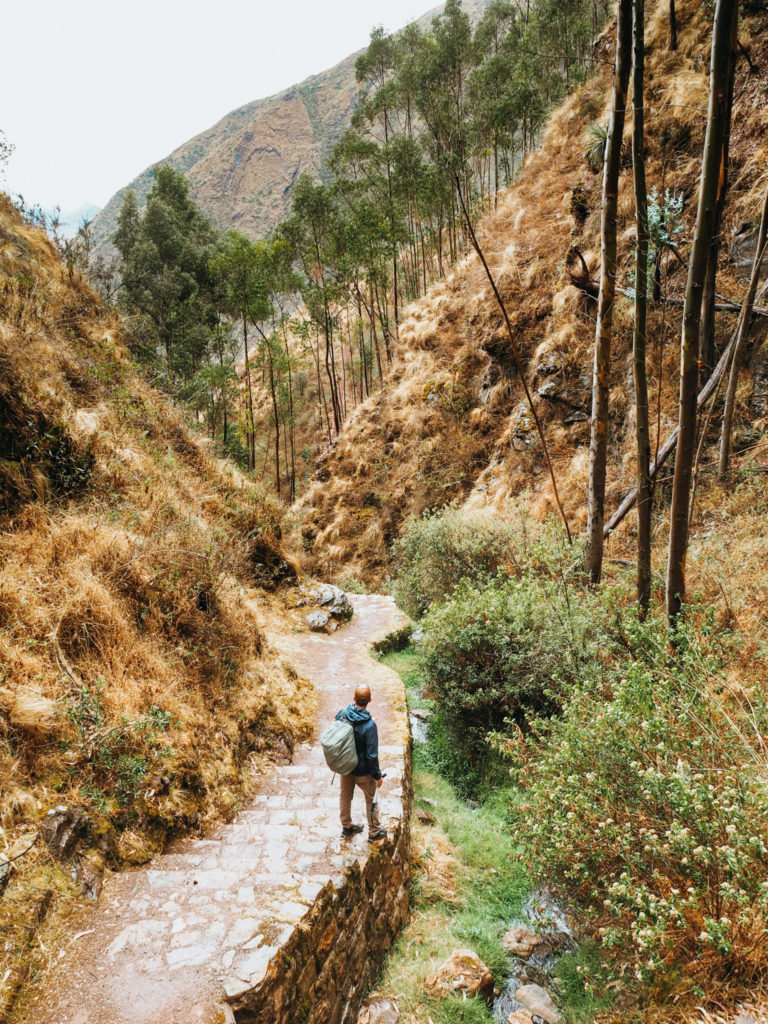
You might have seen photos of the famous salt mines of Maras, but did you know you can hike to this sight from the Moray ruins in a day? This easy-to-moderate 7.5-mile hike across Andean farmland connects two important Incan sites: the agricultural terraces of Moray and the salt evaporation ponds near Maras. Be prepared to have your mind blown!

Begin your hike at the terraces of Moray, where you will learn that each terrace drops in temperature by about 2 degrees. The Incas used these terraces to find out what crops grew best in which temperatures–talk about fascinating! From here, you will hike along the Mule trail away from Moray for just over three miles until you reach the colonial village of Maras.
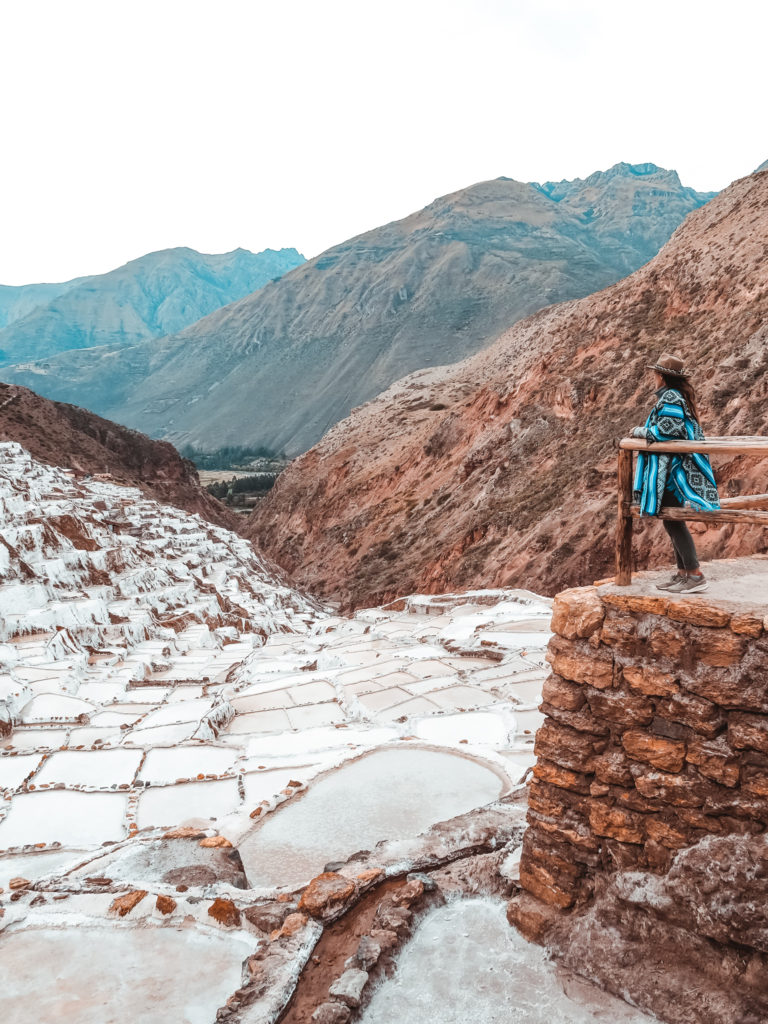
Once in Maras, it’s another three miles downhill until you encounter the salt mines of Maras. These shallow salt ponds have been used since pre-Inca times to harvest salt through the process of evaporating salty water. This place is truly unique! Make sure to taste the different salts and even buy some to support the local community. From Maras, continue hiking downhill to the Urubamba River, cross over the bridge, and walk two blocks to the main highway to wait for a colectivo.
*Side note: If you prefer not to hike, or are short on time, we would suggest looking into doing this Sacred Valley tour with Apurimac Adventures which includes both of these sites (plus other stops in the Sacred Valley). Amazing excursion and you will learn more about these fascinating ruins by going with a guide!


Getting here: Take any colectivo from Cusco (you can catch one at the Grau bus terminal) that heads to Urubamba via Chinchero and ask to be let off at the Maras/Moray turn-off. Cost is around $2/person. From there, hire a taxi to take you the remaining six miles to Moray (alternatively, and for about $15-20 USD, you can hire a taxi from Cusco to take you directly to Moray). This one-way hike ends at Av. Ferrocarril about four miles west of Urubamba. Wave down a passing colectivo and get off at Urubamba, where you can transfer for another colectivo headed to Cusco.
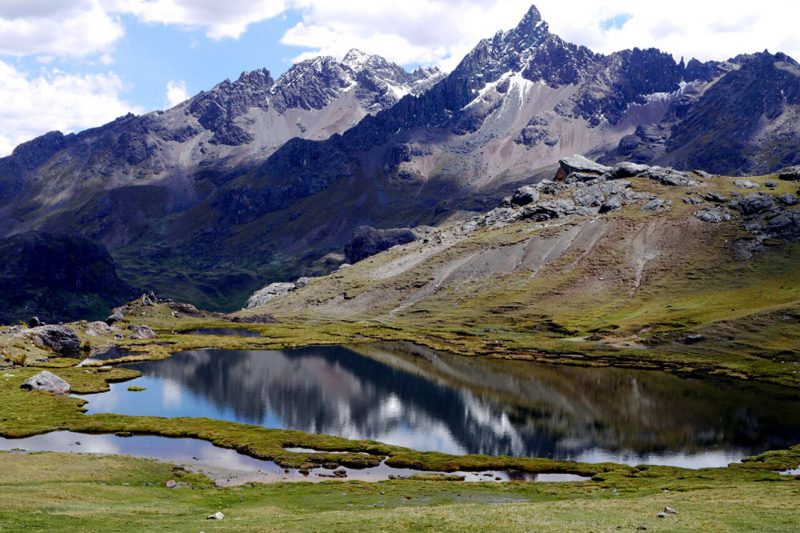
This hike near Pisac, about a 45 minute drive from Cusco into the Sacred Valley is about as picturesque as they come and totally off-radar. It’s important to note that you will need to arrange transportation from Cusco to Pisac via colectivo first, and then once in Pisac, you will catch a taxi to Kinsa Concha and BACK. It’s important to negotiate a round trip price and have your driver wait for you at the Kinsa Cocha lakes because otherwise you won’t be able to catch a ride back home. This will end up costing a bit more, however it is well worth the $30-40 trip.
When you negotiate your price, make sure it’s to visit the Kinsa Cocha Lake and Laguna Azul because the third lake is about 1.5 miles down the road from the first and won’t be included in the price if you don’t specifically ask for it. Before you set off, make sure to agree to a time with your driver for how long you want to hike (3 hours is probably adequate). From here, there are trails going around both sides of the lake and you can choose your route.
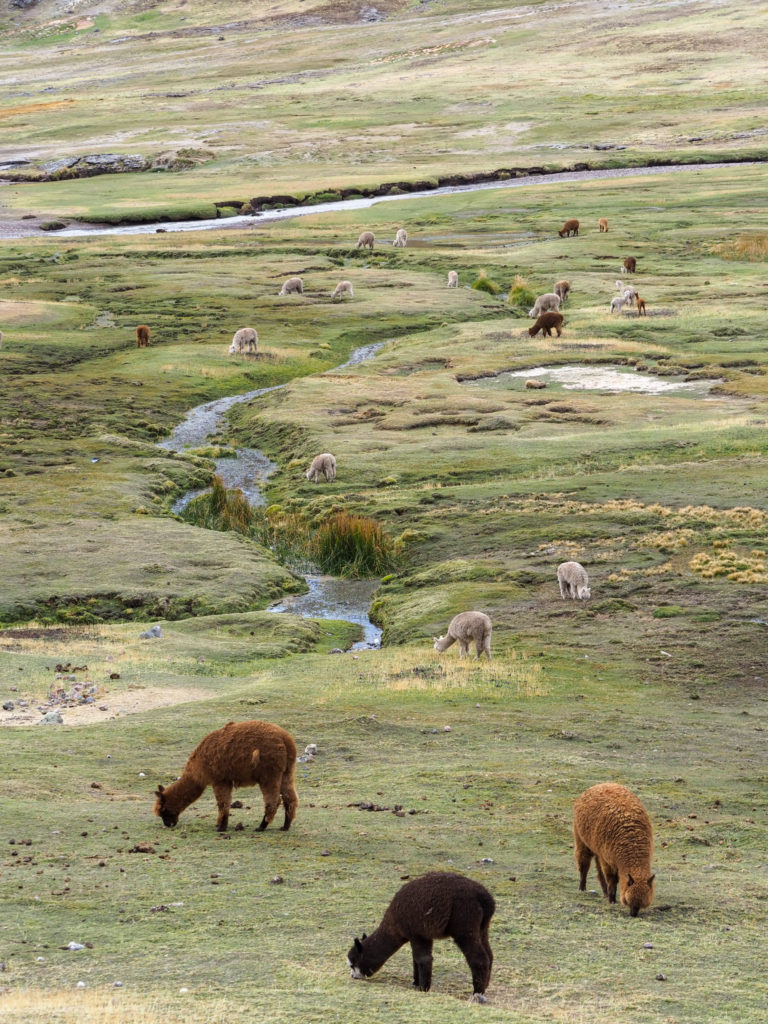
After you reach the first lake you will arrive to the area where the first lake connects with the second. After passing the first two lakes, you will walk further into a valley (you will most likely spot alpacas grazing). Eventually you will come to a mountain wall. If you chose, you can climb up on the ledges on the left side of the valley and walk back on the trails high above the valley, overlooking the lakes in the distance.
This trail also returns to the starting point where the taxi driver should be waiting for you. To get to the third lake, the driver will head down a bumpy road for about a 10 min before arriving to Laguna Azul.

You can’t go to Cusco without a visit to the Pisac ruins and market, so why not combine them and hike from one to the other? This easy two-mile hike takes you down a steep hill through the expansive Incan fortress of Pisac. Begin with a quick stroll atop the ancient agricultural terraces up to the Qalla Q’asa sector, which looks out over three Andean valleys.
Once you’ve explored the ruins above, follow the path that goes alongside a ridge below and then through a rock tunnel toward the Inti Watana and P’isaqa sectors. Here lies well-preserved temples, as well as working water channels and stone walls showcasing meticulous masonry. Eventually you will take the steps that lead into the picturesque artisan market of Pisac town, which hosts probably the best market for textiles and handicrafts in the Sacred Valley. *Pro tip: Go on Tuesday/Thursday/Sunday when the market is biggest.

Getting here: Take a colectivo from Cusco’s Bus Terminal to Pisac/Urubamba. Once in Pisac, hire a taxi to drive you 20 minutes up a winding road to the entrance gate for the archeological site. Colectivo costs $2 per person while the taxi will charge you $10. Once you are finished hiking and enjoyed the market in Pisac, catch a colectivo back to Cusco on the main road.
Tucked away near the beautiful town of Ollaytantambo in the Sacred Valley lies this hidden gem–the Pelroyniyoc waterfall, also next to some ruins. These falls are spectacularly perched atop a cliff, making them even more dramatic. Arrange for a taxi from Ollantaytambo to the village of Socma (a 45-minute taxi ride from Ollantaytambo), where you begin the steep hike. Socma offers perspective on rural life in the Valley. Above the falls there are a few remote communities that will occasionally welcome travelers into their homes if you arrive with a local guide.

About 3 hours from Cusco, but worth the long drive sits Palccoyo, also known as the “alternative Rainbow Mountain”. We did this hike with Exploor Peru and loved it so much! This trail is lesser known than the more popular, but over-touristy hike to Rainbow Mountain. We started the day early and drove to a local restaurant half way between Cusco and Palccoyo, where we enjoyed a delicious breakfast.
From there it was another 1.5 hours to the quaint village of Palccoyo, where our guide introduced us to a local man who gave us a wonderful explanation of the farming techniques that they use in this high-altitude town in the Andes Mountains. For example, they grow over 300 varieties of potatoes here! We also learned all about the tools they use for farming and also, saw the beautiful textiles that the women make. It was fascinating and eye-opening.

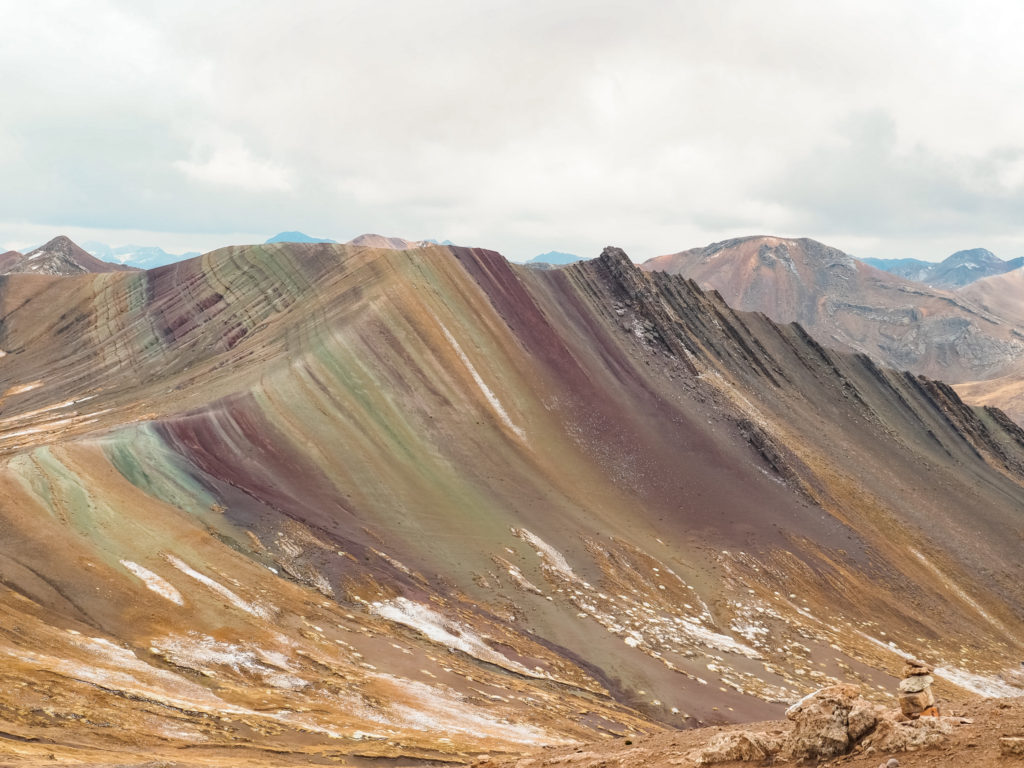
After an hour tour of this village and town, we then started our hike on Palccoyo. The weather started out as partly cloudy and snowy, but then as the day progressed, the sun started to come out. We hiked with another local guide and his friendly alpaca, Oso, which he let our son “walk up the hill”. The colors of the mountains started to pop when the sun came out and we witnessed brilliant shades of reds, yellows, greens, and even blues in the rock sendiment.
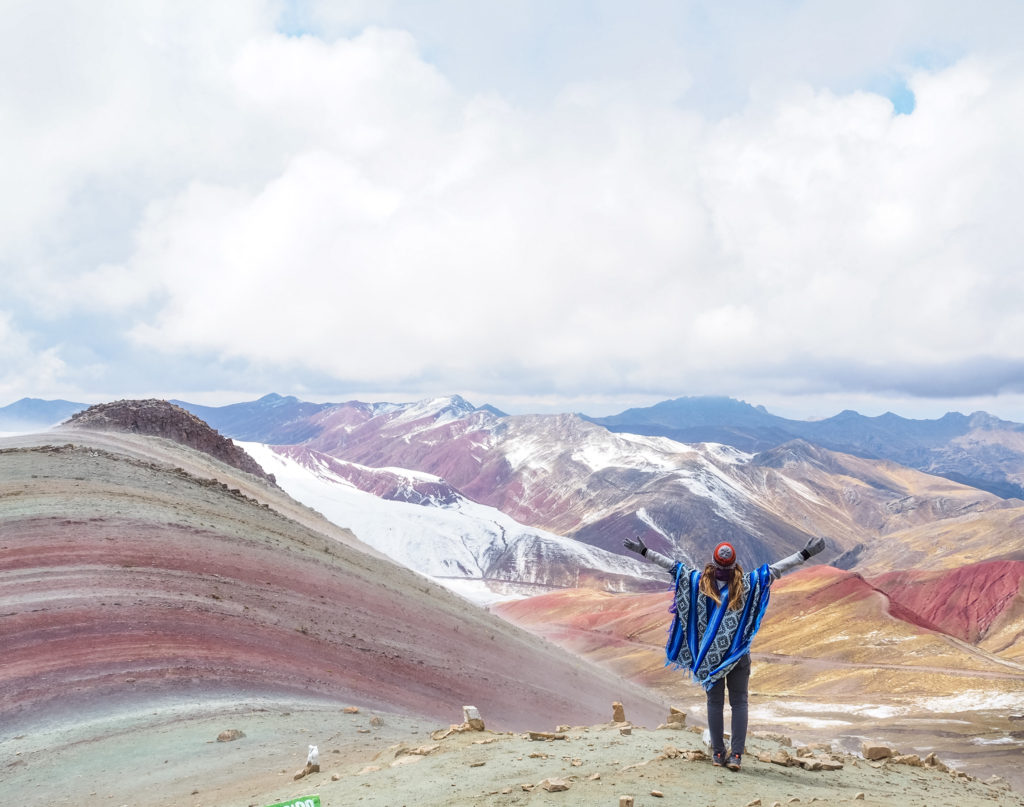
The entire hike was less than 3 miles round trip and moderate in difficulty, however the elevation gain can be tough if you haven’t acclimated yet. The highest we summited was around 16K, but the ascent itself was gradual. Make sure to walk very slowly and take deep breaths as you climb, as this will help your lungs get the air you need and also control your heart rate. Chewing on coca leaves too (it’s what the locals do!).
One thing we loved most about this hike is that we saw probably less than 30 people on the trail all day, so if you want to see the colors of the Rainbow Mountain without all the people, this is a definite must-do and Exploor Peru was a fantastic guide.

If you want to experience the high Andes mountains, you can’t miss this stunning day hike to Humantay Lake, just outside Cusco. To get here, you have a 3 hour drive, however when you arrive, you will be grateful you made the trip. Be prepared to have your jaw on the ground as you witness mind-blowing scenery along the entire 5 mile round trip hike. Snow-capped peaks that reach nearly 20K feet, glaciers, and jewel-colored lakes make up this trail.
This is another high altitude hike (the highest altitude we climbed was to 15K), so make sure to spend a few days in Cusco acclimatizing before taking on this hike.

We loved doing the Humantay Lake day hike with Apurimac Adventures because our guide, Juan was wonderful and knowledge about the mountains and history of the Incas. He even performed a special Incan ceremony in which we blessed the Mother Earth, or “Pachamama”, right on the shores of Humantay Lake. Truly a day not to forget!
Near Humantay Lake lies the trail to Salkantay Pass which also goes to Salkantay Lake. This is a moderate to difficult hike with lots of climbing and elevation gain, but the scenery is absolutely indescribable. On a clear day, you will have views of Salkantay Mountain along the entire trail, making this 9 mile round trip hike particularly photogenic. If you are an experienced hiker and in good shape, put this experience on your list! One more thing to note: You may be able to add the option of horseback riding to the pass if you feel the hike might be a little outside your comfort zone.

You’ve probably seen photos of Rainbow Mountain, and while it is more than often quite crowded, it’s still worth visiting just to witness the vibrant colors of these mountains. The Rainbow Mountain (also known as Vinicunca) is stunning and can be seen on the spectacular multi-day Ausangate Trek. Ausangate mountain is considered a holy mountain by local Peruvians and since pre-Inca times, the mountain has been a place of worship and offerings that carries on traditions today.
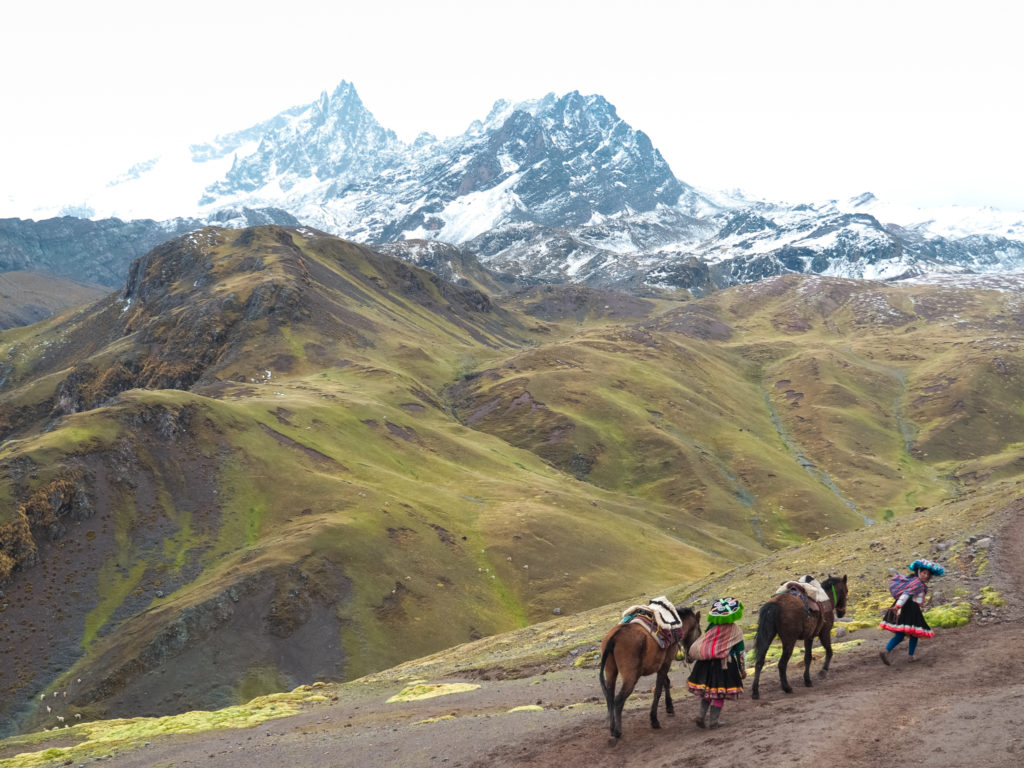
Now, Rainbow Mountain can be easily accessed as a day trip from Cusco (another 3 hour drive) that takes you to this remote area of the Andes. The 6 mile hike itself can be challenging as it is a steady climb most of the way, but also the altitude (over 16K feet) makes it harder. However, if you choose, you can also ride horses from the trailhead (guided by the locals) to nearly the top. Keep in mind that the last 30-40 minutes or so of the hike, you will need to walk as horses aren’t allowed on the Rainbow Mountain.

Even though this hike is gorgeous, be aware that it is almost always crowded due to lots of tourists. Even if you arrive early (we got here by 6AM), be prepared to see plenty of other people here. This can detract from the experience, so if you prefer hiking off-the-beaten path with less people around, you might want to consider doing the less popular Palccoyo hike.
If you crave mind-blowing landscapes and complete tranquility, you can’t miss the hike to the Ausangate 7 Lakes with Peru Eco Expeditions. This hike begins at a remote village and meanders its way across the most stunning Andean Valley. It then ascends towards several glacier-fed lakes and towering peaks before finishing the day at some hot springs. If you want to truly get away from it all and experience the majestic Peruvian Andes, add this hike to your list!
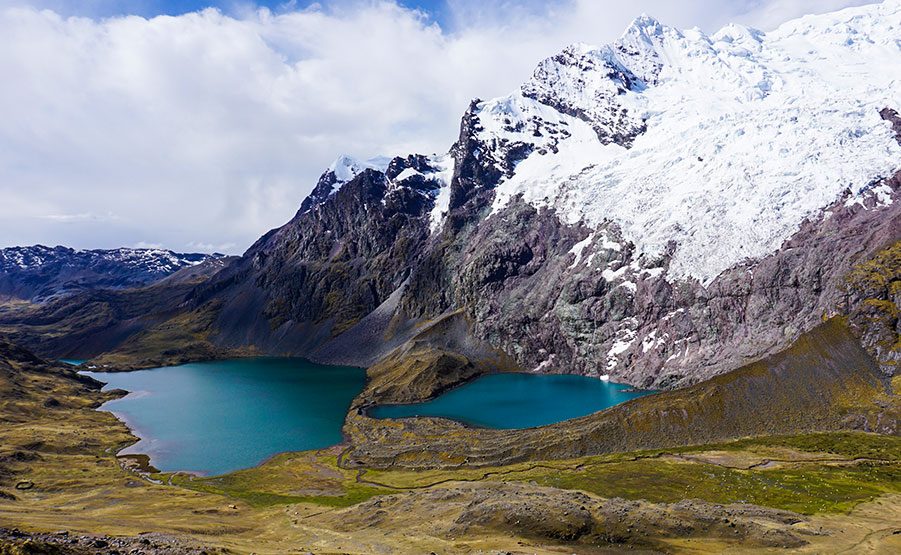
Peru is one of the world’s leading trekking and hiking destinations for good reason–incredible and diverse landscapes, combined with Inca history and culture. Cusco is probably the best central location for some of the Peru’s top hikes too, so if you can stay a full week or two and make the most of this stunning country, you won’t regret it. These 12 best day hikes near Cusco will certainly not disappoint!
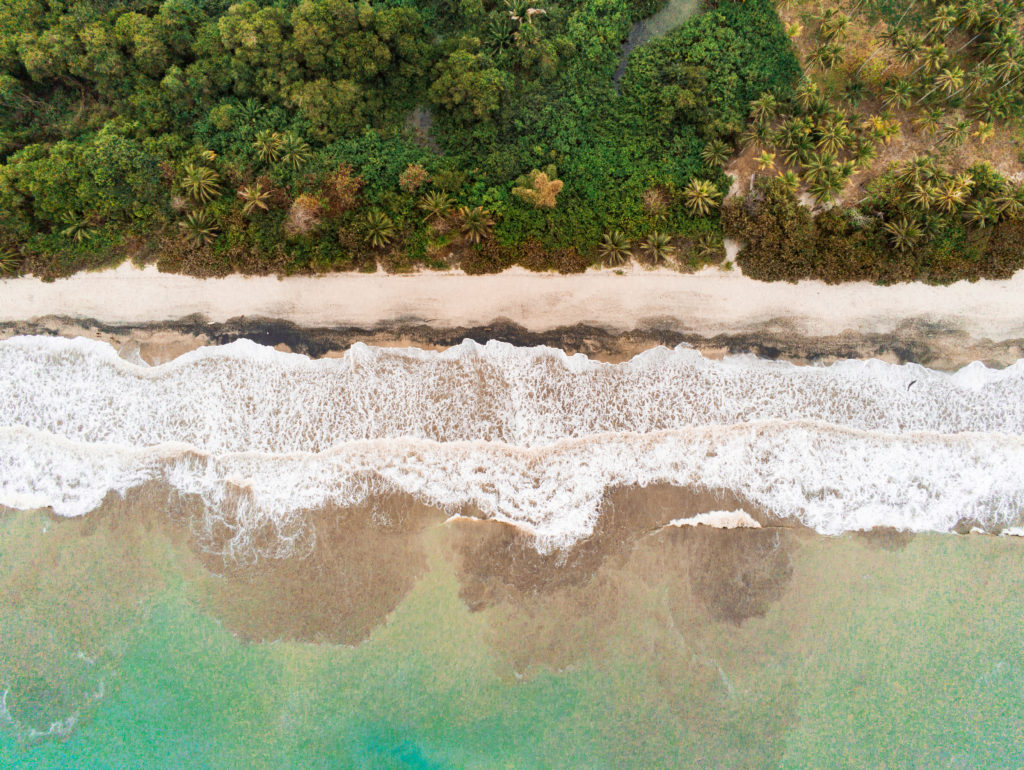
Colombia is a hidden gem. It still remains relatively less traveled to because let’s face it, it doesn’t have the best reputation with its long history of political warfare, drug and gang violence. However in the last decade or so, Colombia has experienced a major turn-around as the government has stepped up its efforts in cracking down on the drug cartels, thus decreasing much of the violence and issues plaguing this South American country. Since then, tourism has been on the rise as more and more people are visiting. We spent a month exploring this beautiful country searching for the best outdoor adventures and were NOT disappointed. Hence why we created the ultimate family adventure itinerary in Colombia.
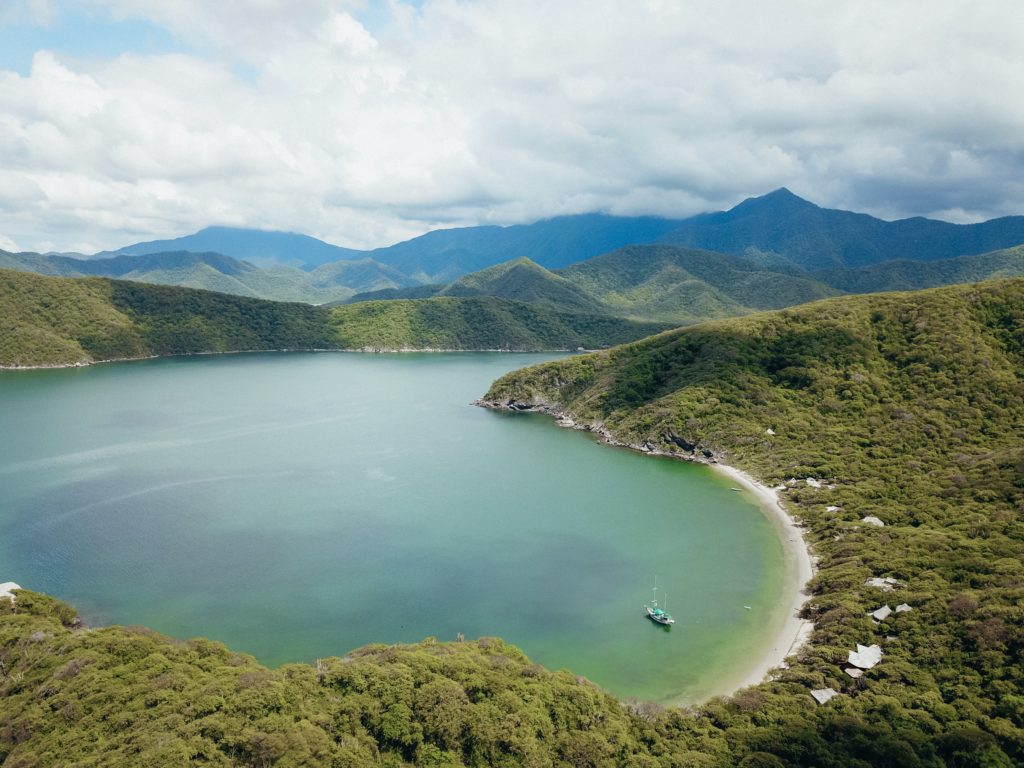
One of the things we got asked a lot while in Colombia was, “Is it safe with kids? (We also got this question in El Salvador.) The short answer: YES. If you know what areas to avoid and just use common sense, you’ll be perfectly FINE. Every country has its problem areas and Colombia is no exception. But as explained above, Colombia has made some drastic improvements in the most recent several years, making it substantially safer for tourists (and even the citizens!).
One thing we found to be true about Colombia is the people are exceptionally friendly, helpful and eager to greet you in their country. Everywhere we went, we always felt welcome and safe. In fact, I would dare say that Colombians might be some of the warmest people we’ve met anywhere. Their culture is incredibly vibrant and lively too–they love their music, dancing, food, coffee and any excuse to get together and have a good time. It truly is a wonderful and diverse country.
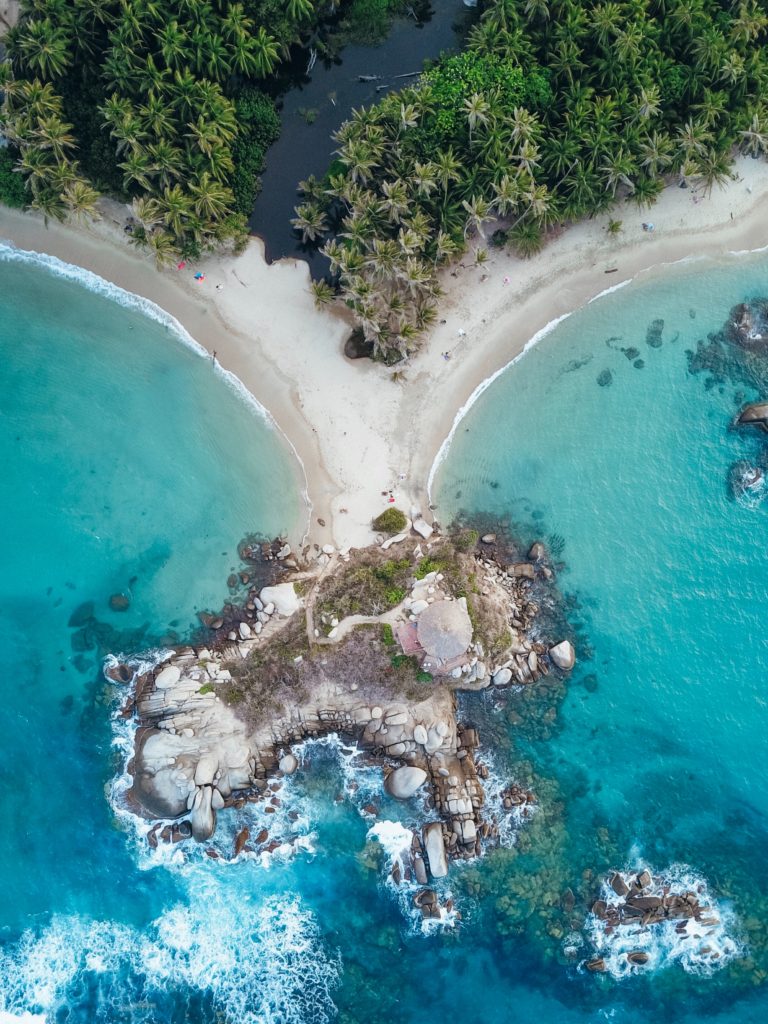
Most of the world doesn’t know that Colombia has the second highest biodiversity on the PLANET (only behind the much larger Brazil). Yep, you heard that right. From the Colombian Amazon to the Andes mountain, to the coffee plantations (it is the world’s third largest exporter of coffee), to the coastal regions on both the Pacific and Caribbean seas–Colombia truly has it all. Just to give you an idea: 1 out of every 10 species of flora and fauna in the world can be found in Colombia. Home to nearly 60,000 species of wildlife and 9,000 endemic species (unique to only Colombia), this country is classified as one Earth’s 17 mega-diverse countries.
Speaking of wildlife, there are more species of birds and orchids in Colombia than anywhere else on earth! Colombia is second in the number of species of plants, a amphibians, butterflies and freshwater fish; third in the number of species of palm trees and reptiles and fourth in its diversity of mammals. So, if wildlife (especially birds!) is your thing, Colombia is your destination.
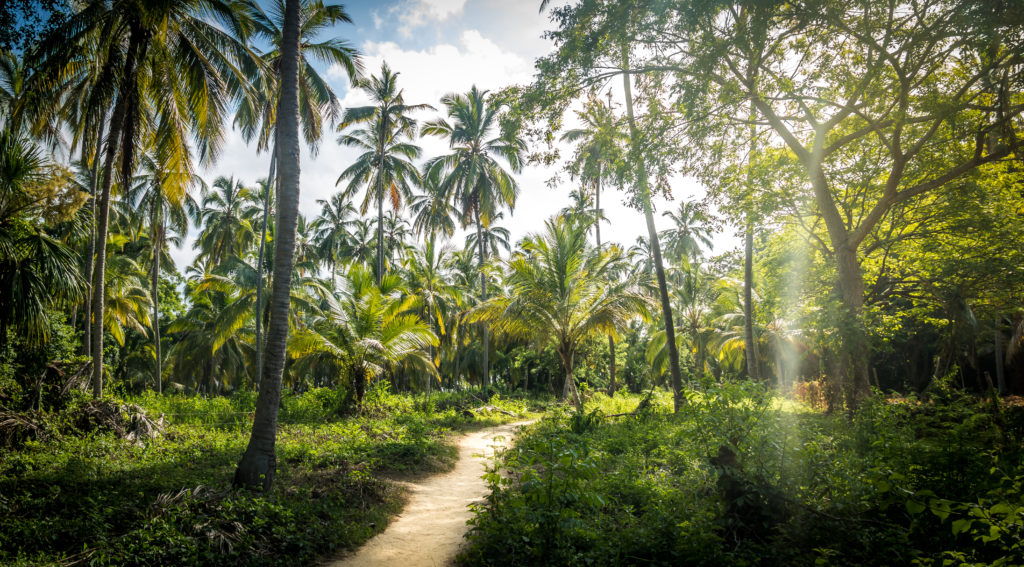
Our ultimate family adventure itinerary in Colombia is about 14-15 days in length with options to shorten or lengthen based on your travel preferences. Since Colombia is a big country though, the more time you have, the better! We’ve narrowed it down to some of the best outdoor adventures and activities that will span mountains, jungle, valleys, beaches, and even cities.
If you’re wondering when the best time to visit Colombia is, well if you want to go during the driest season (least amount of rain), then your best bet is between December and March. But be warned, this is also peak season when prices are highest. As far as temperatures go, if you’re in the coastal regions, it’s hot and humid all year so that be prepared to sweat. We went in September and experienced a little rain, but not enough to really affect our plans negatively.
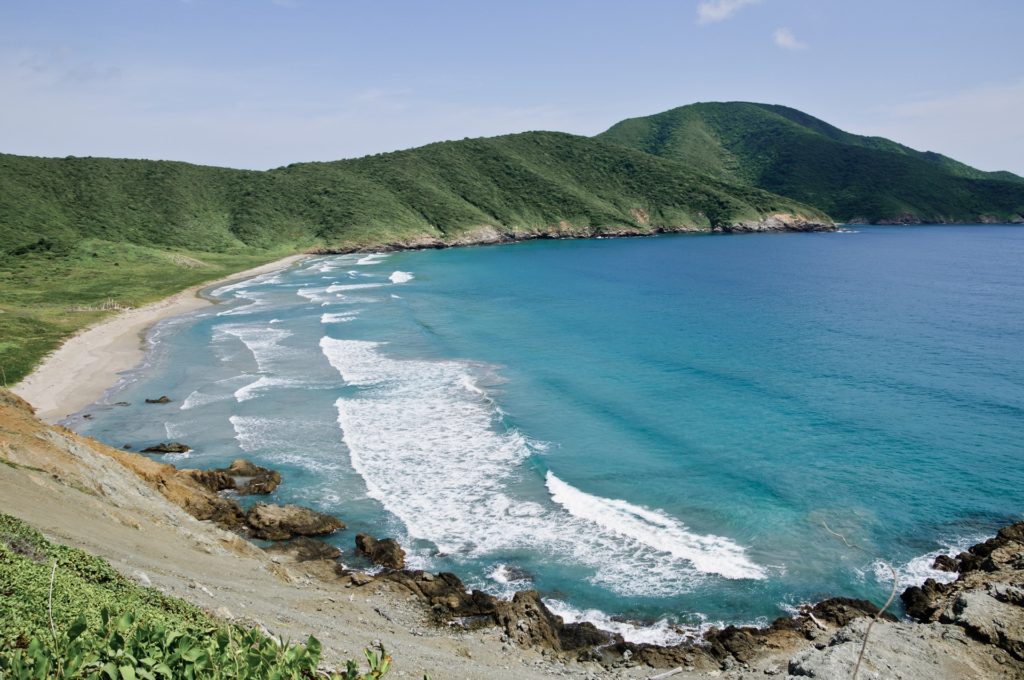
Your ultimate family adventure itinerary in Colombia will start in Cartagena de Indias. *Note: Technically you could do this itinerary in reverse and start in Medellin if flights are cheaper to/from Medellin opposed to Cartagena. We loved Cartagena so much (other than the heat!), that 2 of the 3 full days should be spent exploring this beautiful, colorful city. The main areas of Cartagena to visit are the famous “Walled City” or Old City (once built as a fortress to protect this port city from pirates and Spaniards) and the nearby, hip neighborhood of Getsemani.
Cartagena is a very walkable city, so need to rent a car here. We stayed in Getsamani at Casa Pizarro Hotel Boutique and loved it. Great location with lots of restaurants and shopping close by. You can also find some other hotel options on Booking.com. We usually stay in Airbnb’s, but if we are only in a place for a few days, we just book a hotel.
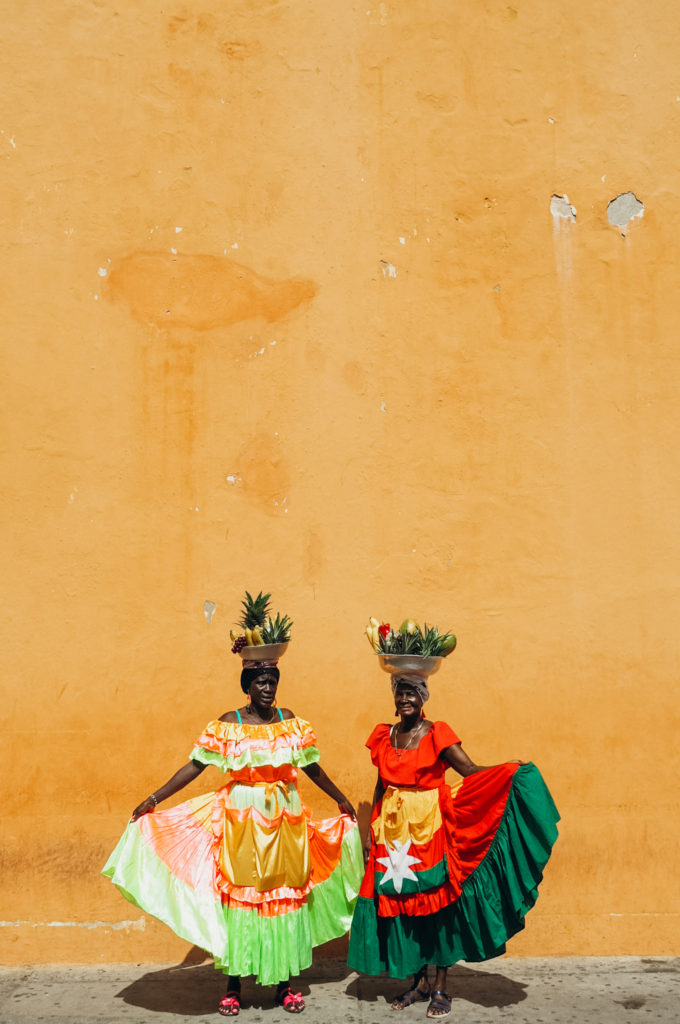
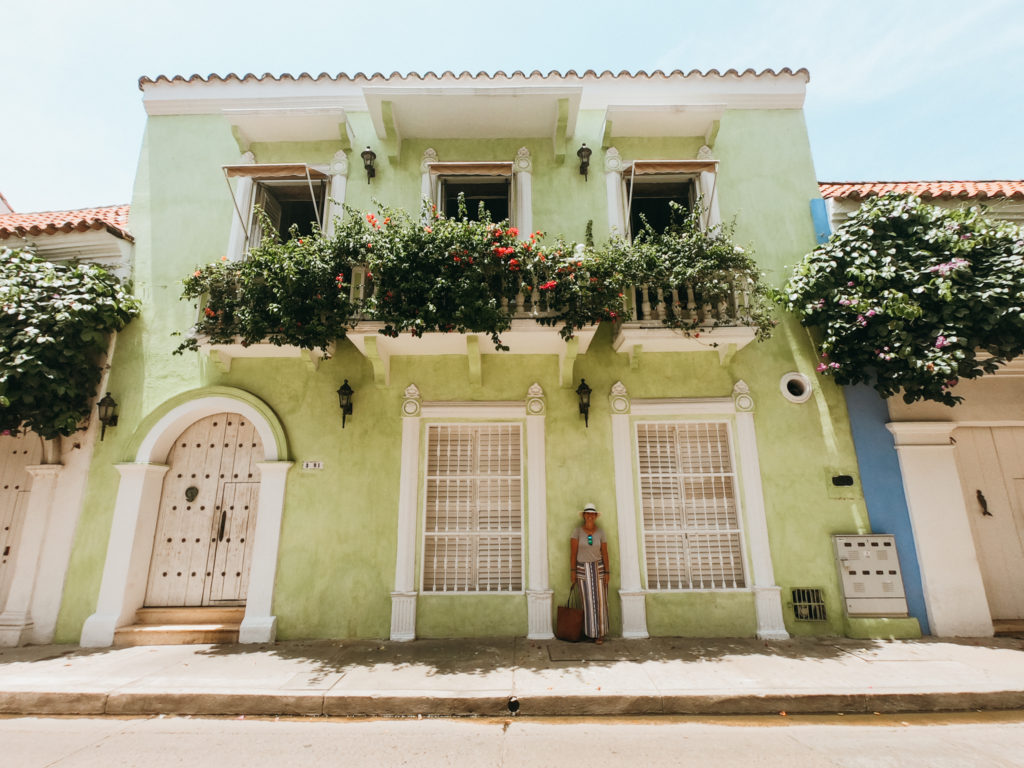
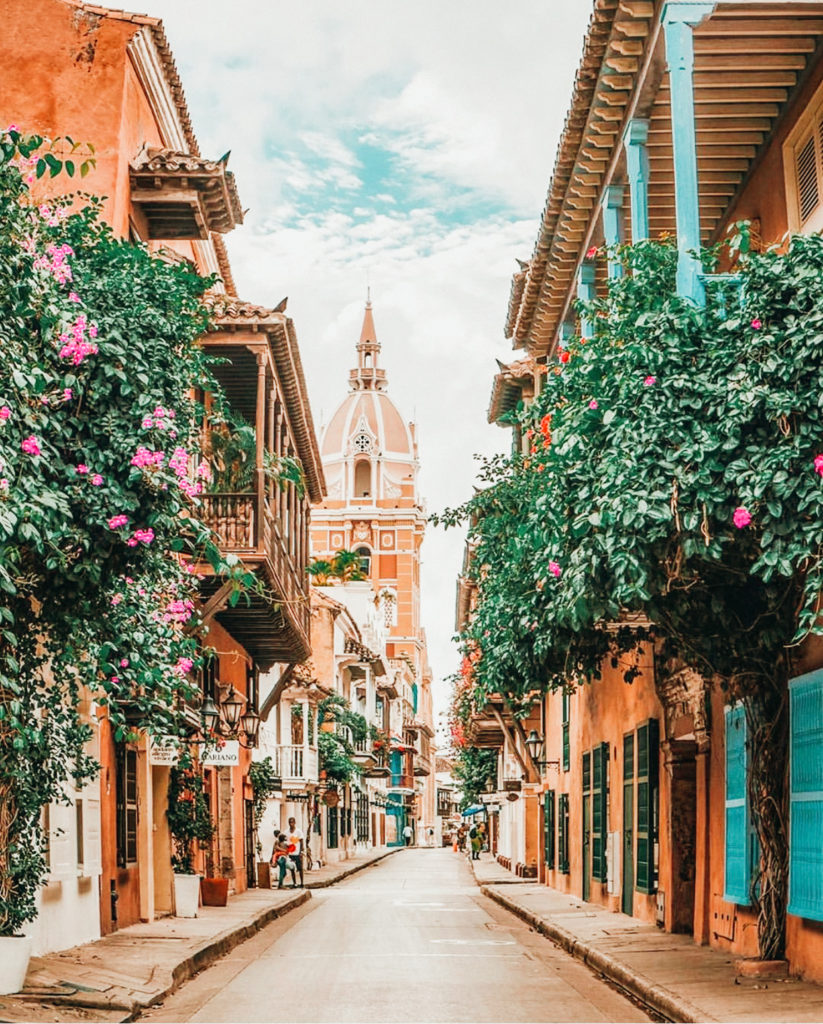
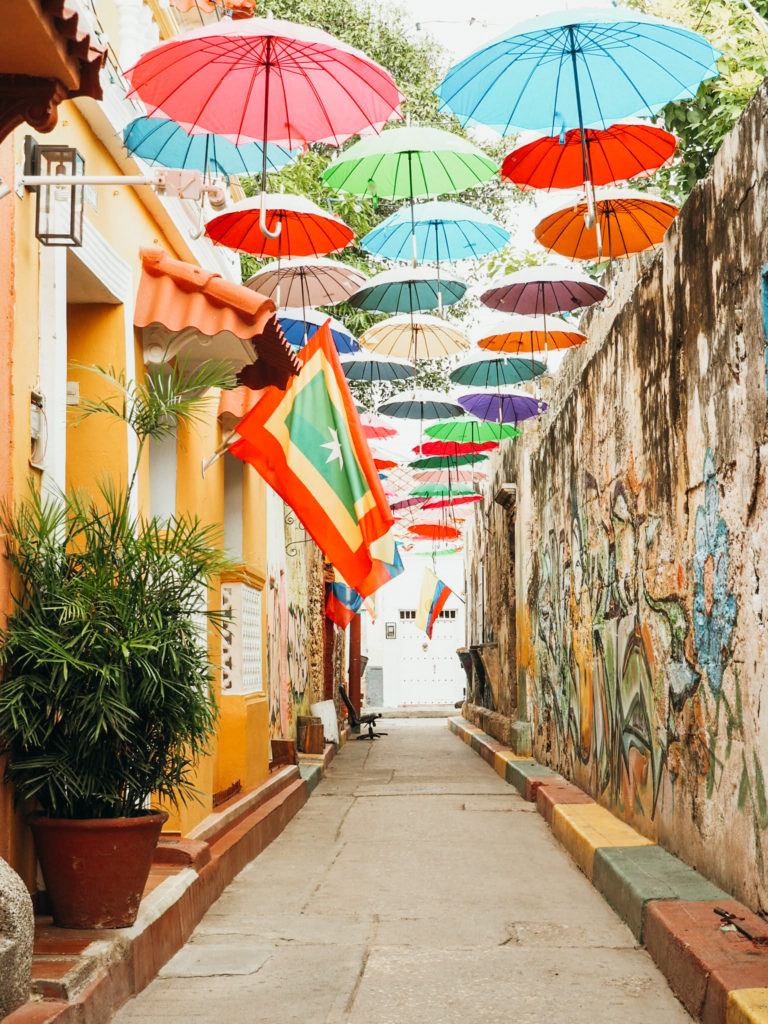
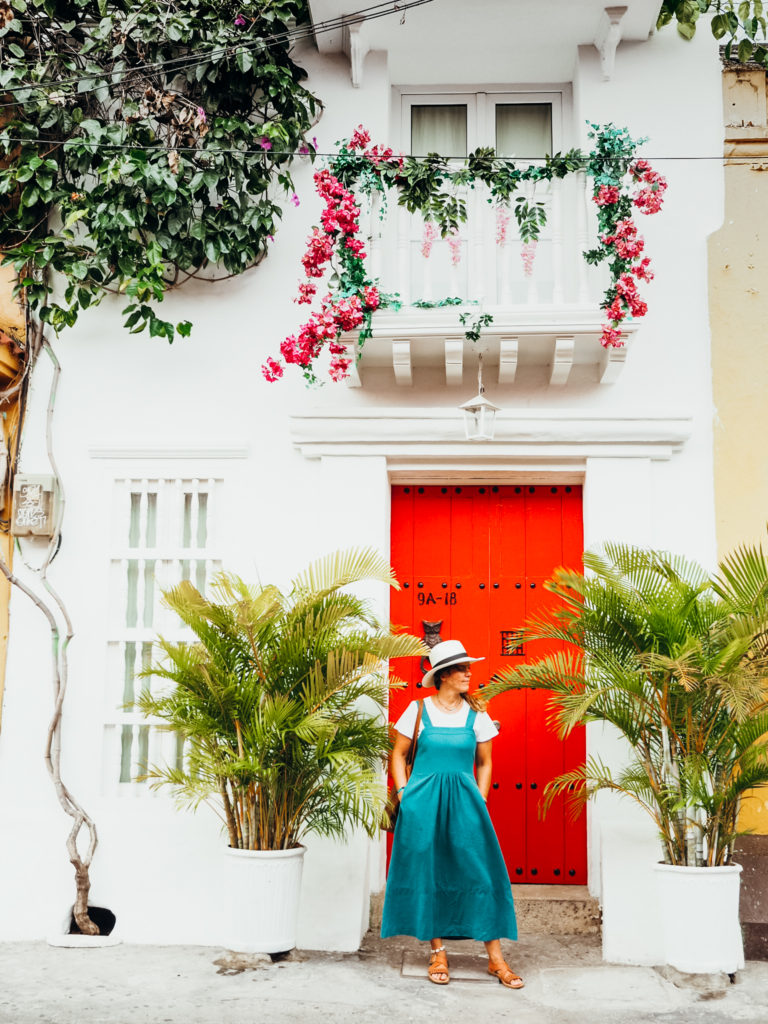
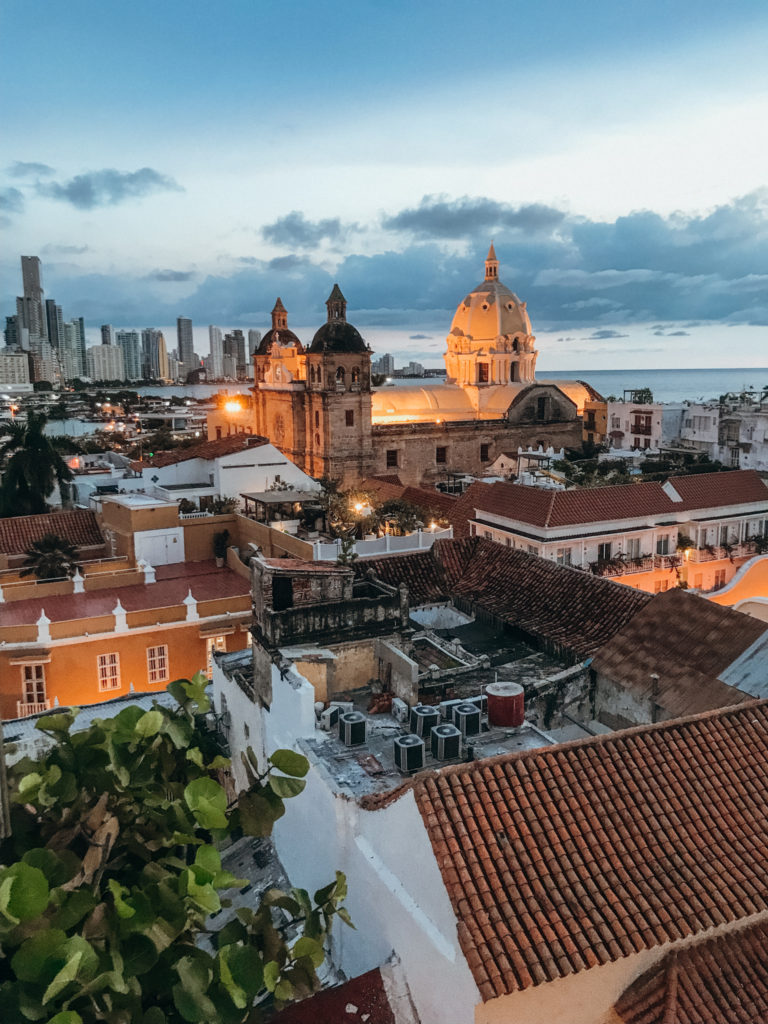
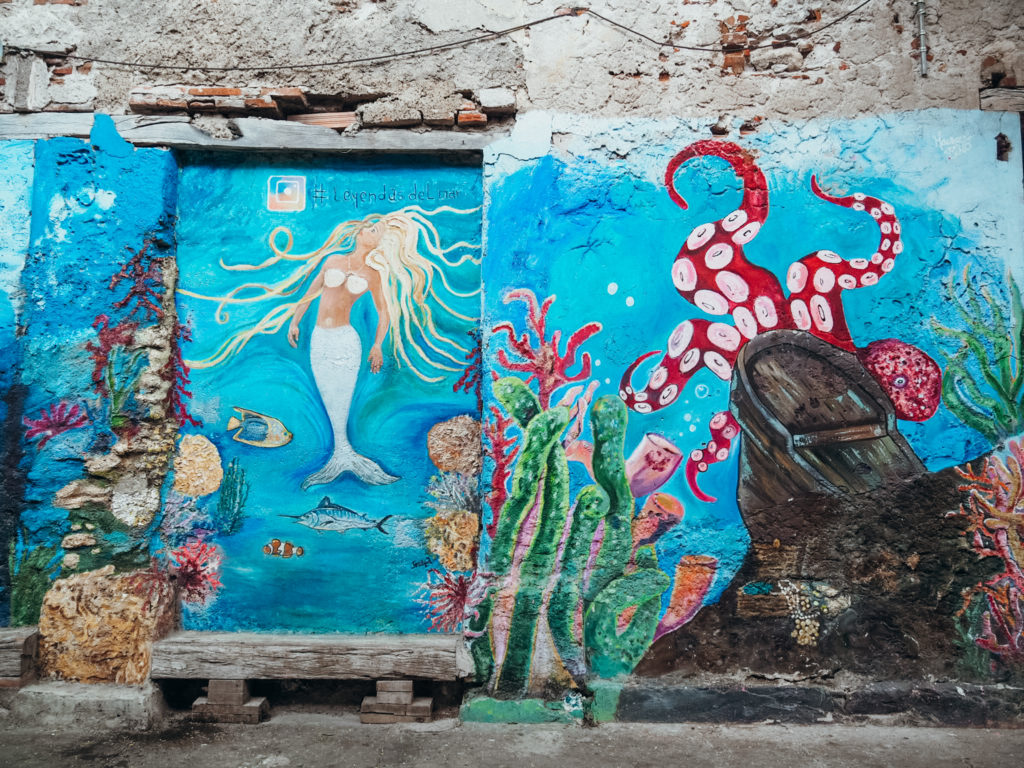
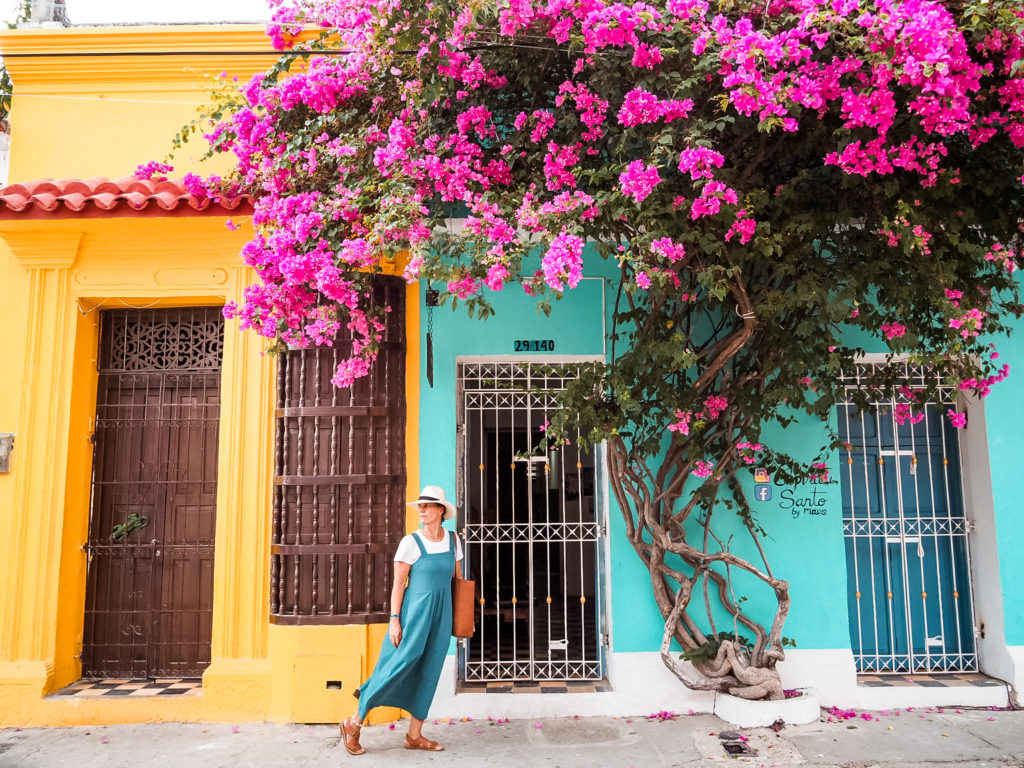
Explore Cartagena
The main attractions in Cartagena are the colorful, wall murals of Getsemani, the bright-colored umbrellas and banners that line the narrow streets, the shops and restaurants of Old City, and a tour of the castle, Castillo de San Felipe de Barajas. Don’t forget the churches too and if you’re going to see just one, make sure to stop at Iglesia San Pedro de Claver. Our favorite thing to do Cartagena was eating our way through the city–from ceviche, to pasta, to mojitos and coco limonadas (the best we had was the rooftop bar at Hotel Movich!). For the best restaurant suggestions in Cartagena, check out The Culture Trip.
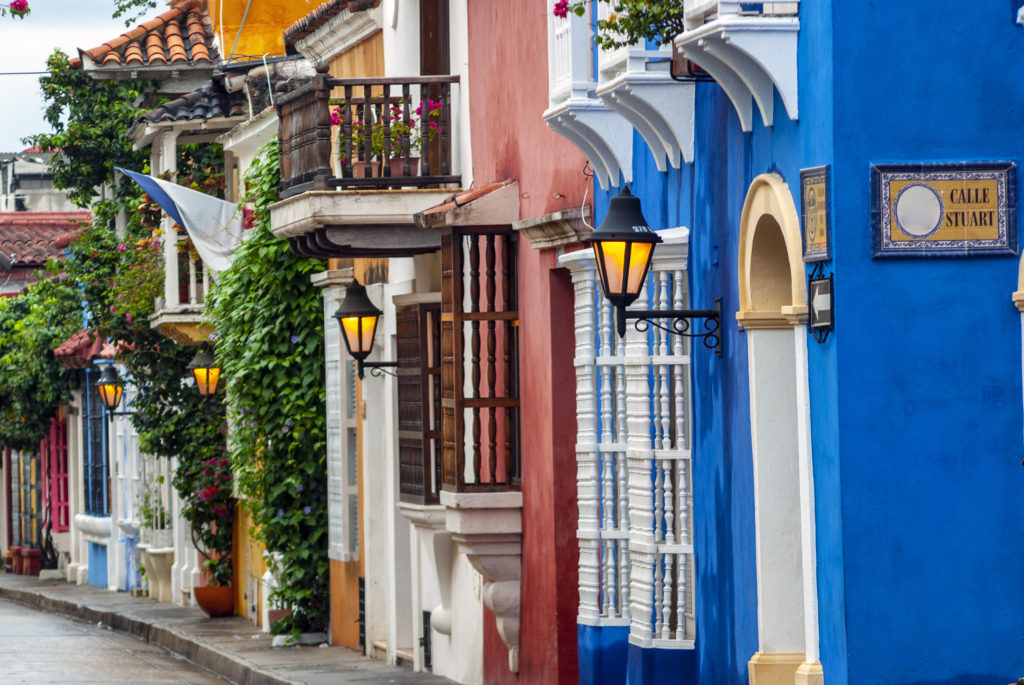
Snorkel and relax on the Rosario Islands
In our opinion, the beaches in Cartagena aren’t so great, so if you want to spend a day at a gorgeous beach and/or see marine life, make sure to take a boat trip out to the Rosario Islands for a day of beach time and snorkeling. These islands are composed of about 30 different islets just off the coast of Cartagena and packed with pristine white sand beaches. Also, most of them are uninhabited, so don’t worry about crowds—just book your boat trip out and enjoy a day in the sun.
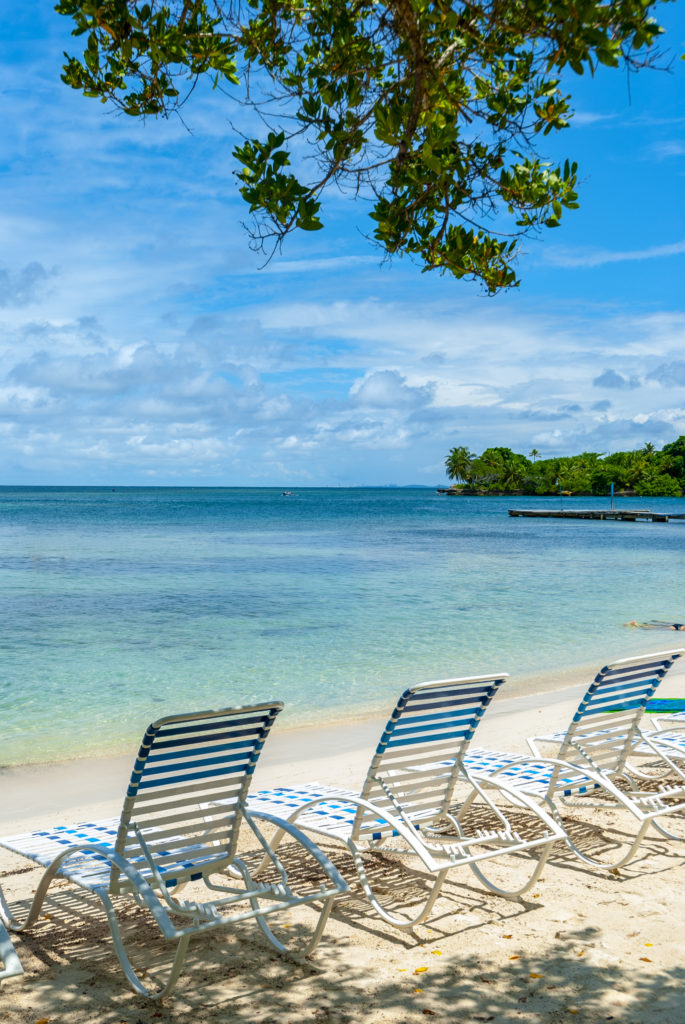
From Cartagena to Santa Marta, you will travel north along the coast for about 4-5 hours. Since it’s an easy trip, we recommend taking a bus to get there. We used this blog post for instructions on how to get a bus from Santa Marta from Cartagena. Santa Marta is also a port city and the oldest city in Colombia. It is fringed by beautiful beaches and the stunning mountains of the Sierra Nevada range (the highest coastal mountain range in the world!). The gateway to ancient ruins, epic treks, waterfalls dense jungle and wildlife, you could spend weeks in Santa Marta and not see it all.
When we were trying to decide where to set up “base” in Colombia for 3 weeks, we picked Santa Marta for its close proximity to Tayrona National Park, but also the Sierra Nevadas, Minca, and Palomino (more on all those places below). You cannot include Santa Marta in your ultimate family adventure itinerary. It’s a MUST-DO.
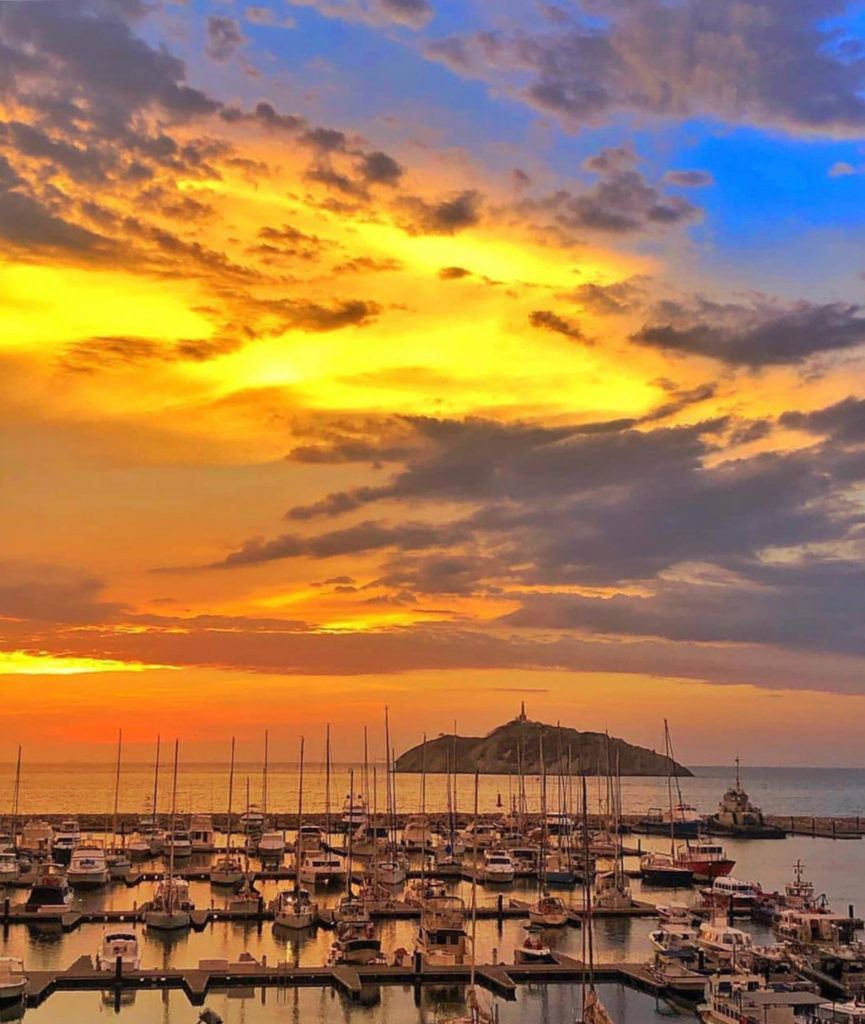
There are lots of options of places to stay in the Santa Marta region, however we elected to stay near Rodadero Beach and were glad we chose that location. It was also easy and cheap to get around by taxi or shuttle bus. As mentioned above, Santa Marta is the perfect spot to explore some of the surrounding areas, so plan on spending a few nights here as your base.
Sailing
A friend recommended doing a sailing day trip out of Santa Marta and let’s just say, we were so glad we went. It was relatively cheap, a ton of fun and we got to see a unique side of the Northern coastal region of Santa Marta, specifically parts of Tayrona National Park. We booked our sailing trip with Tayrona Sailing with Captain Nick and his crew. We took the boat out along the coast, stopped to snorkel, paddleboard and eat lunch and then sailed back catching the sunset as we neared Santa Marta.
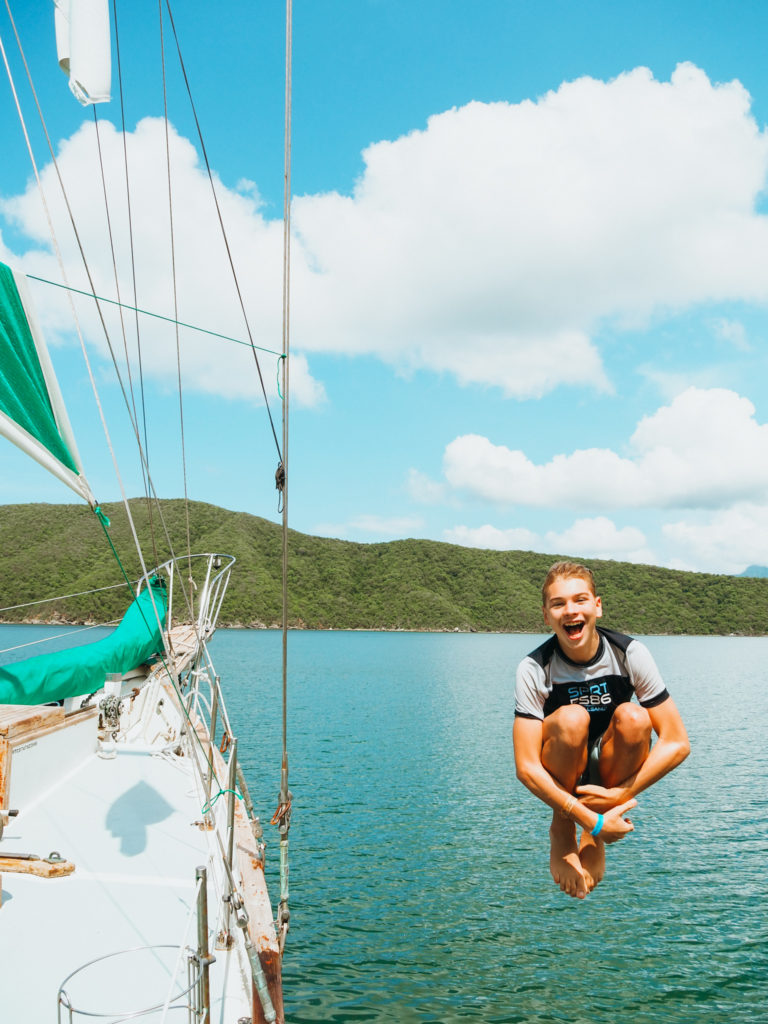
Hike and beach camp in Tayrona National Park
Tayrona National Park is an incredibly diverse region and also home to the Tayrona tribe, the indigenous people that own the land. After seeing photos of some of the beaches here, we knew we had to come here. It did not disappoint. Be prepared for HOT temps though–for two days we sweated our faces off hiking through the jungle, however the ultimate reward was cooling off in the crystal clear, turquoise waters.
Most travelers or even locals just spend a day in Tayrona. They hike in (or horseback ride) early in the morning and then leave in the evening. We opted to stay the night and camp, so we could take our time and explore the different beaches and coastline. This is definitely the way to do Tayrona if you have the time and can spend at least 2 days here. The most budget-friendly way to get to the beaches here is to hike in (there are no roads), camp at one of several campsites and then hike out. However, if you aren’t a fan of camping there are several eco-lodges you can stay at such as Ecohabs.
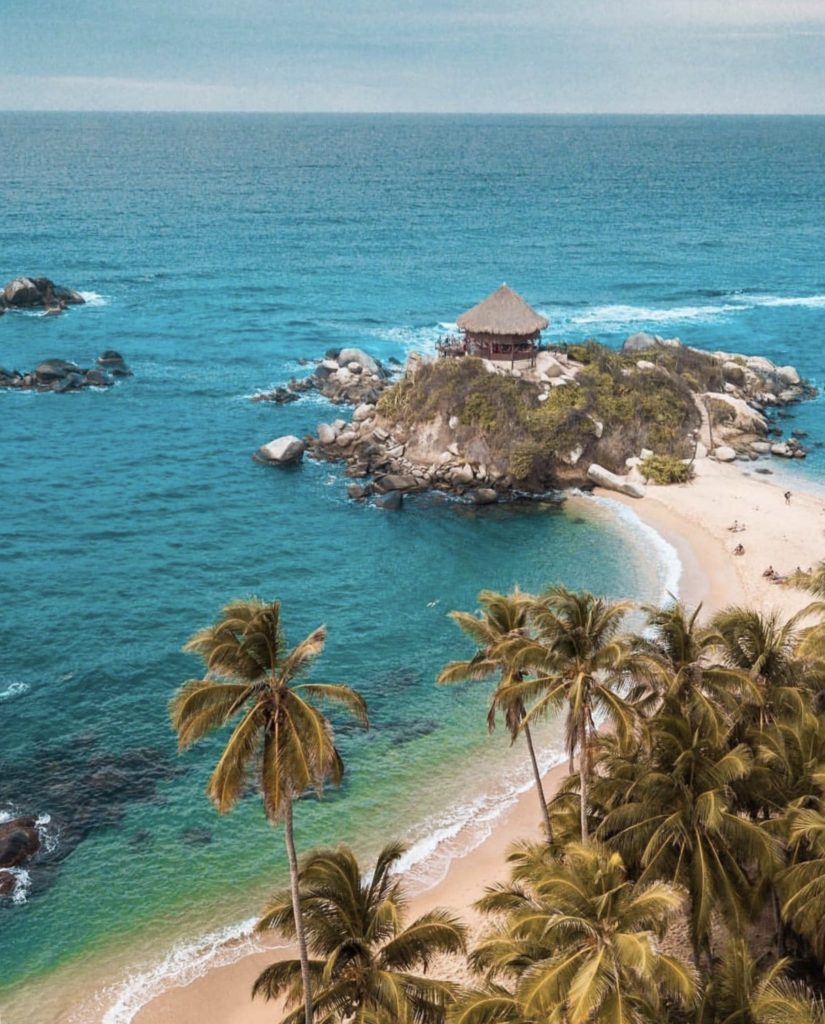
We elected to camp at Cabo San Juan del Guia, and it was perfect because they had bathrooms, showers, a restaurant and plenty of hammocks and tents to rent (no need to make reservation ahead unless you come between Dec-March). There are other campsites along the beach in Tayrona too. You can get to Cabo San Juan by boat from Taganga, but we recommend hiking in because you miss the incredible scenery if you choose the boat option. Plus, it’s an adventure just getting there!
Cabo San Juan is world famous for its beautiful, picturesque beaches with calm water to snorkel and swim. It was heaven on earth! If you choose to hike to Cabo San Juan, you can arrive using one of two entrances to the park, El Zaino and Calabazo. We started our hike early one morning from Calabazo and got to Cabo San Juan by mid afternoon. After reserving our hammocks to sleep, we relaxed and swam and then watched the sunset. The next day, we hiked out towards the El Zaino entrance, so we could see different scenery and stop at some of the beaches along the way.
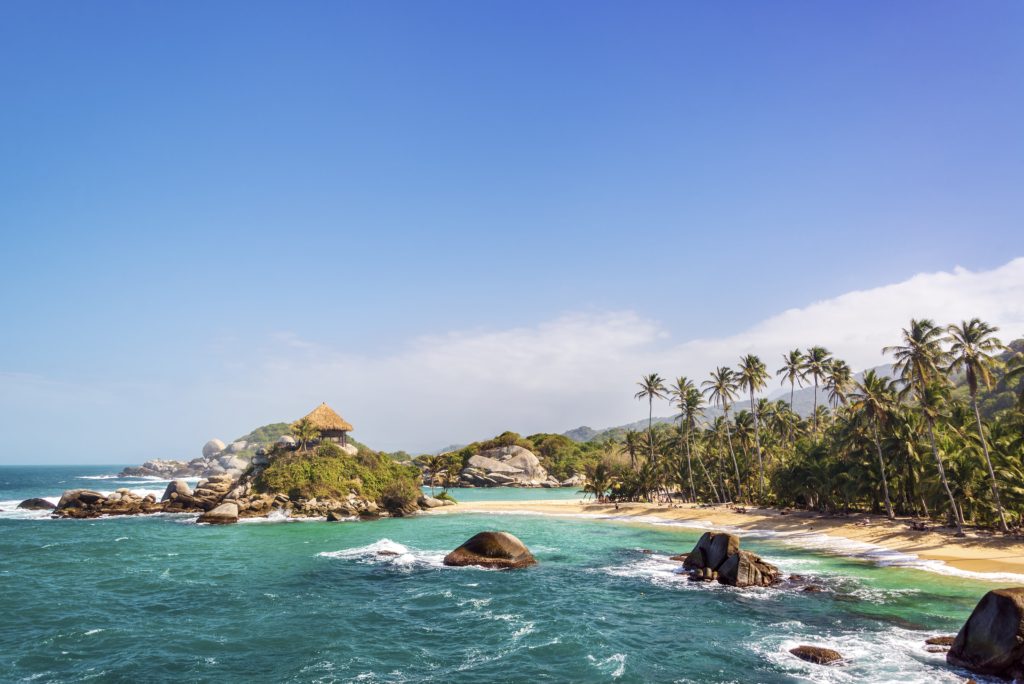
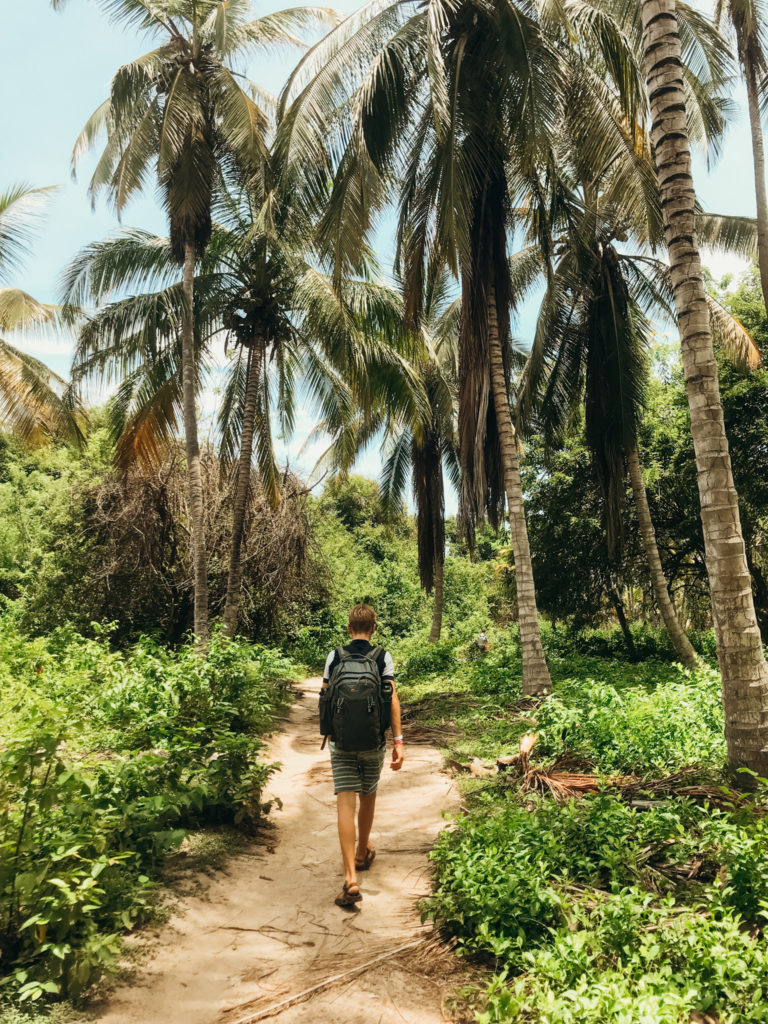
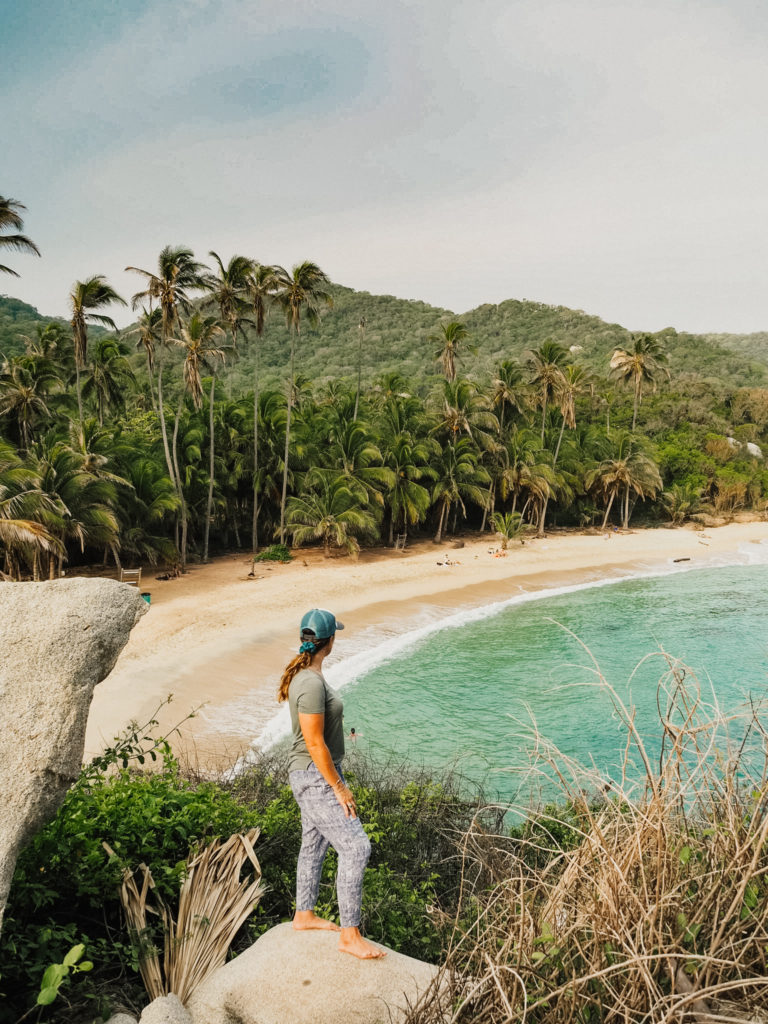
One thing to note about the hike, the trail from the El Zaino entrance of the park was much easier (but hotter!) since it follows the coastline and stays pretty flat the whole way. The other route from Calabazo was much harder with some up hill sections, but also more shaded. We were glad we did both trails, but if you are hiking with kids that struggle with elevation gain, I would recommend hiking in/out of the El Zaino entrance. Check out the entrance and camping fees for Tayrona National Park.
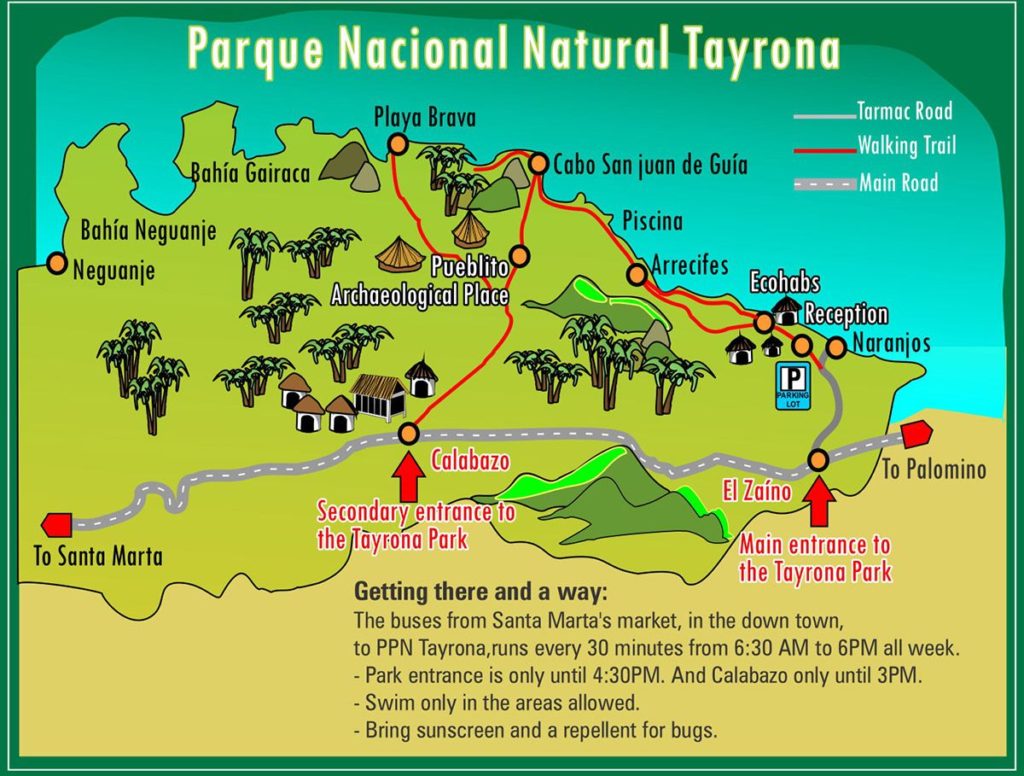
We loved snorkeling at Cabo San Juan and La Piscina because they are more protected beaches within the reef. Playa Arrecifes is no-swim beach because of a dangerous riptide and current, but still worth going to just for the views. We also loved Playa Naranjos which is at near the start of the hike from El Zaino.
Another thing to mention is that you can jump in a shuttle van/taxi from the main entrance of El Zaino to the reception, where you begin hiking. You can also pay extra and take a horse on the trail if you prefer not to walk. Tayrona National Park will certainly be a highlight of your ultimate family adventure itinerary in Colombia!
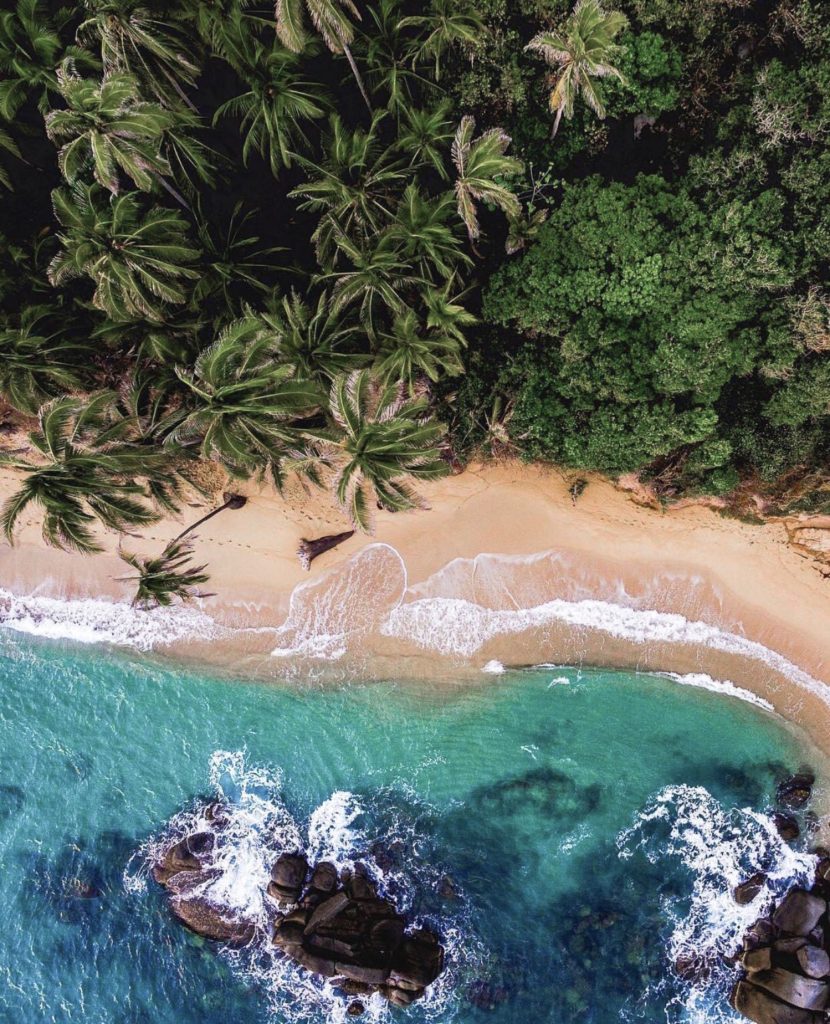
Minca
Once you return to Santa Marta from Tayrona, you will want to spend a day in Minca, which is a popular backpacker town in the Sierra Nevada mountains. We hired a taxi to take us there for about $30 USD, but there are also buses that take you there from Santa Marta. You can find the Minca colectivo in Santa Marta at the corner of Carrera 9 and Calle 12, in the Mercado Publico in Centro. Minca is only about a 45 min drive from Santa Marta and much cooler temperatures than from the coast.
Once in Minca, the main attraction are the waterfalls and the giant hammocks. Yes, you heard me right. Giant hammocks. Casa Elemento, one of the hostels in town has these big hammocks (the biggest in South America!) that you can come and relax at for a small fee (if you aren’t staying there), or even just to watch the sunset. We spent a day chasing and swimming in waterfalls, and then finished off the day at Casa Elemento to see the sun go down (which it ended up raining!)
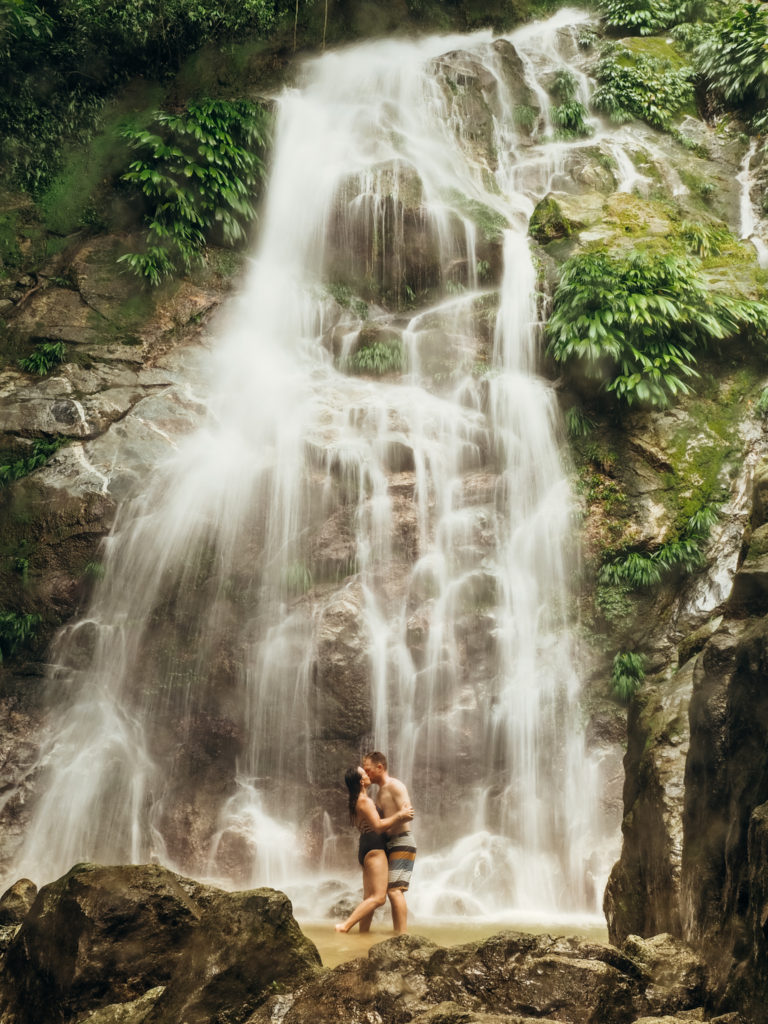
The main waterfalls to visit in Minca are Marinka (there are two falls here) and Pozo Azul (the most popular). All have swimming holes, so make sure to bring your swimsuits. I would also recommend bug spray, rain jackets, water and plenty of snacks unless you plan to grab food in Minca.
To get to Pozo Azul, you have two options: hike or take a moto-taxi. The hike takes about an hour one-way and is mostly uphill. The moto-taxis usually cost around $2-3 per person. We took the moto-taxis to the waterfall because we were short on time. Plus, if you want to avoid the uphill, this is the way to go. You can hike back downhill admiring the view. To take a moto-taxi, just head to the main corner in town (look for a bunch of moto-taxis and guys standing around) and hop on. The ride through the jungle is thrilling!
*If you have small kids, you might want to opt out of taking the moto-taxis and just hike!
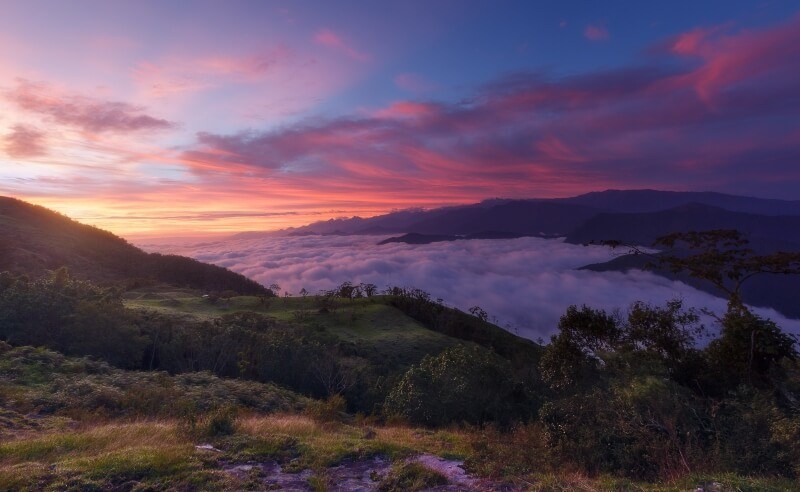
The further up the river you climb the more you will discover unspoiled river spots amidst tropical jungle. At the main swimming hole, there’s even a swing and some cliffs you can jump off!
Marinka Falls was our favorite and a little bit longer to get to than Pozo Azul. If you prefer, you can catch a moto-taxi from Minca, or hike. There are also tourist collectivos that can you there, but those require a minimum of 4 people and cost a bit more. The hike takes a little over an hour to get to the entrance and there is a small fee since it is on private property. The property boasts hammocks as well, and a restaurant so if you’re hungry after hiking or swimming in the waterfalls, you can get some lunch here!
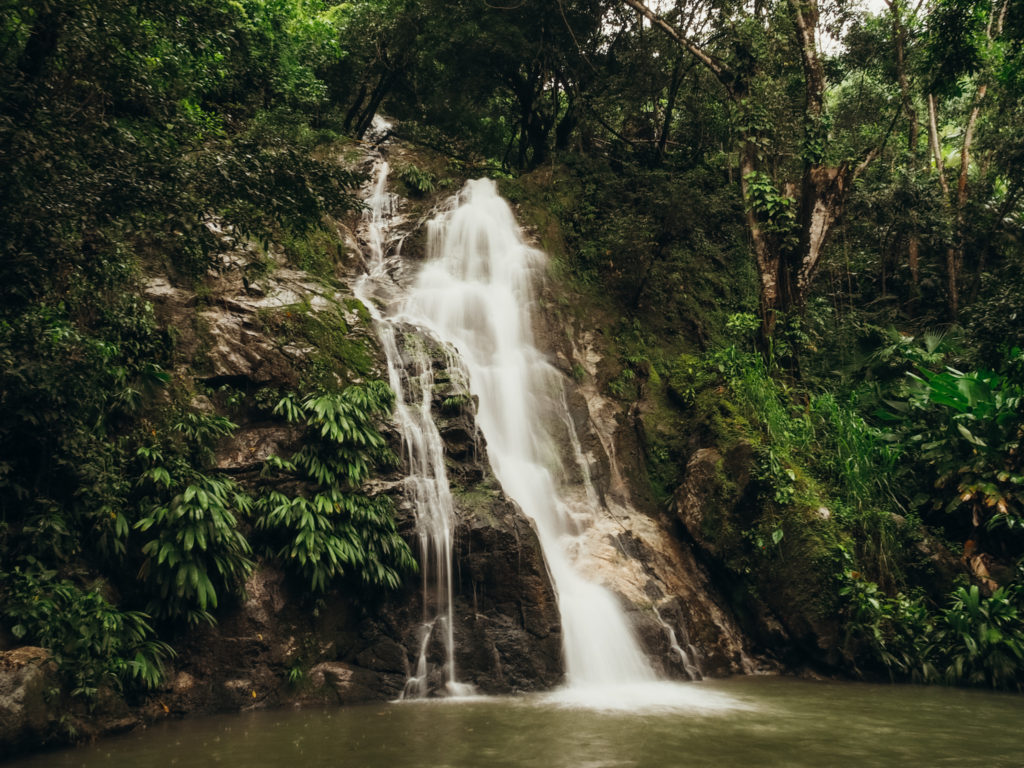
If you’re looking for other ideas on things to do in Minca, other options include visiting a local coffee plantation, a jungle tour with Jungle Joe’s Adventures (to include bird watching and river tubing), or even mountain biking with Elemento Tours.
Optional Add-On: Lost City Trek
The Lost City Trek is ranked as one of the best treks in South America and certainly one of the most beautiful places in all of Colombia. This 4-5 day, 44 km trek takes you deep into the Sierra Madre jungle and high into the mountains of the Sierra Nevada de Santa Marta. You trek through indigenous villages of the Kogi and Wiwa Indians, cross rivers and eventually arrive at the famous ruins of the Lost City: Teyuna. These ancient ruins (built 600 years before Machu Picchu!) weren’t publicly discovered until 1972 when some treasure looters stumbled upon them by accident.
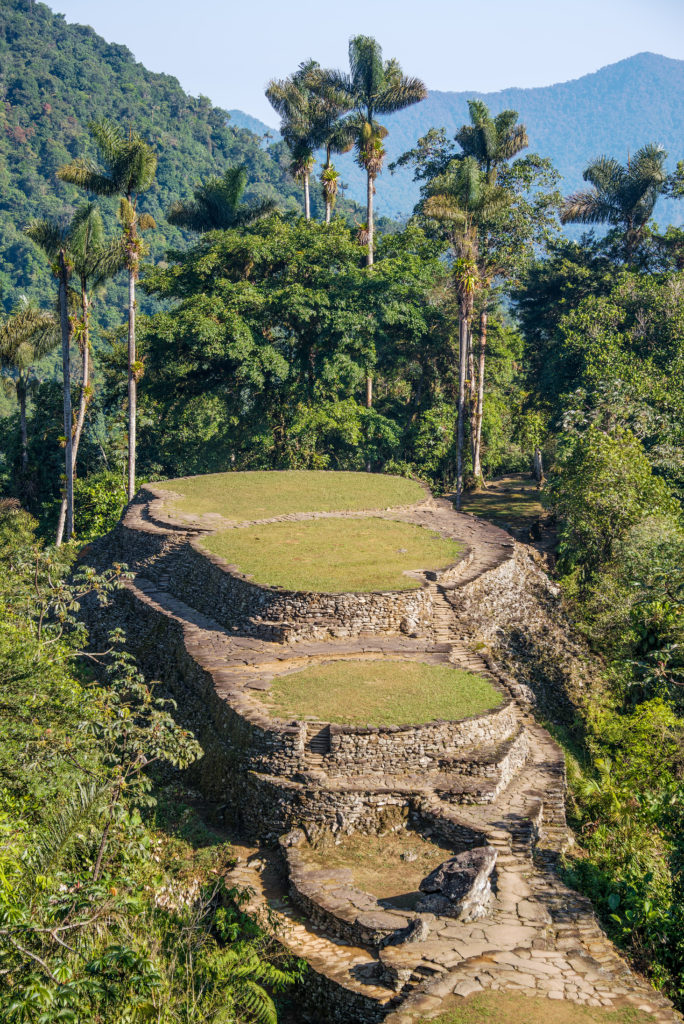
If you can spare an extra few days in Colombia, this is the one thing not to miss, as it is an epic experience and adventure of a lifetime and will easily be your highlight of visiting Colombia. One important thing to note about the Lost City trek: you must go with a guide. This is because you are entering land owned by the indigenous people of the Sierra Nevada. You cannot enter the ruins without a guide and permission from the authorities. We recommend learning more about this trek and booking a guide through Lost City Trek Colombia.
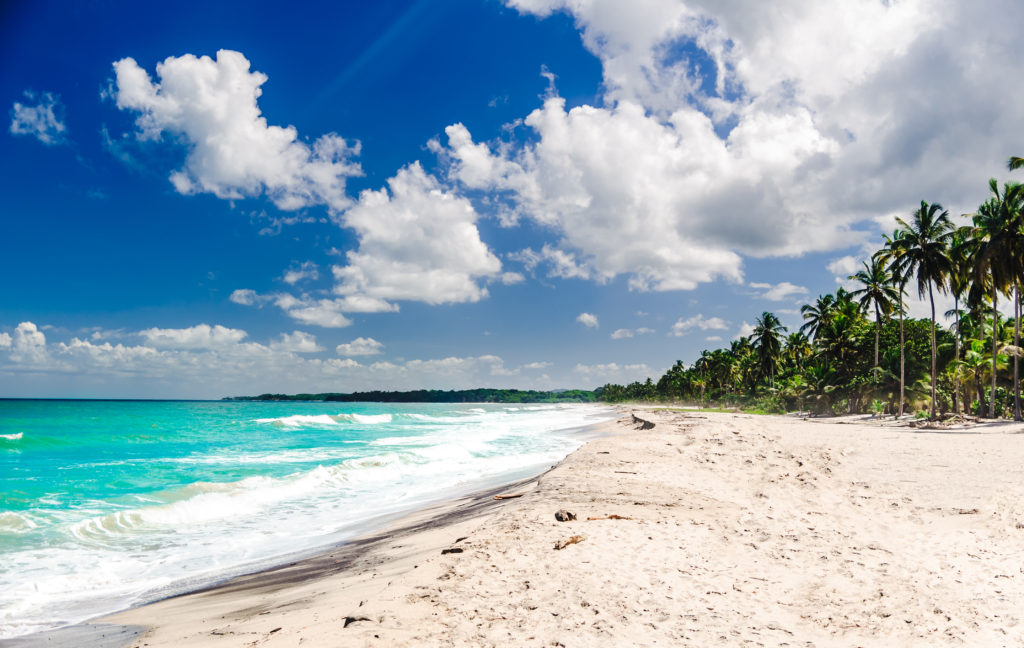
Not far from Santa Marta (about a 2 hour drive) is the sleepy beach town of Palomino. Sadly we didn’t make it here while we were in Colombia, but it’s the one place we wish we would’ve carved out time for. You really don’t need more than a couple of days here, however with that being said, you might get here and want to stay longer. The main reasons people visit Palomino is for the beach/surf and to go river tubing on the Palomino River. There are several hostels you right on the beach, such as the Tiki Hut Hostel and the Dreamer Hostel, making this stop nice and relaxing after trekking in the jungle.
River Tubing
You can rent a rubber tube at several places in town, and then simply head up into the hills behind the town until you reach the edge of the river. From there you will jump onto your tube and float down the river for a few hours until you reach the sea. Enjoy the peaceful nature as you lazily float along the river and catch some views of the snow-capped mountains of the Sierra Nevada range in the distance.
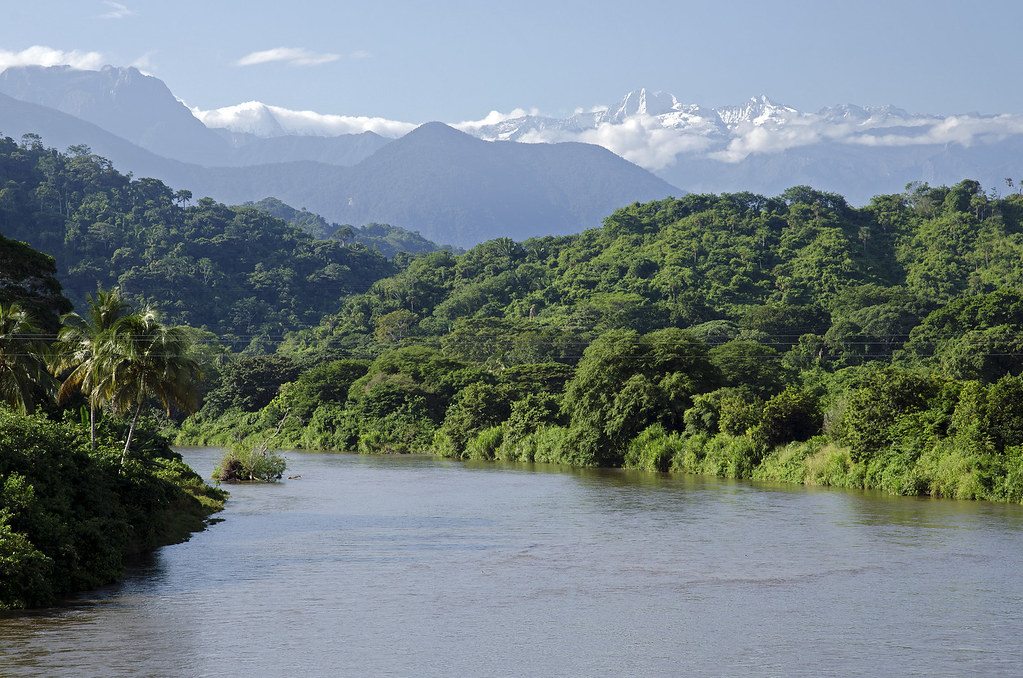
Surfing
Many visitors flock to Palomino to surf as the conditions are ideal, especially for beginners. You can rent surfboards at one a few shops along the beach and even get lessons if you aren’t confident going on your own.
Go see flamingos
An easy day trip and less than an hour from Palomino is the Flamingos Flora and Fauna Sanctuary, nearby the village of Camarones. You can hire a local guide and sailboat and head out onto the lagoon to see these pink birds up-close. Another option is to book a tour with La Sierrita, which is the best ecotourism company operating in Palomino. They offer many excellent and unique ecotours around the surrounding mountains and jungles of Palomino from birdwatching excursions to visits to local Indigenous communities.
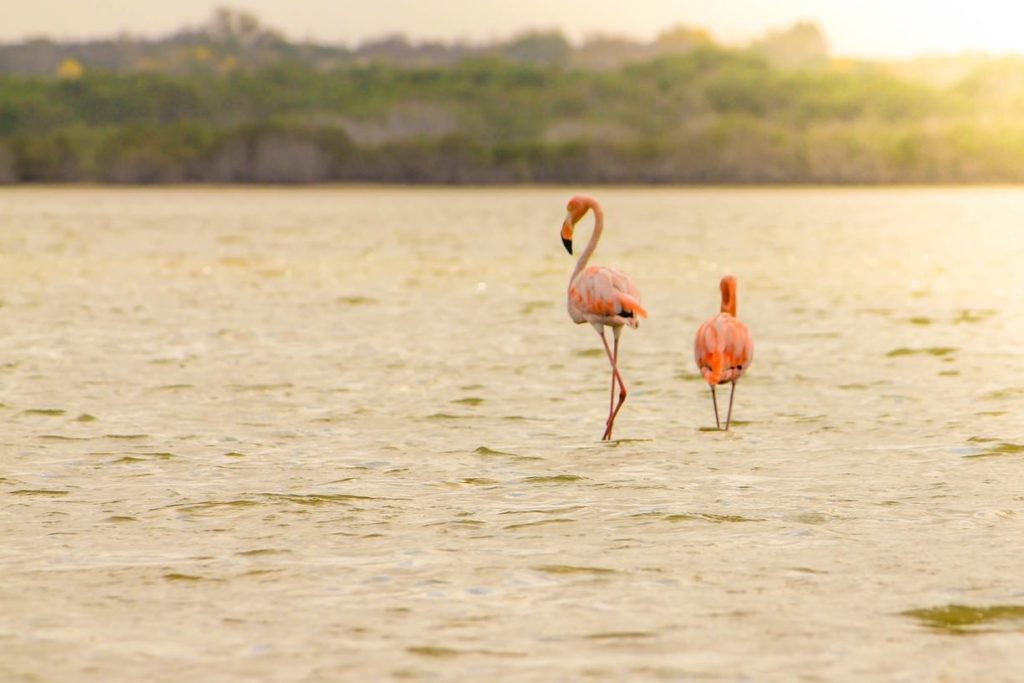
After spending a couple of days in Palomino, you will need to make your way back to Santa Marta and catch a hopper flight to Medellin, Colombia. This is the quickest and easiest way to get to Medellin, as a bus will take you more than 15 hours. We found cheap flights through Viva Air, however a quick warning about Viva Air: they have strict luggage requirements. Make sure to check those thoroughly and pay for baggage fees ahead of time to avoid the extra costs.
Medellin is a huge city, like 6 million people HUGE. It’s a beautiful city though, and quickly becoming a hot spot for expats and retirees as it has an ideal climate, surrounded by mountains and hills, and is safer than many other major Colombian cities. That’s not to say that Medellin doesn’t have its problem areas, but in the last decade or two, it has really cleaned up its act.
Medellin used to have a pretty rough past, at one point being the murder capital of the world. That was largely due to drug and gang violence, but that has all changed since the government took control and the people adopted change. Now, Medellin is a vibrant, lively metropolitan city on the up-and-up.
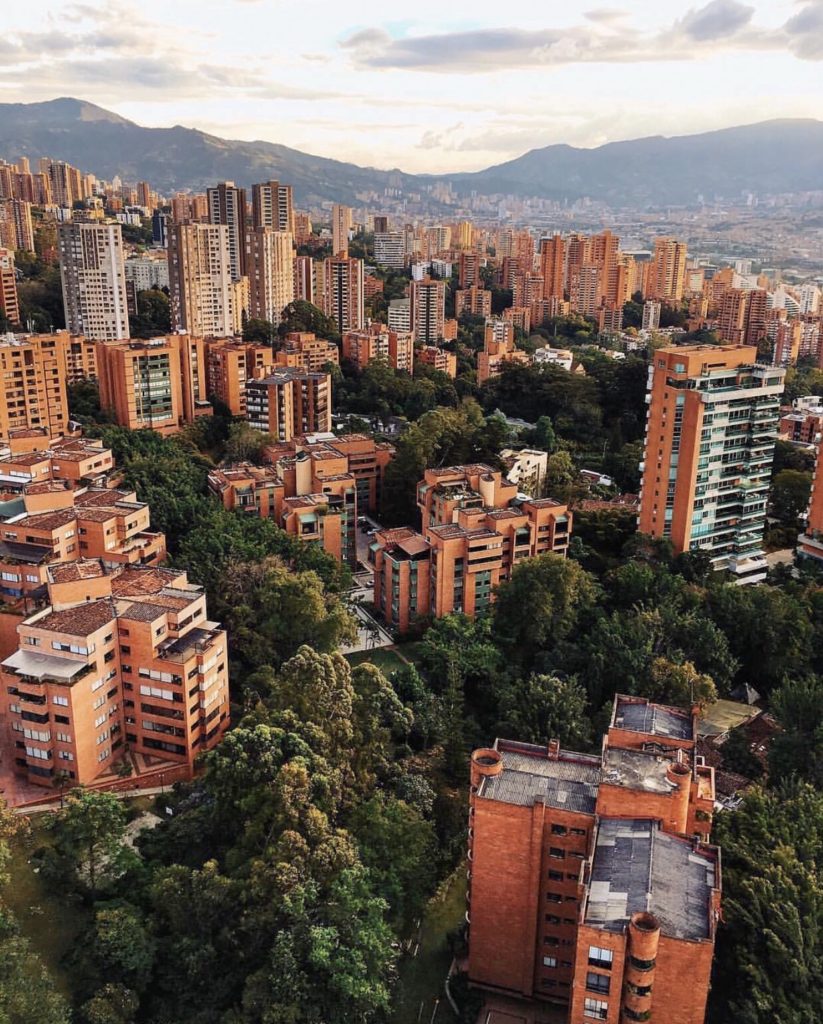
Walk the streets of Comuna 13
We aren’t big “city” folks, but we did enjoy spending a few hours one day touring the infamous Comuna 13. This neighborhood or “barrio” used to be the hub of drug trafficking by the Medellin cartel (run by Pablo Escobar), which made it dangerous due to constant gang and cartel activity. Eventually, the government stepped in to attempt to gain control and stop the violence. This military operation caused mass civilian casualties and eventually the residents of Comuna 13 had enough.
The youth of the barrio decided to take matters into their own hands and change what was happening. Rather than falling into the tempting world of gang life, many focused their energy in the form of art. Music and graffiti replaced the sounds of gunfire and cracked brick walls. Guns and violence were slowly replaced by spray cans and street performances.
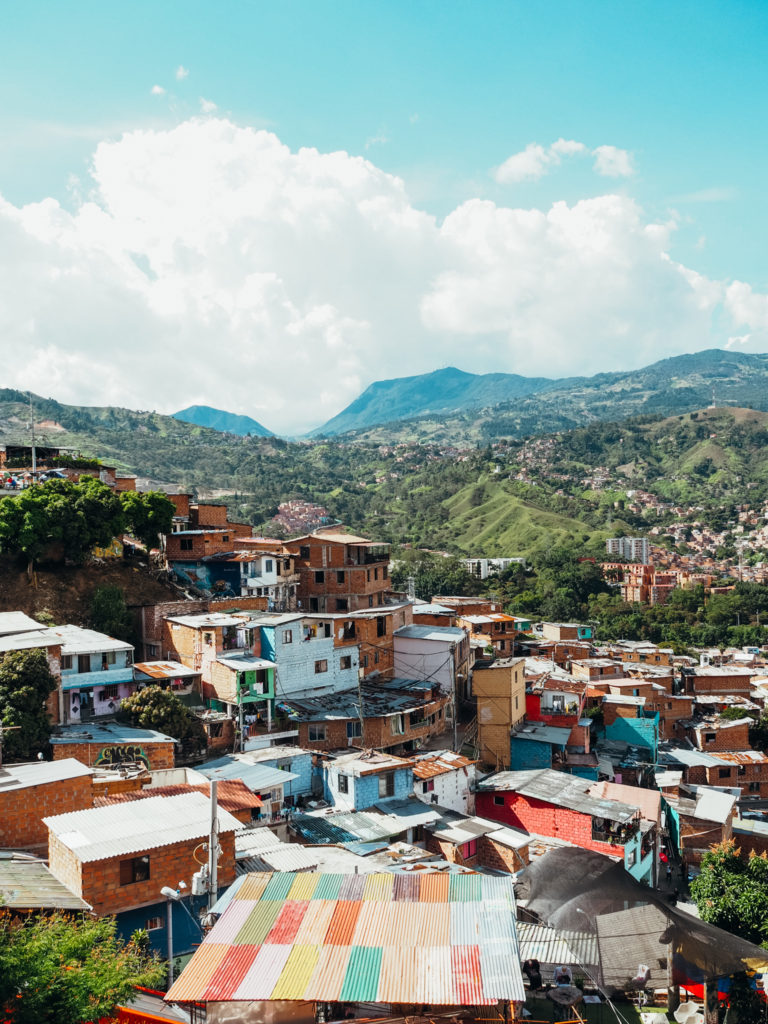
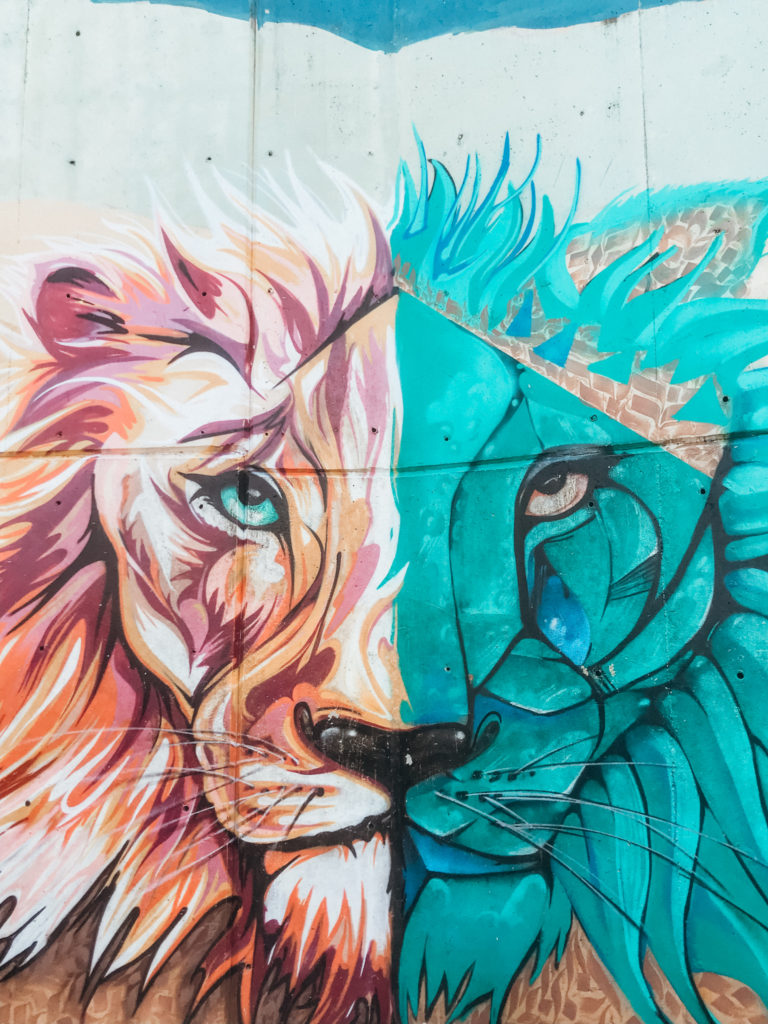
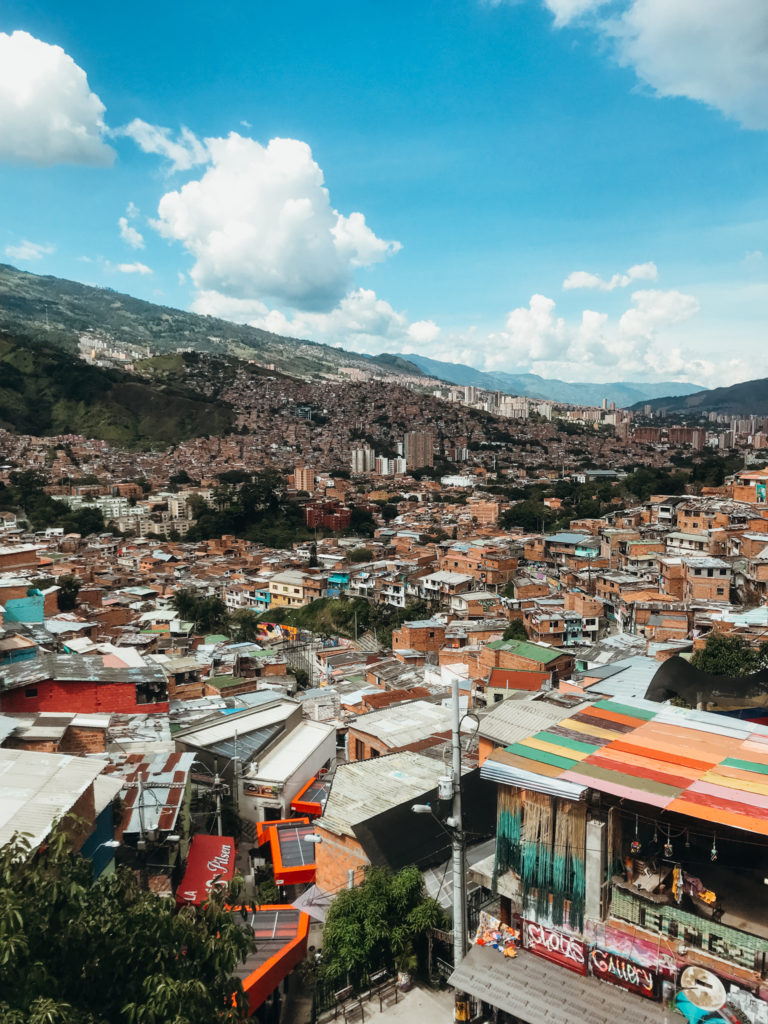
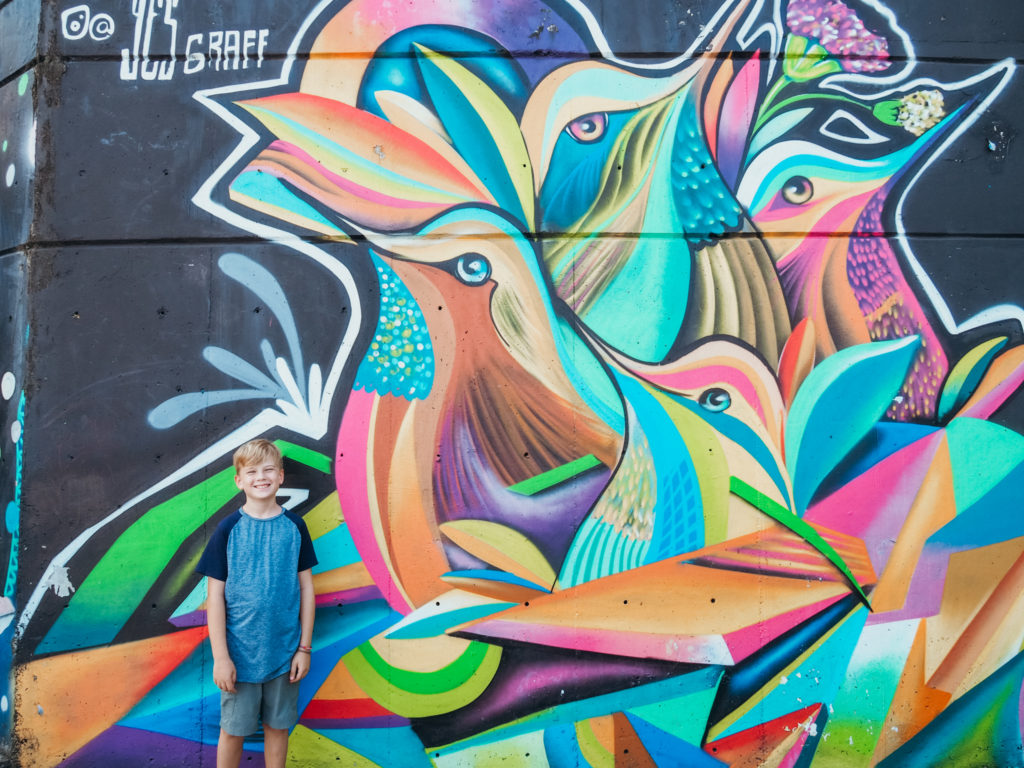
Since 2010, the city itself has poured millions of dollars into Comuna 13, in hopes of revitalizing the former war zone. Now, almost a decade later a strong and ever-present police presence holds things in a more peaceful state. The residents feel safer and tourism (which was once banned to this area of Medellin) has been on the rise here for the last 8 years. In fact, it’s one of the most visited spots in Medellin! Now, tour guides take people on art and graffiti tours, while explaining the history of Comuna 13. You can book a tour there, as there are many guides offering their services.
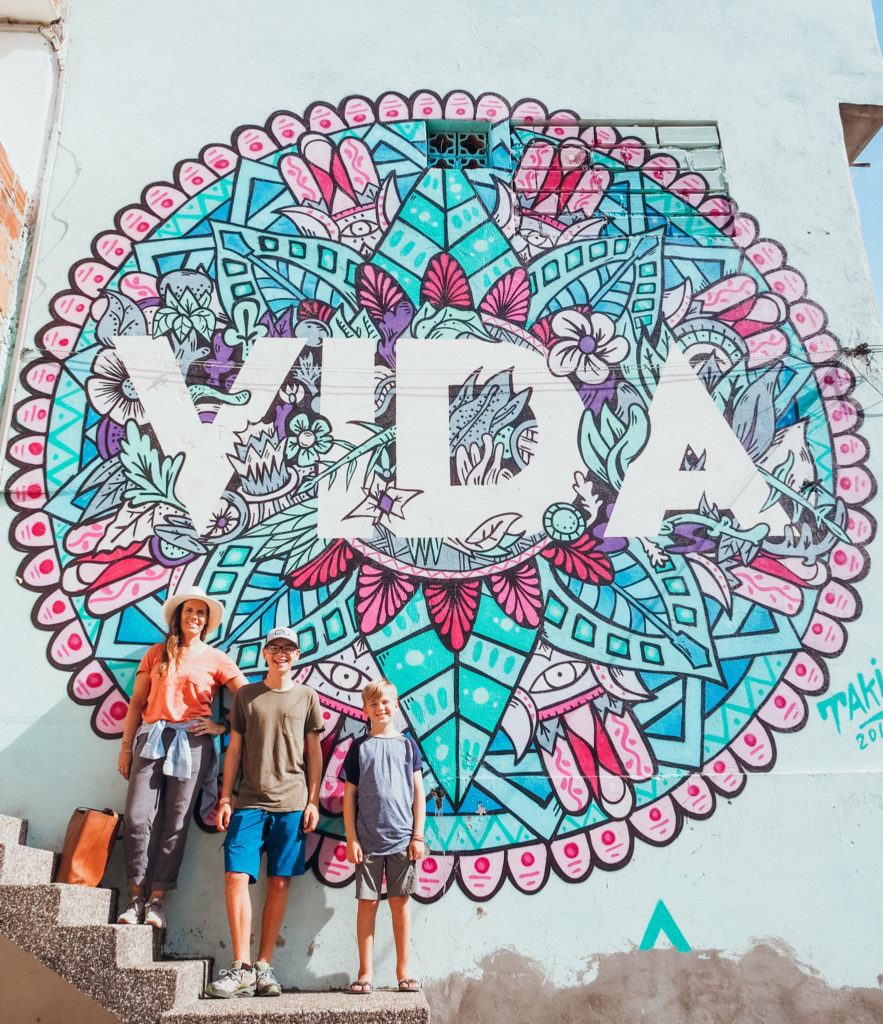
Ride the tram & attend a soccer game
We would also recommend taking the metro tram while in Medellin as you can get great views of the city and it’s also a cheap way to get around (it’s how many of the locals get to their homes). Another thing we did while in Medellin was attend a soccer match between the Medellin Nationals and another Colombian team. So much fun! You definitely have to experience the chaos and energy of a soccer game in South America.
Escape the city into nature
If you want to get away from the hustle and bustle of the city and escape to some green spaces, there are some great parks to visit in Medellin. The Botanical Gardens are more like a park than a botanical garden with a large lake and plenty of paths meandering between pretty gardens and trees. It’s a great place for a picnic, or just to wander around enjoying the birds and animals in the heart of the city. We also suggest going to Avri Park (go by tram!) and El Salado Park which are other beautiful parks that offer great nature escapes from the city.
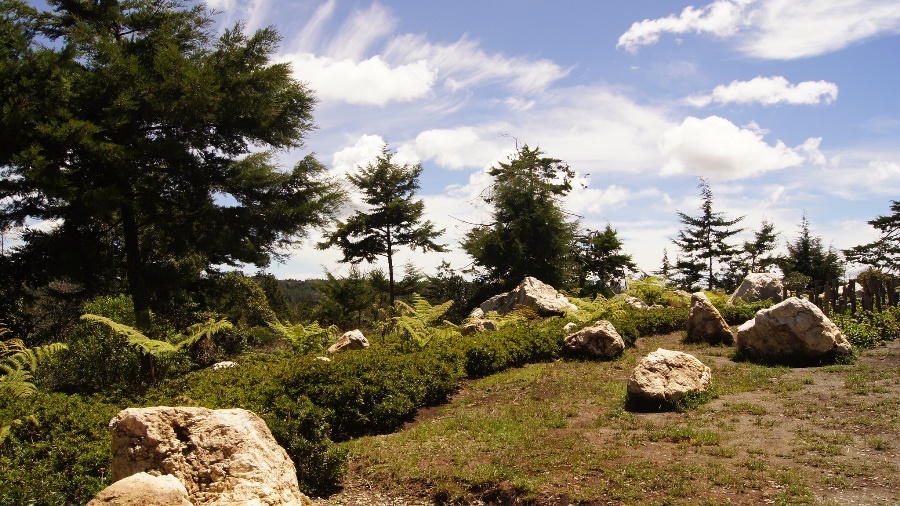
Explore Guatape
Probably our favorite area to explore near Medellin was the quaint town of Guatape, located about 2 hours from the city (you can take a bus or taxi there). Guatape is easy on the eyes with its colorful buildings, cobblestone streets and cute shops and restaurants. We spent two days here (which felt like enough time) and absolutely fell in love with this town.
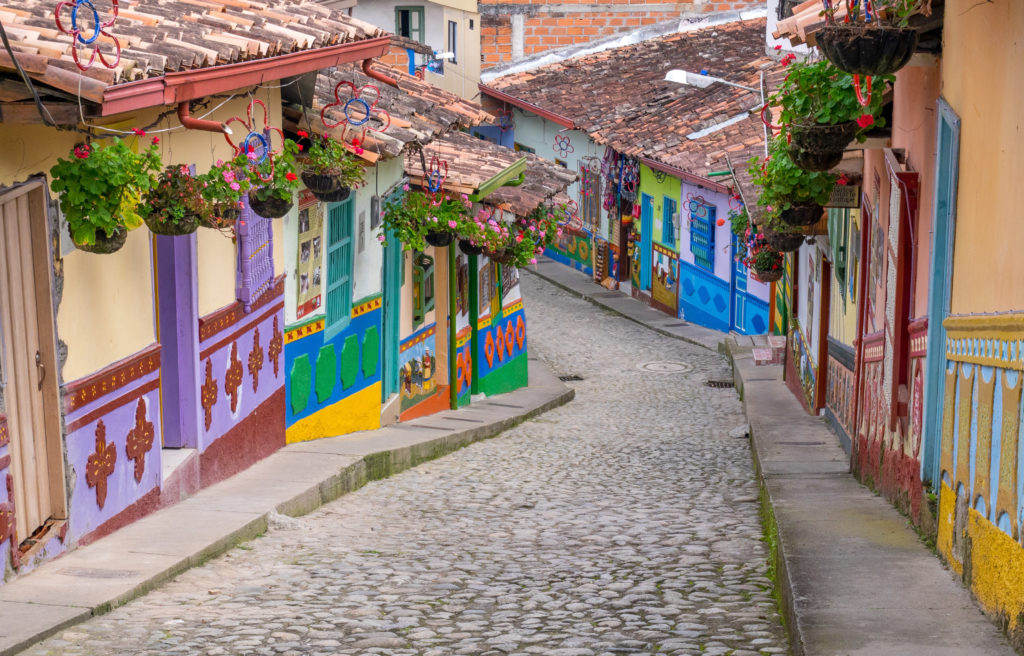
The main attraction in Guatape is the famous, massive sugarloaf-shaped rock (resembling the one in Brazil) named El Penon. To get there, take a 10 min moto-taxi ride from Guatape to the base of this monolith rock where you will ascend the 740+ steps to the top. Worth the climb? You be the judge.
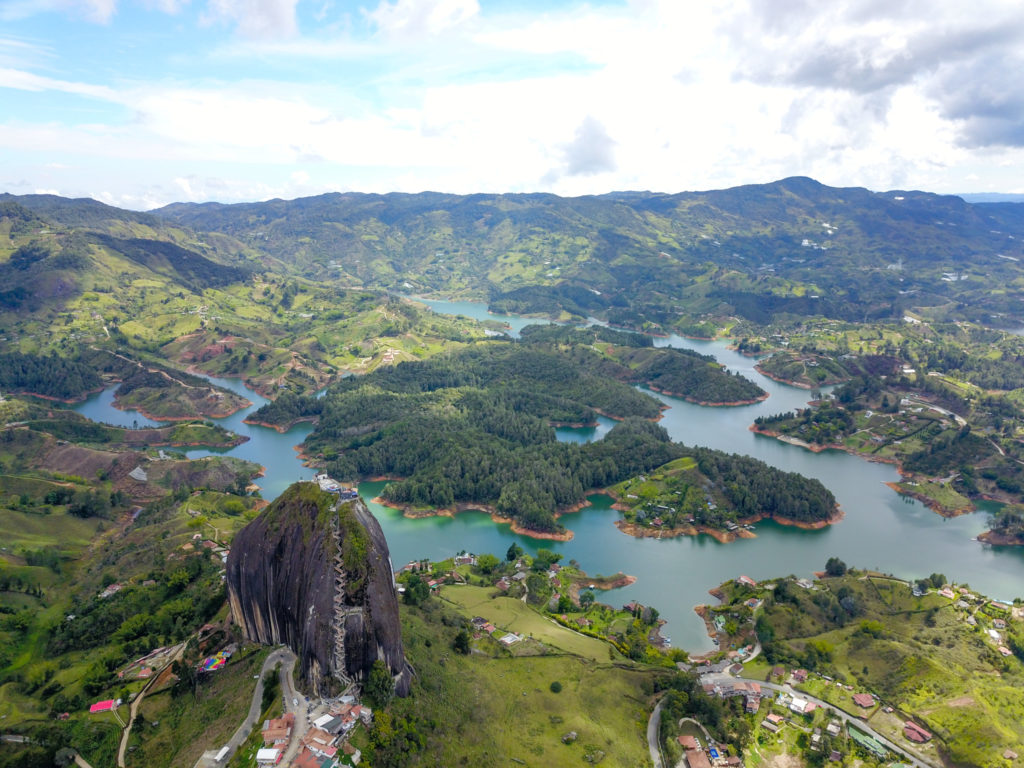
The surrounding views of the lake and mountains surrounding El Penon are astounding and a must-see attraction while in Colombia. In fact, it was the main reason we traveled to Medellin in the first place and it exceeded our expectations! Our advice is to go to El Penon early in the morning at 8AM or late afternoon around 4PM to avoid the mid-day crowds (and also the warmer temperatures). The entrance fee is around $6 per person.
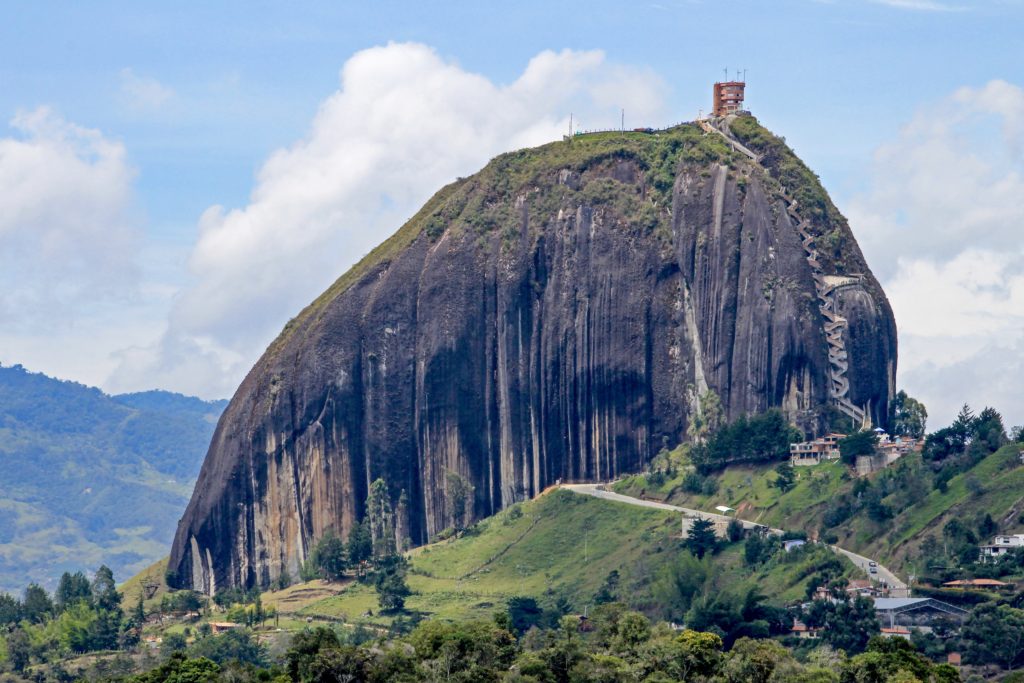
Optional Add-On: Hike the Cocora Valley
Not far from the coffee farms of Quindio, you’ll find the Cocora Valley; a cloud forest that the unique and towering — up to 200 feet — protected wax palm calls home. Since you will end your trip in Medellin (after you return from Guatape), the Cocora Valley is a great extension from Medellin if you have the time and at least 2 extra days.
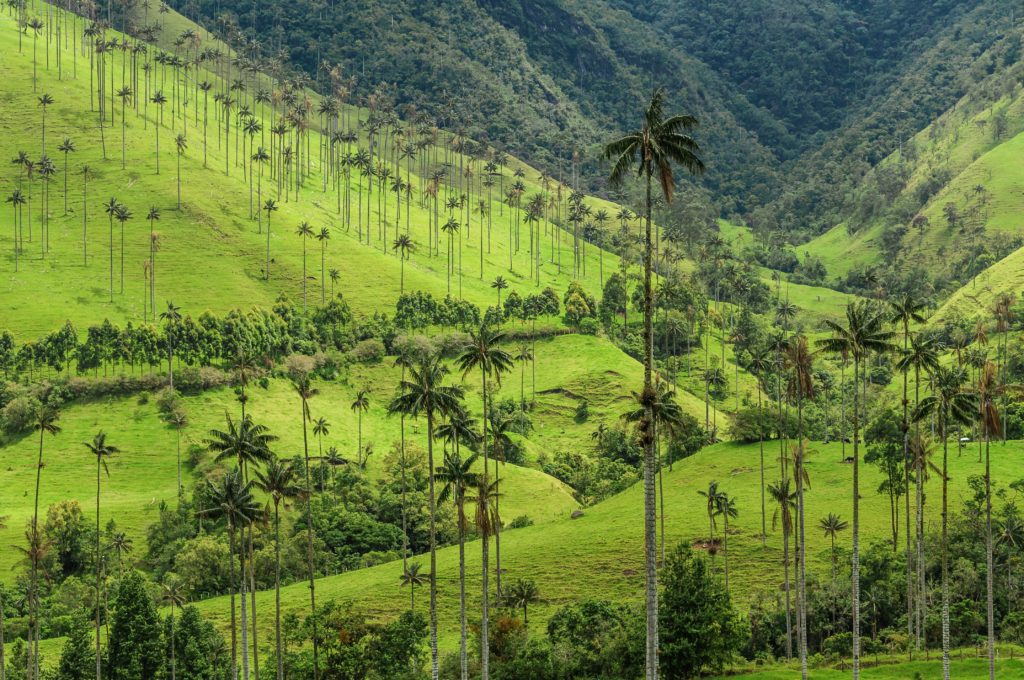
To get to Cocora, you will need to take a bus from Medellin to Salento. Depending on the type of bus (if it’s direct or indirect) and traffic, the drive can take anywhere from 6- 9 hours. If you’re looking to really maximize your time, you can take a night bus which leaves Medellin around 9PM and arrives early in the morning the next day. This gives you a whole day to explore and hike the Cocora Valley before returning on another night bus (this option also saves on hotel costs!).
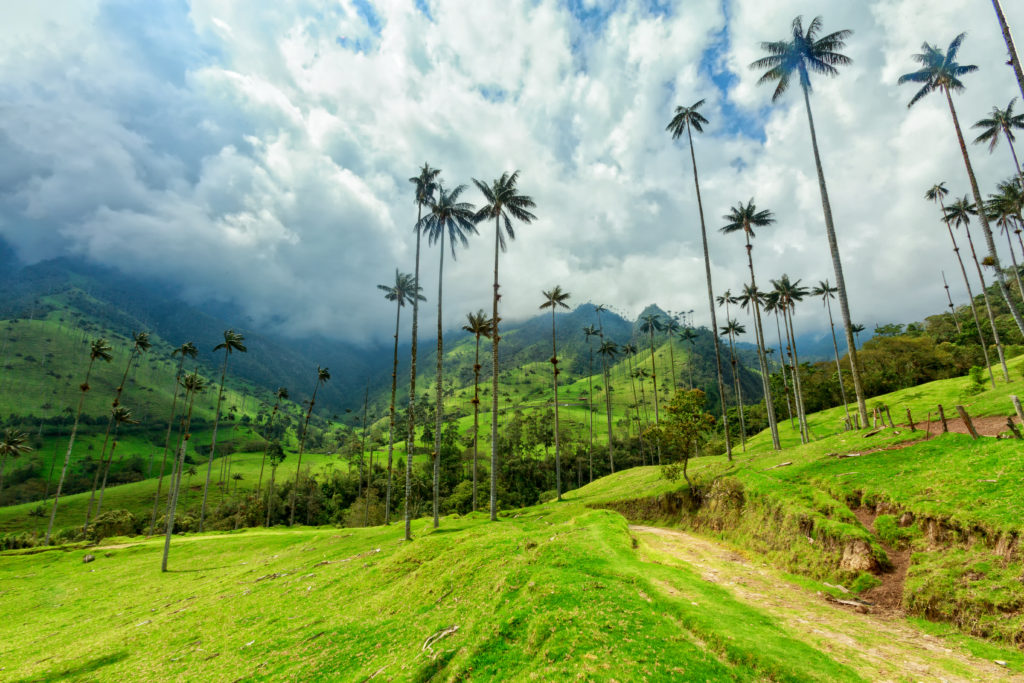
If night buses aren’t your thing, you can always elect to take a direct bus in the morning (departure times start around 4AM) from Medellin and arrive in Salento 6.5 hours later. The two main bus lines in Colombia are Flota Occidental and Empresa Arauca and both leave from the Terminal de Transportes del Sur in Medellin.
Hiking the Cocora Valley takes about 6ish hours and is very muddy, so make sure to wear good shoes or even boots. The hike is stunning though and worth the extra trip if your schedule allows. Other things to do in Cocora are visit a local coffee farm, go horseback riding, or just stroll the streets of Salento.
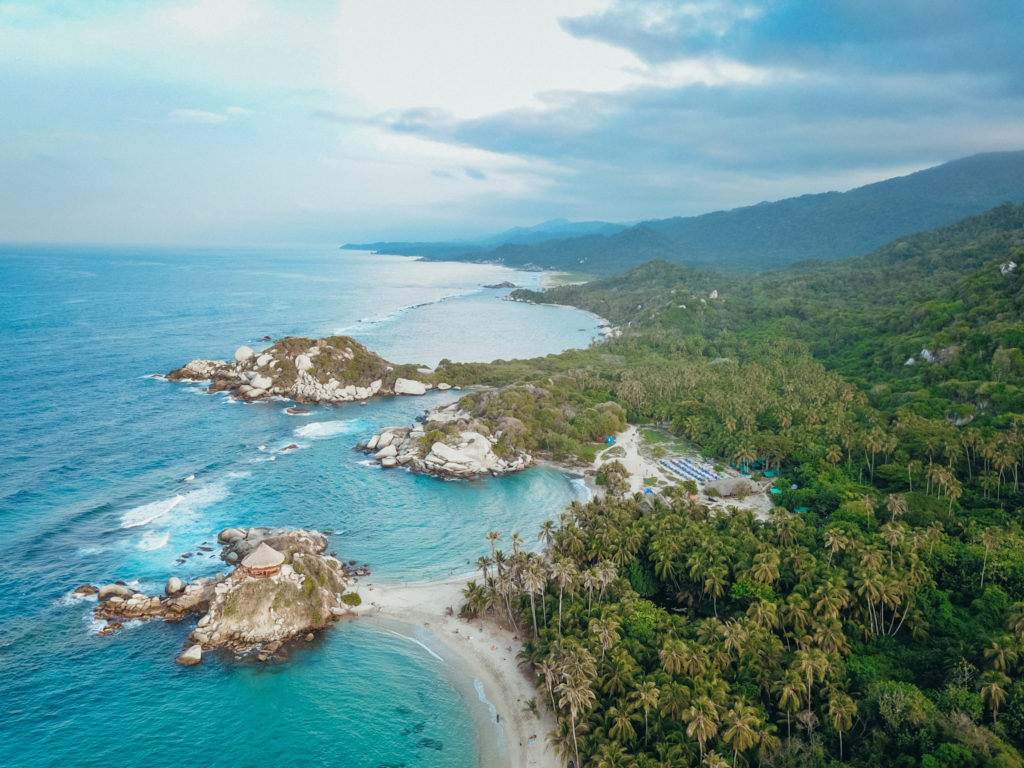
There is so much to explore in Colombia that even a month or two is barely scratching the surface, however by following this itinerary (with or without the add-ons), you will see some of the very best Colombia has to offer and fall in love with one of the most underrated countries in all of the world. You can also do what we did and take a boat from Panama to Colombia and island hop through the San Blas Islands. Talk about an epic, once-in-a-lifetime experience!!